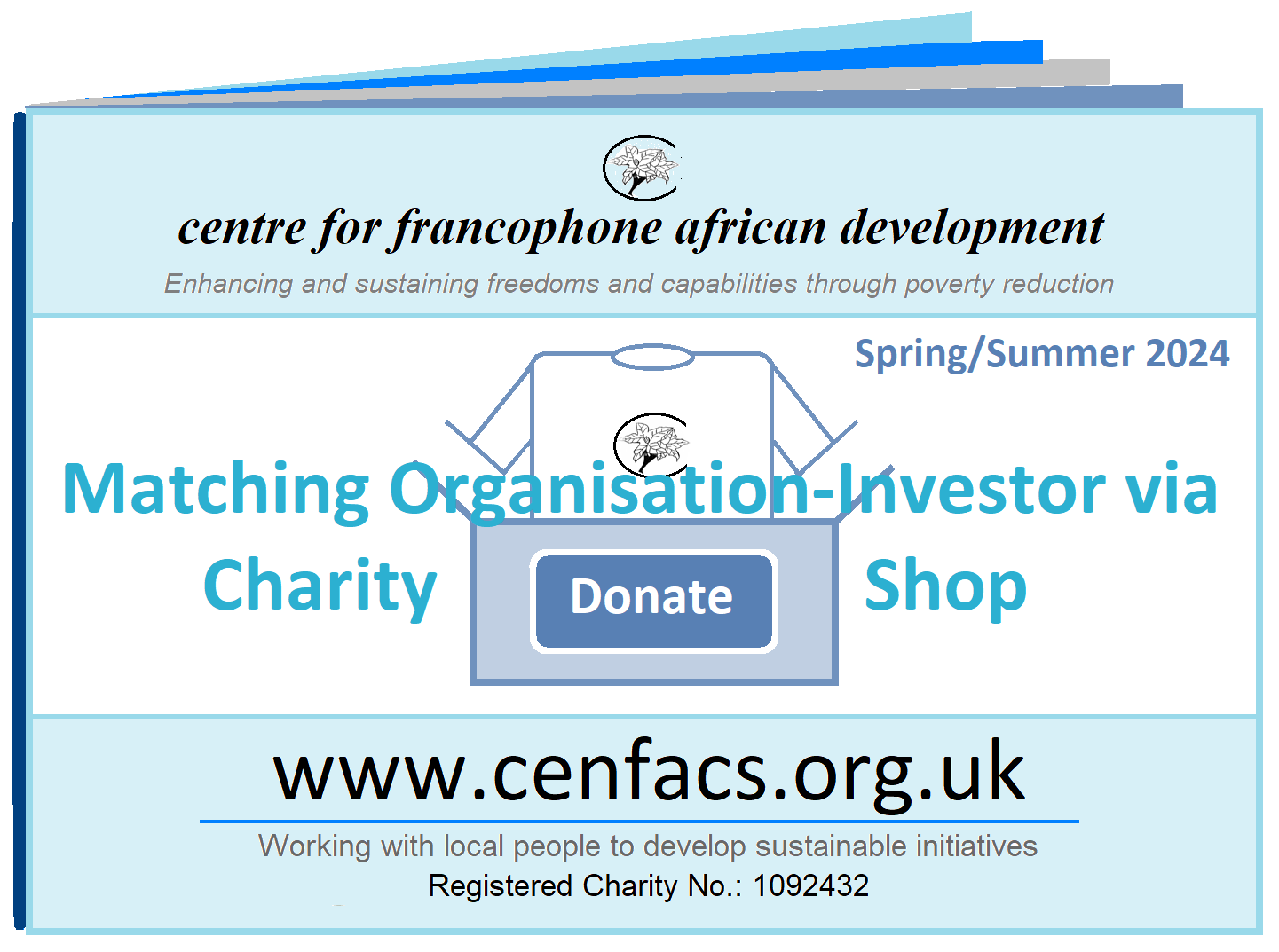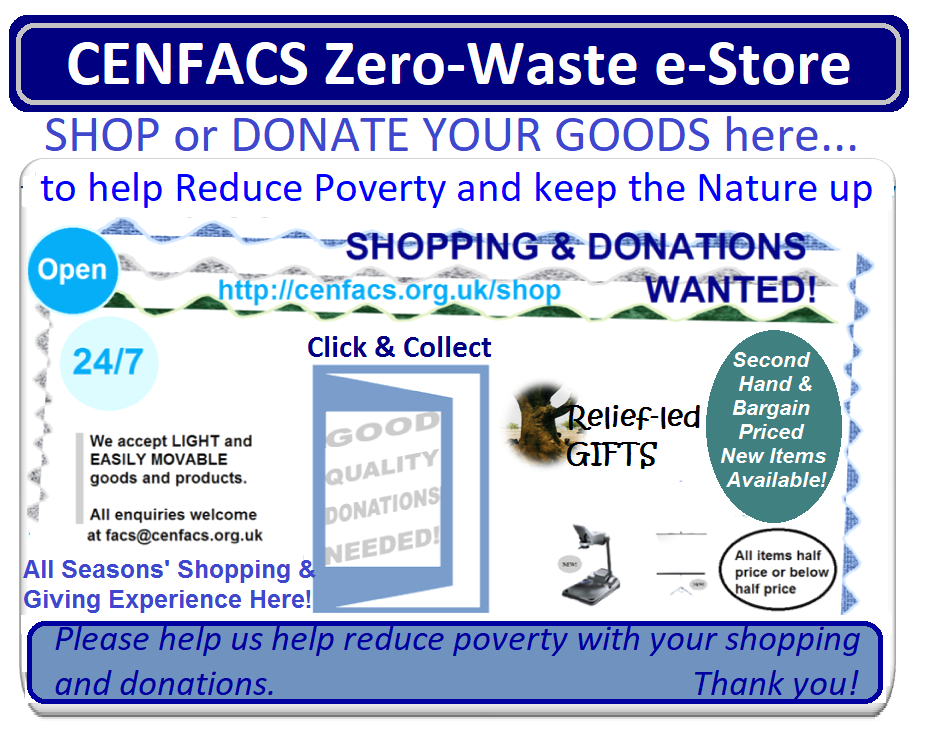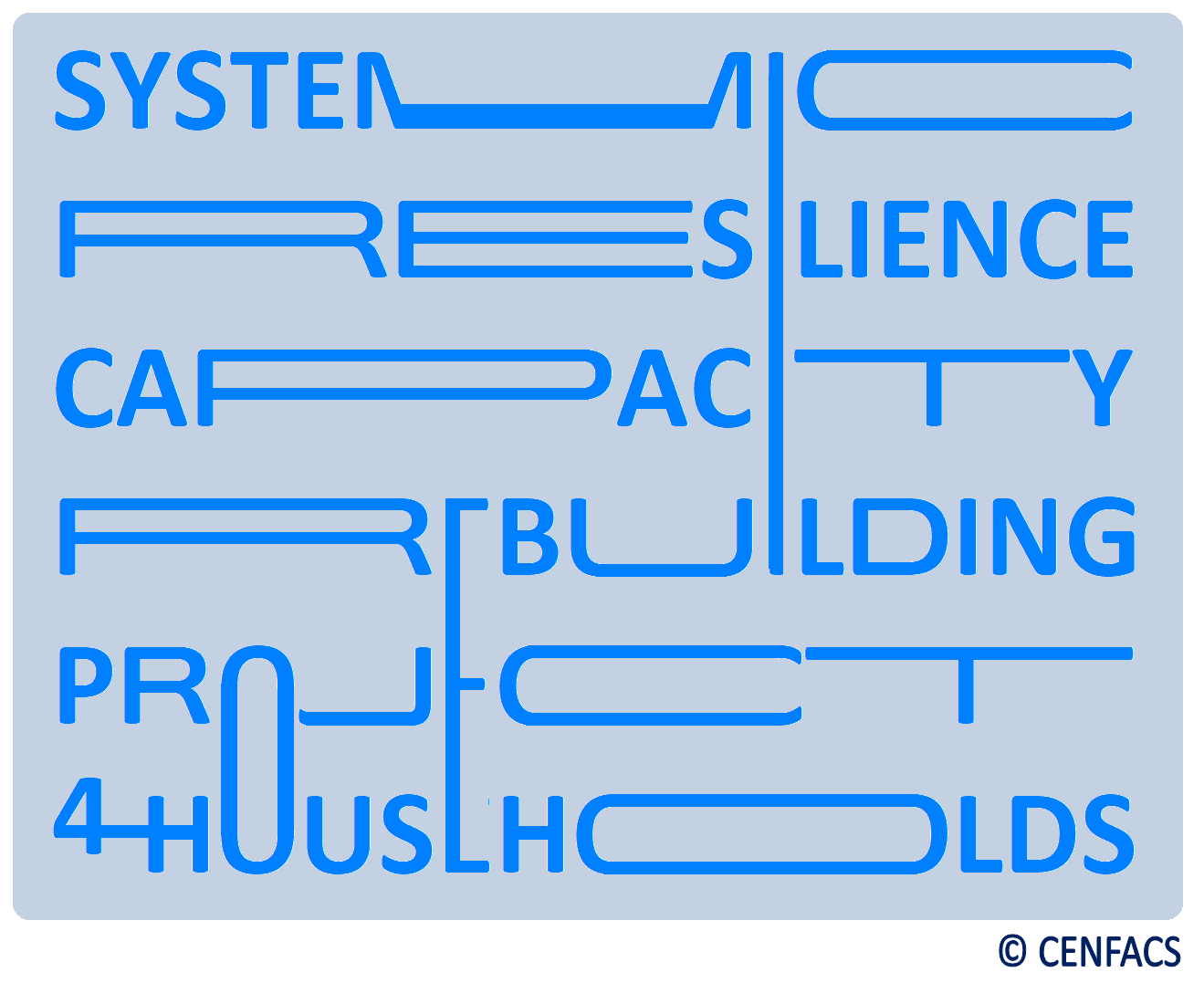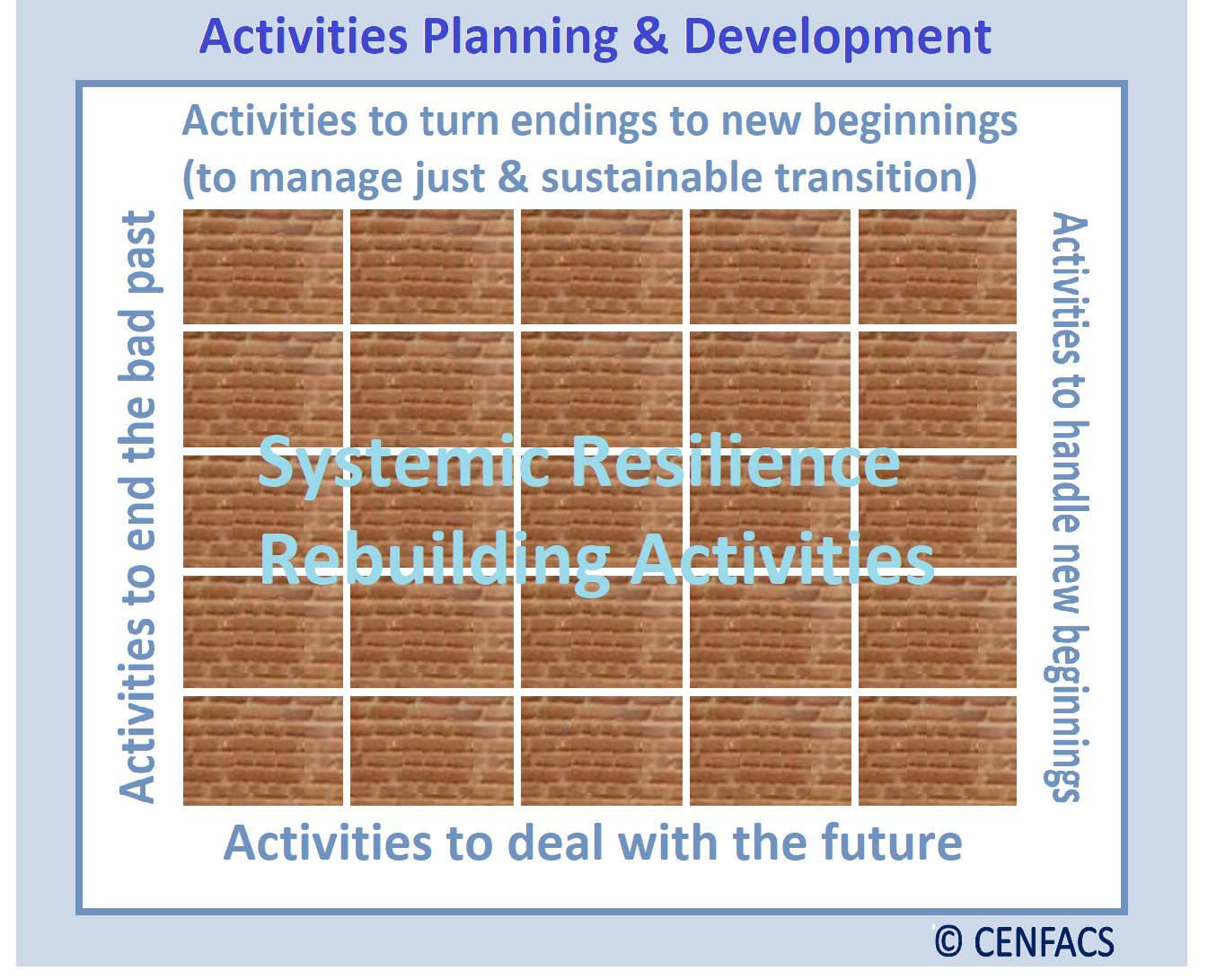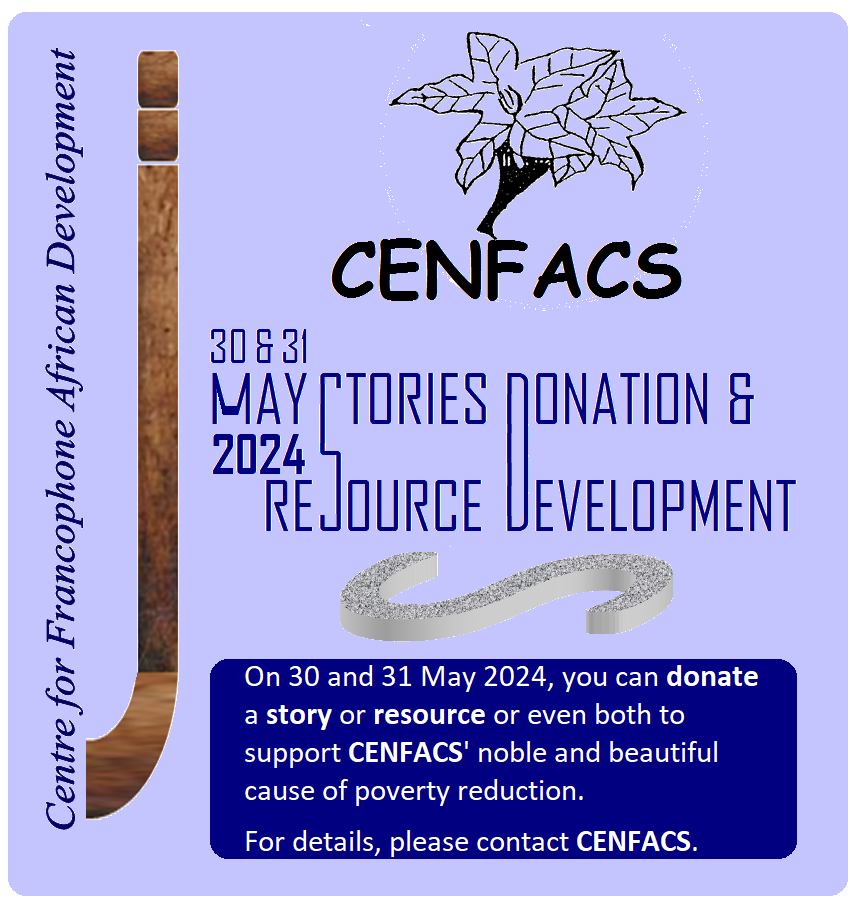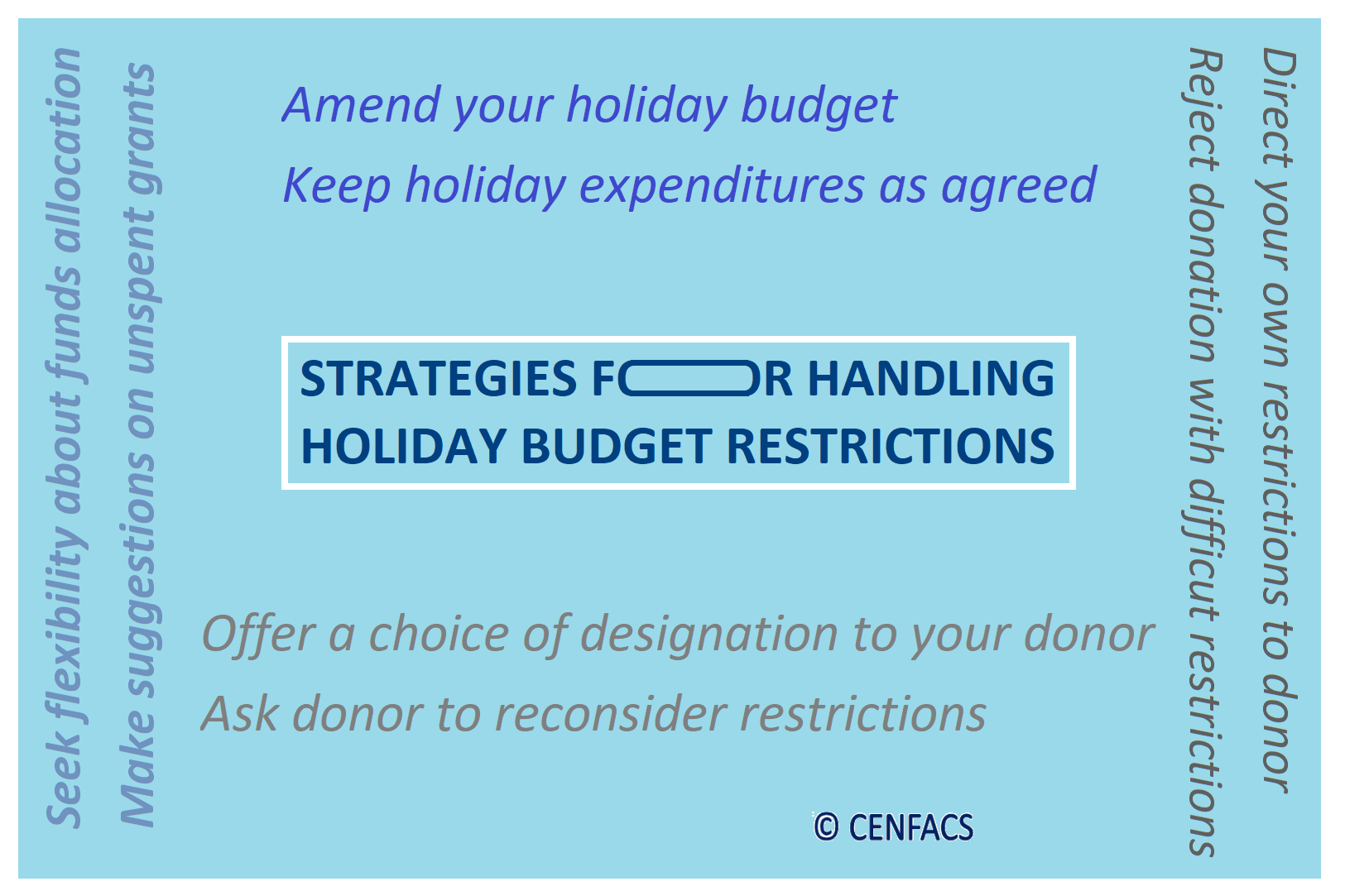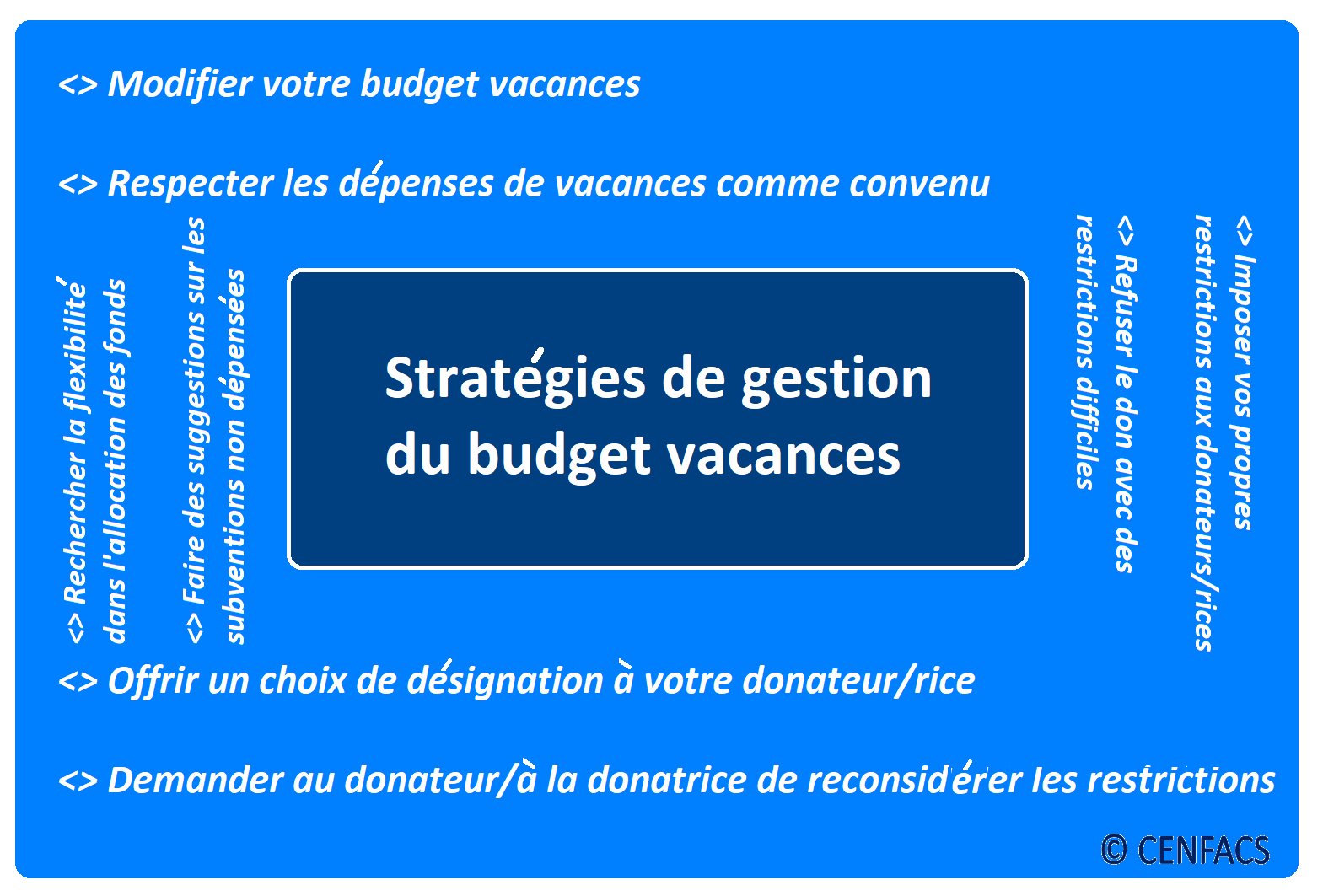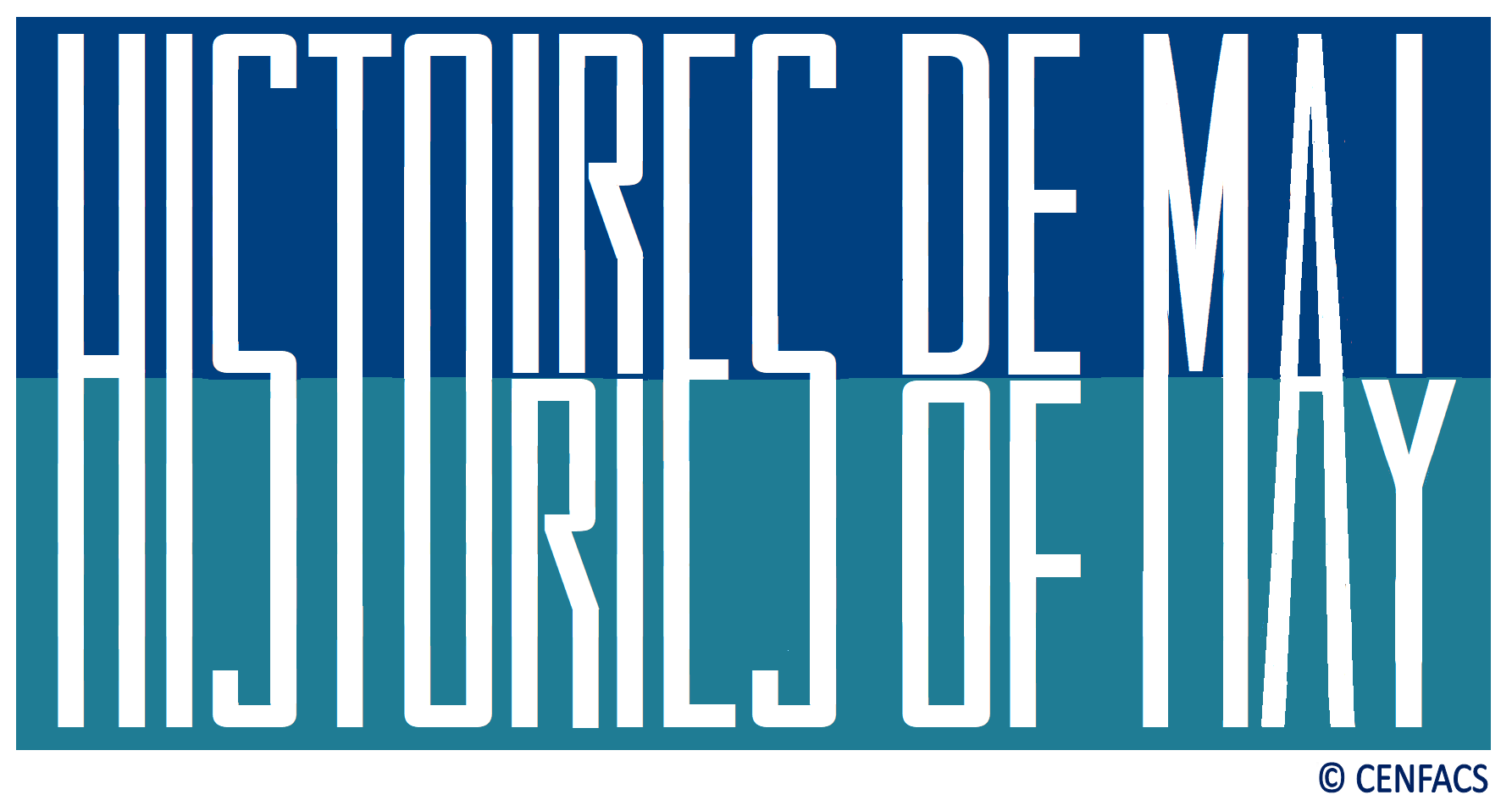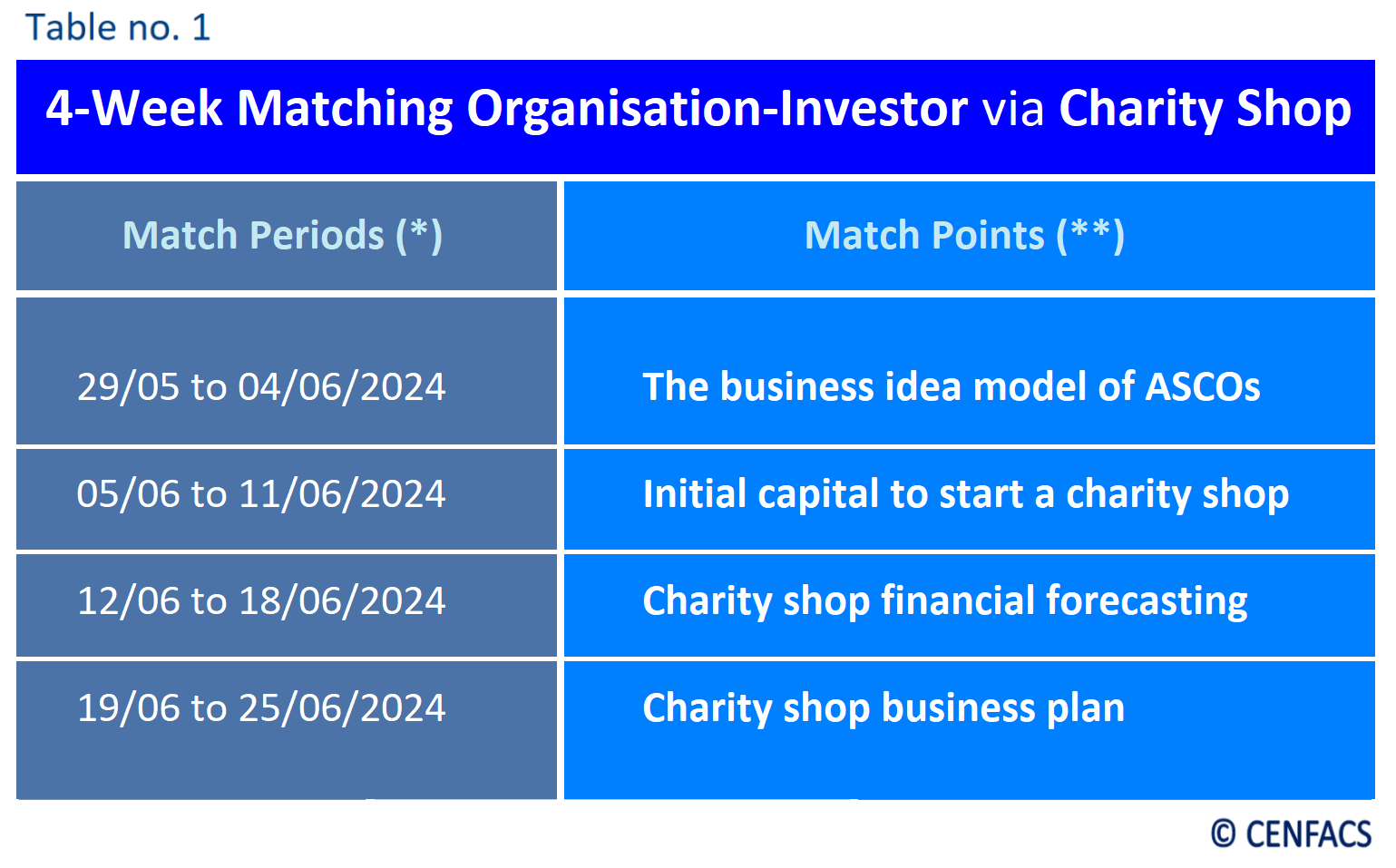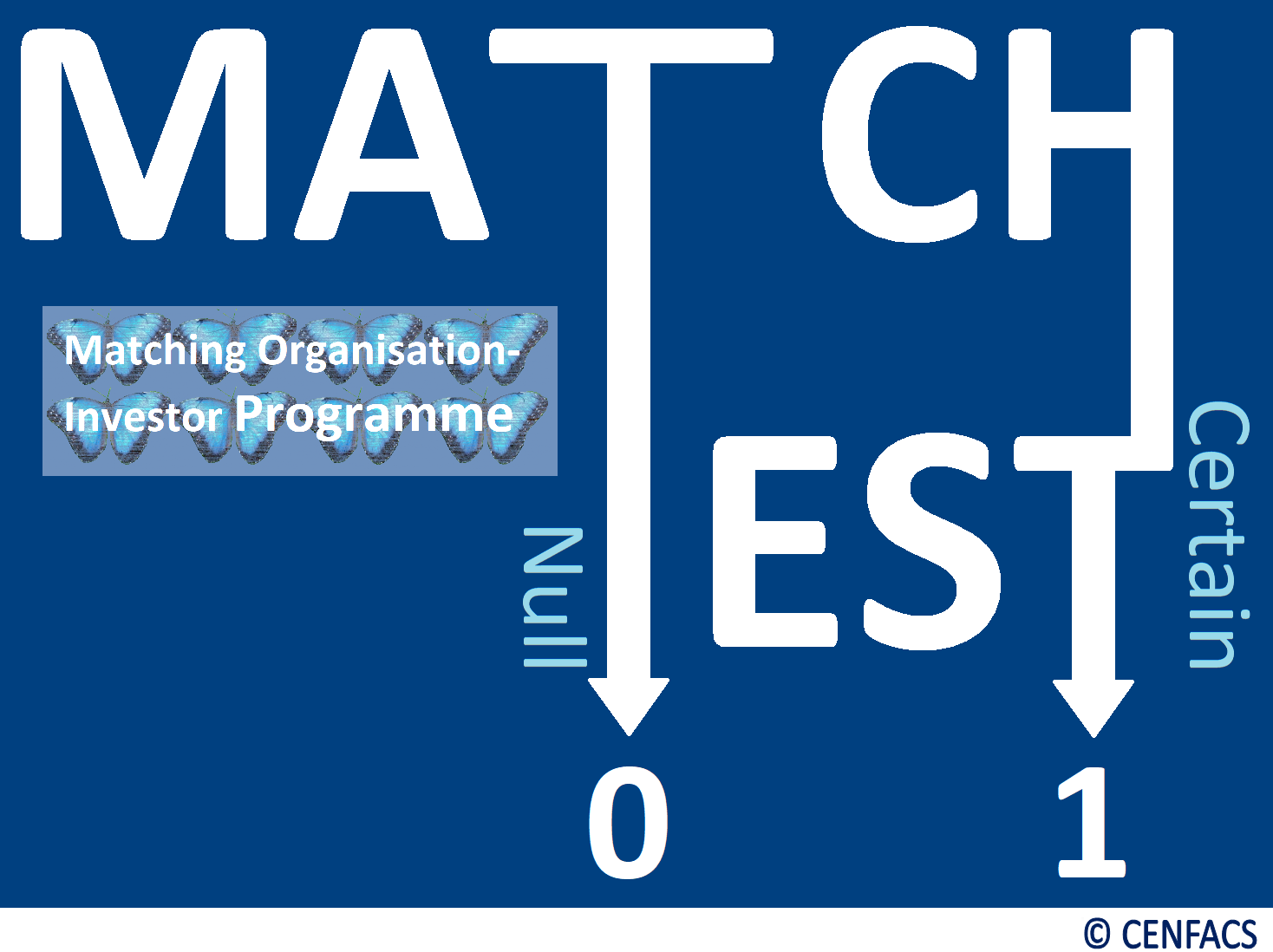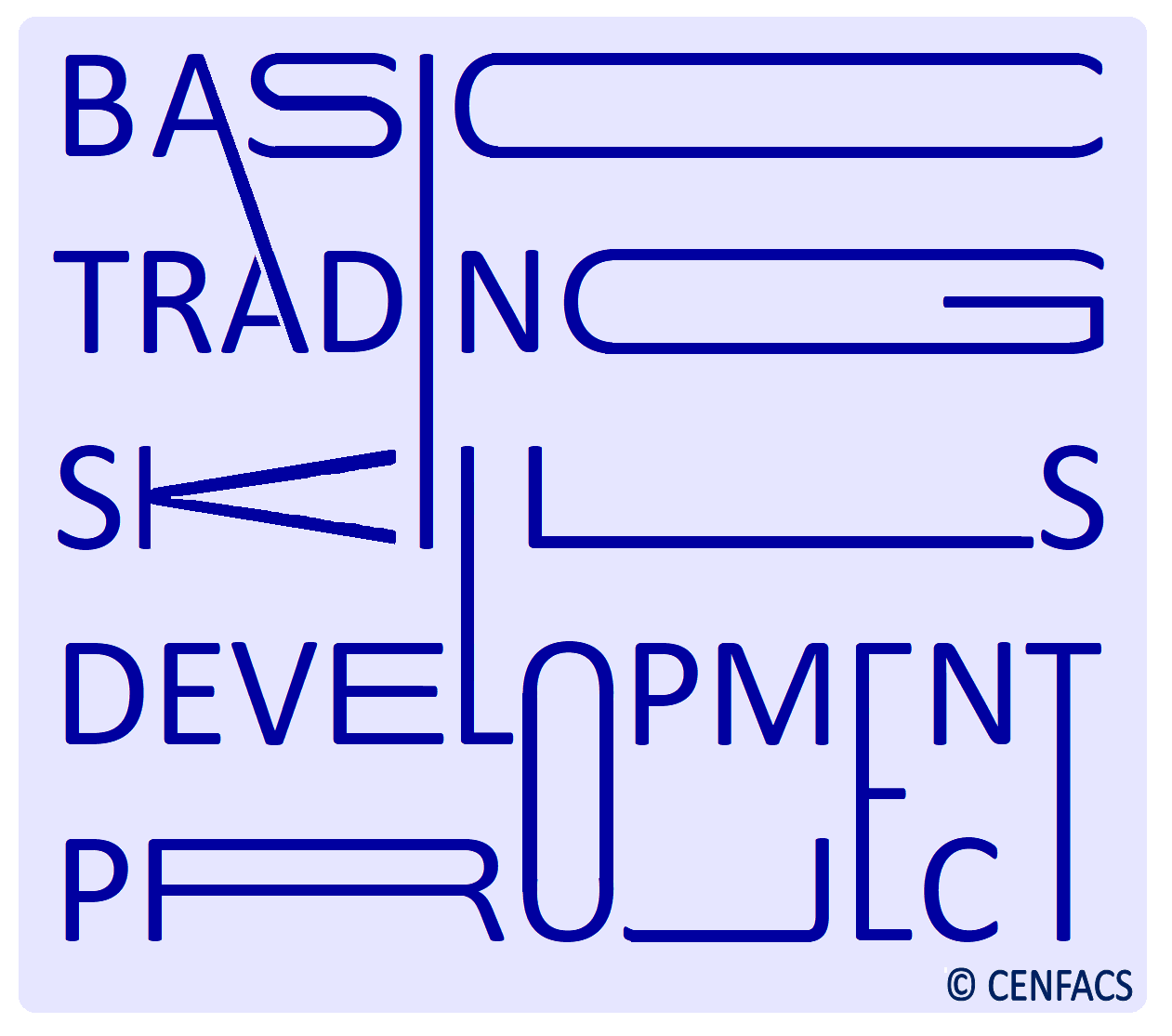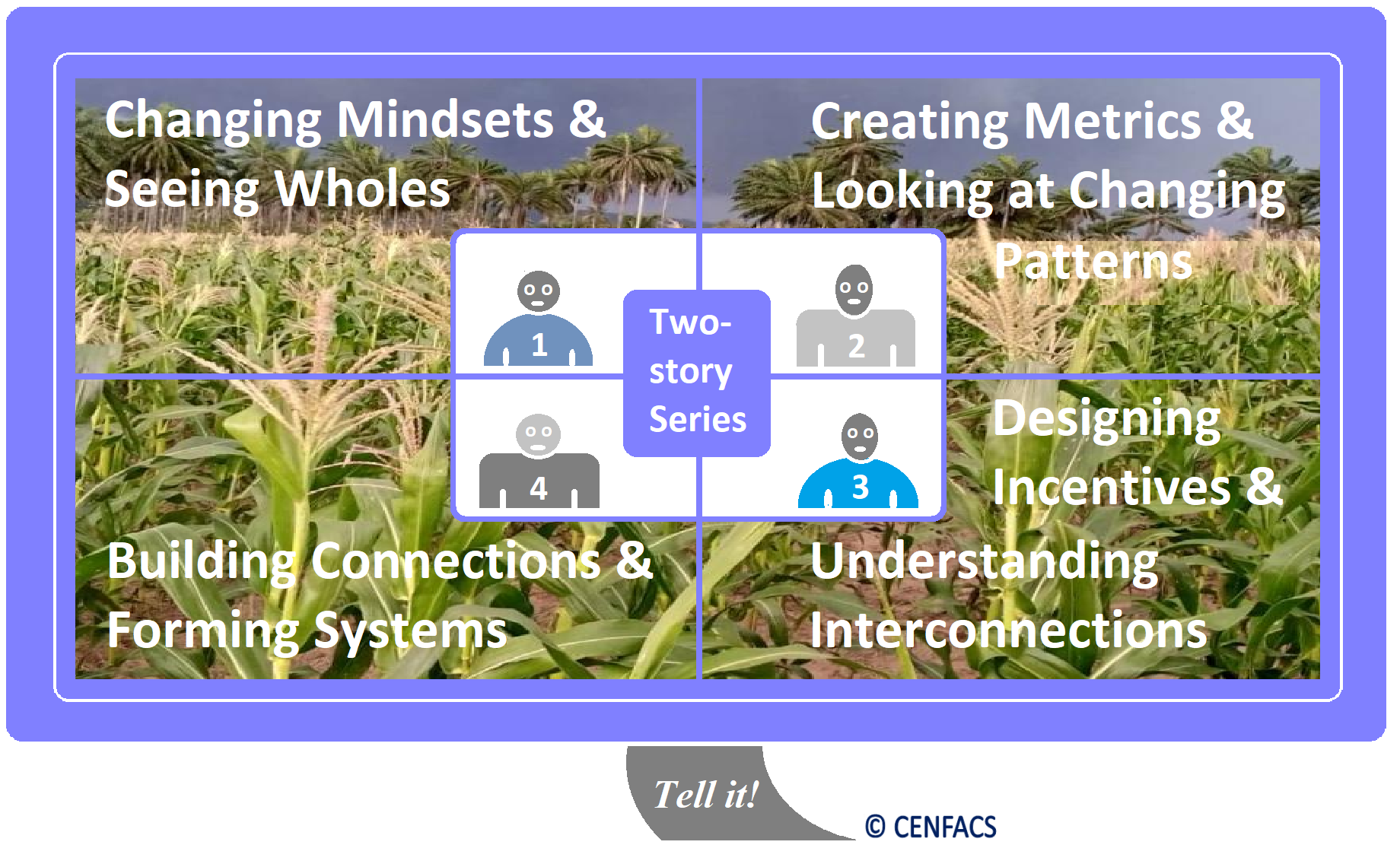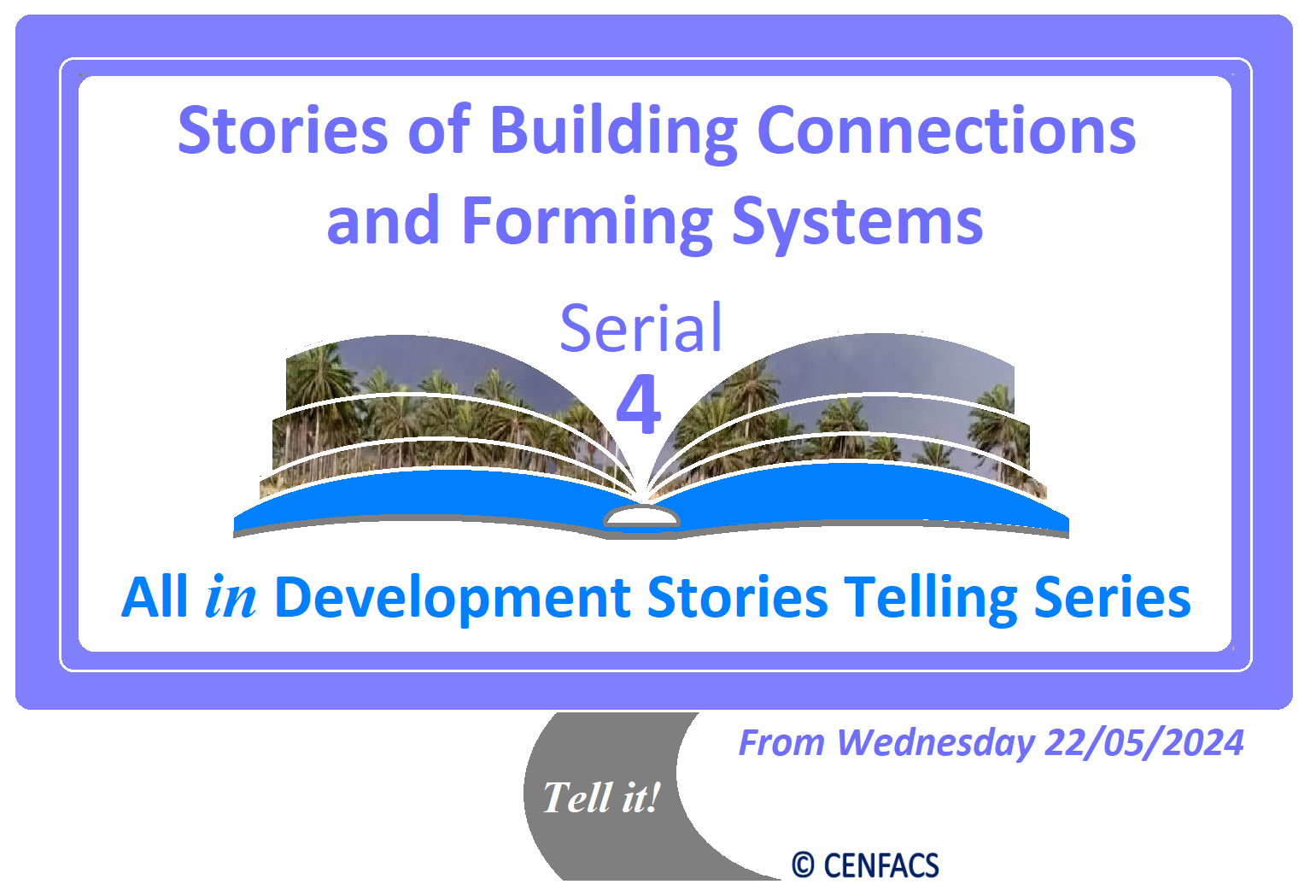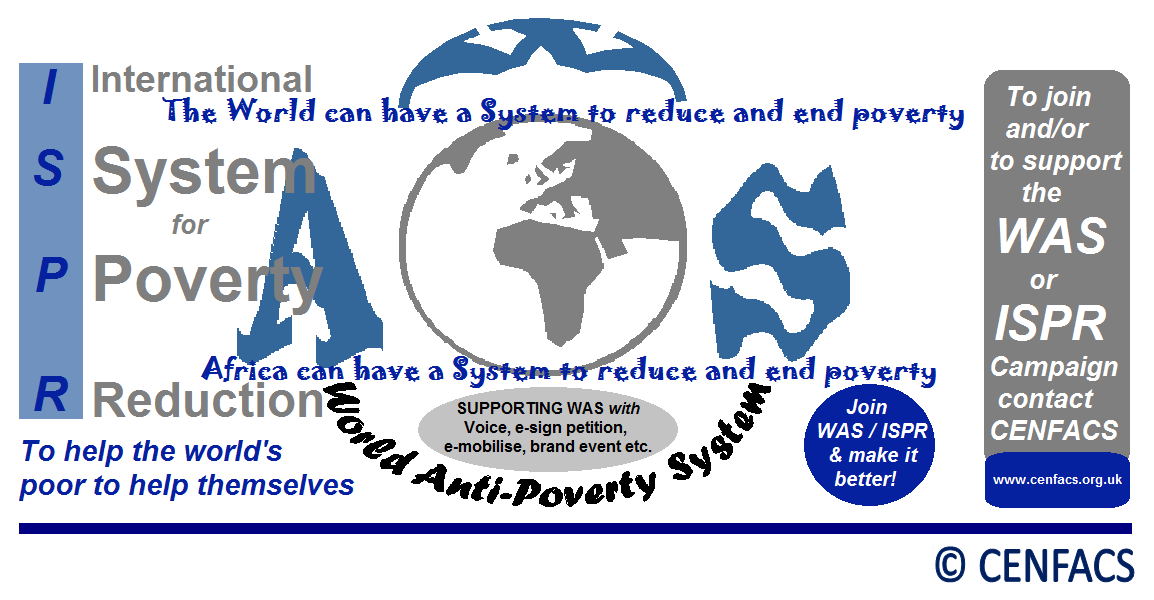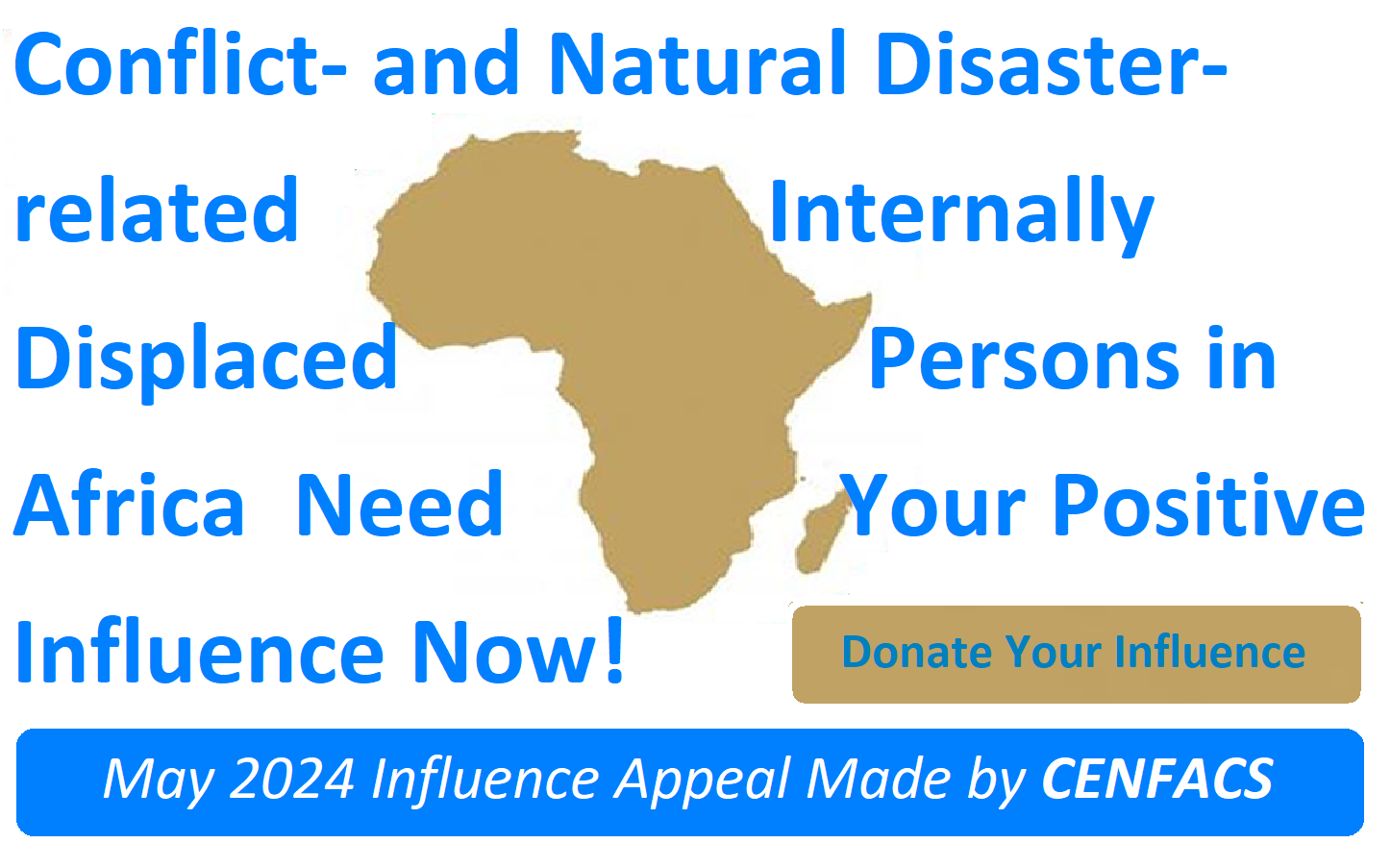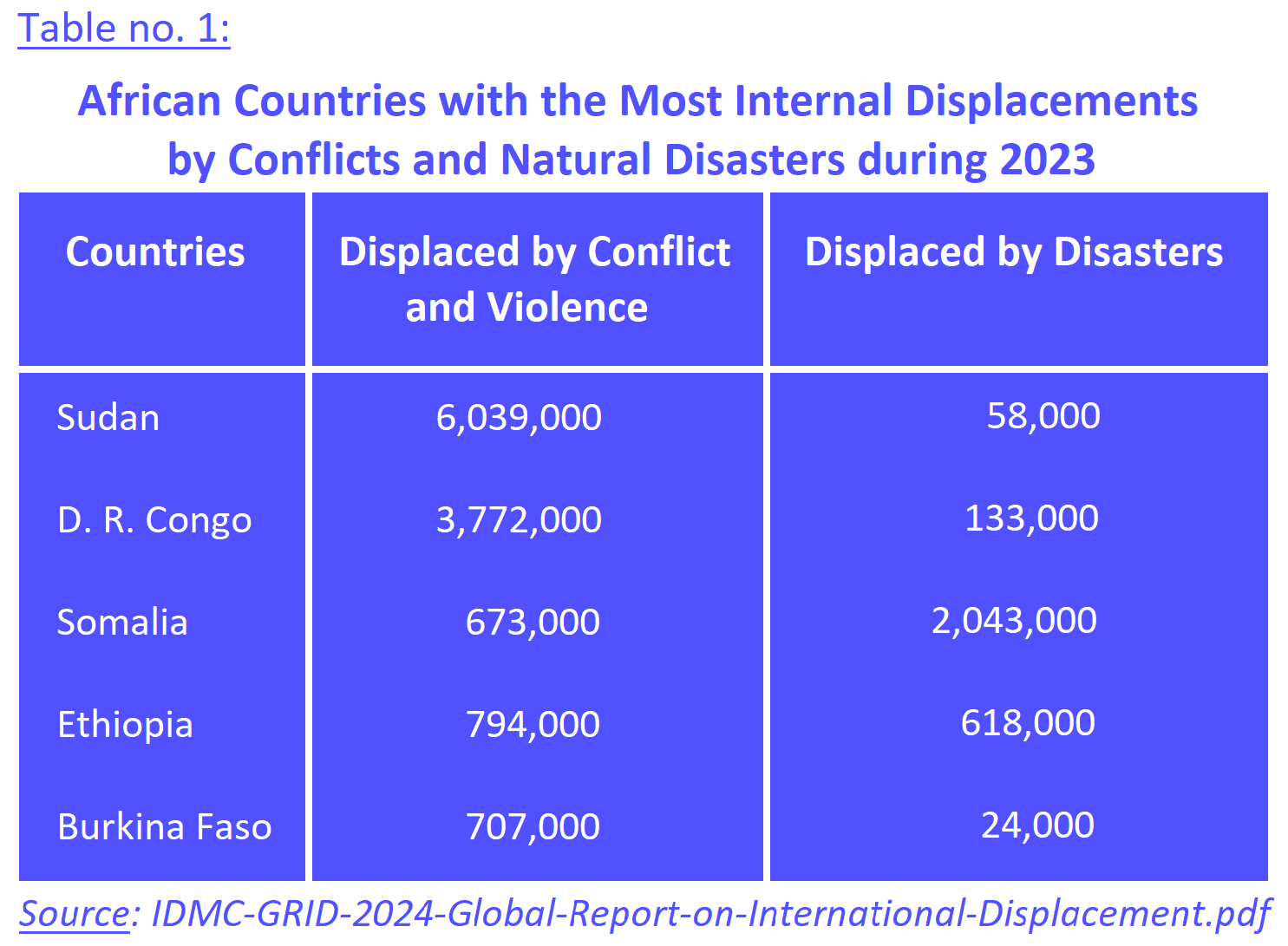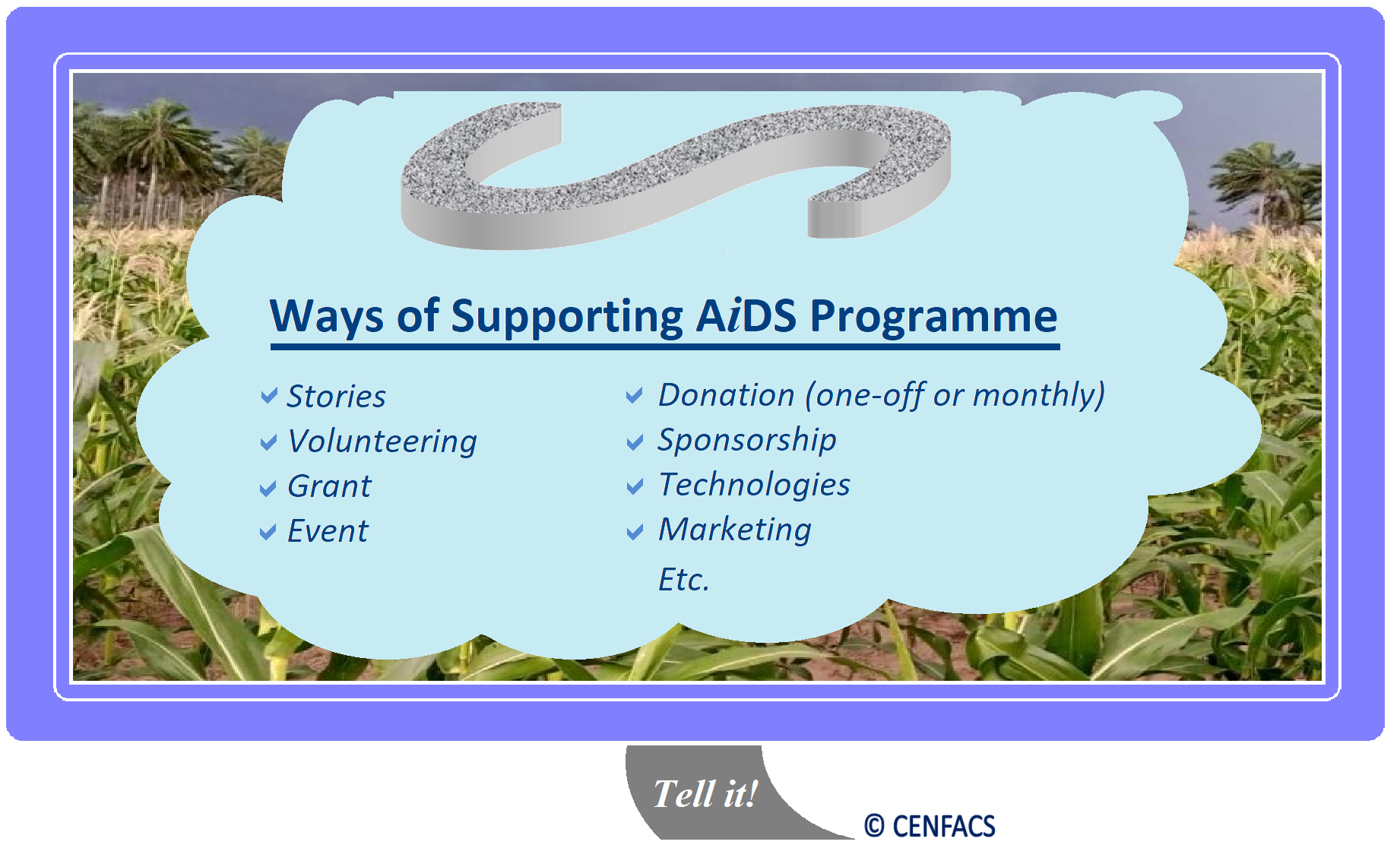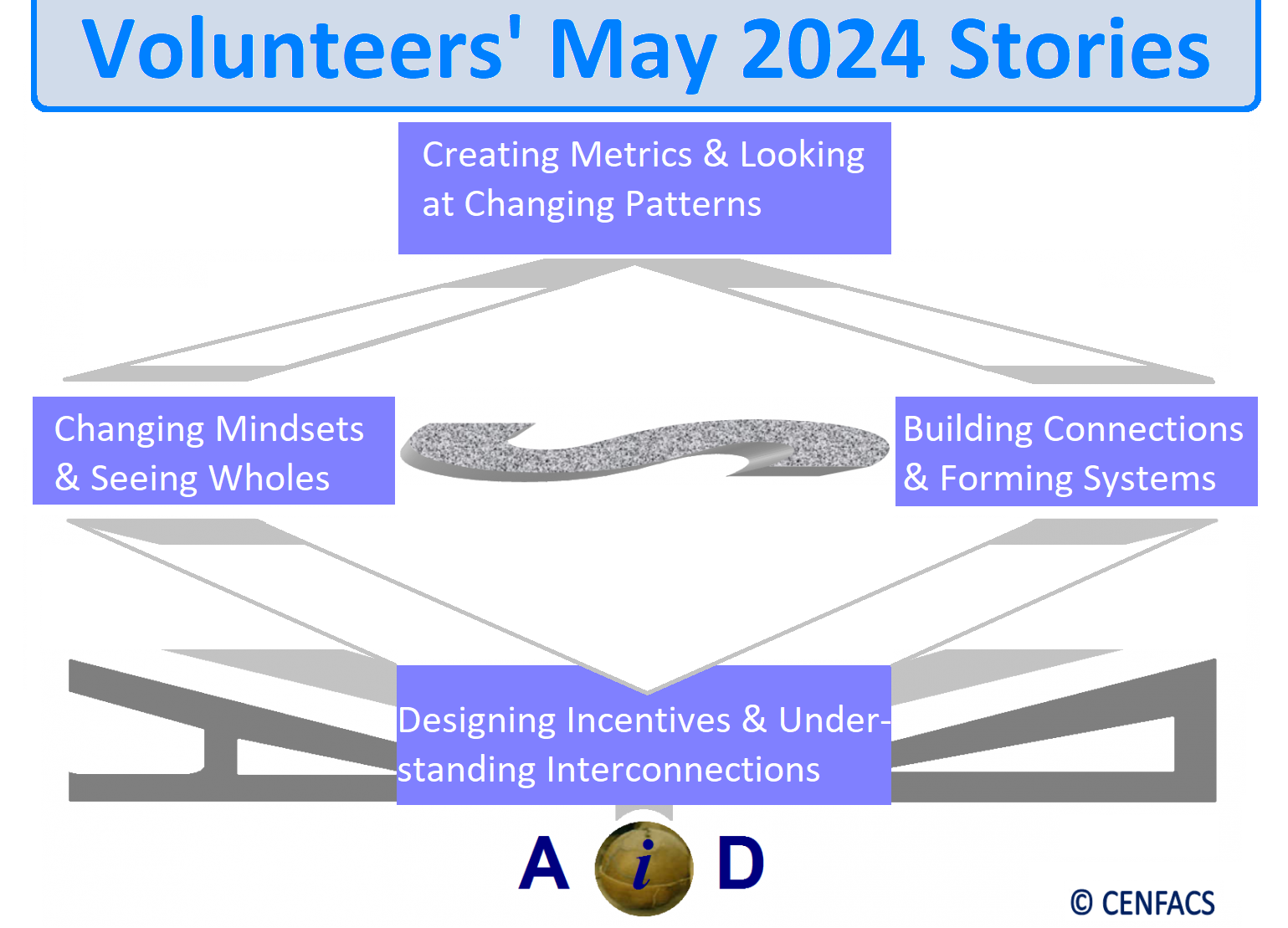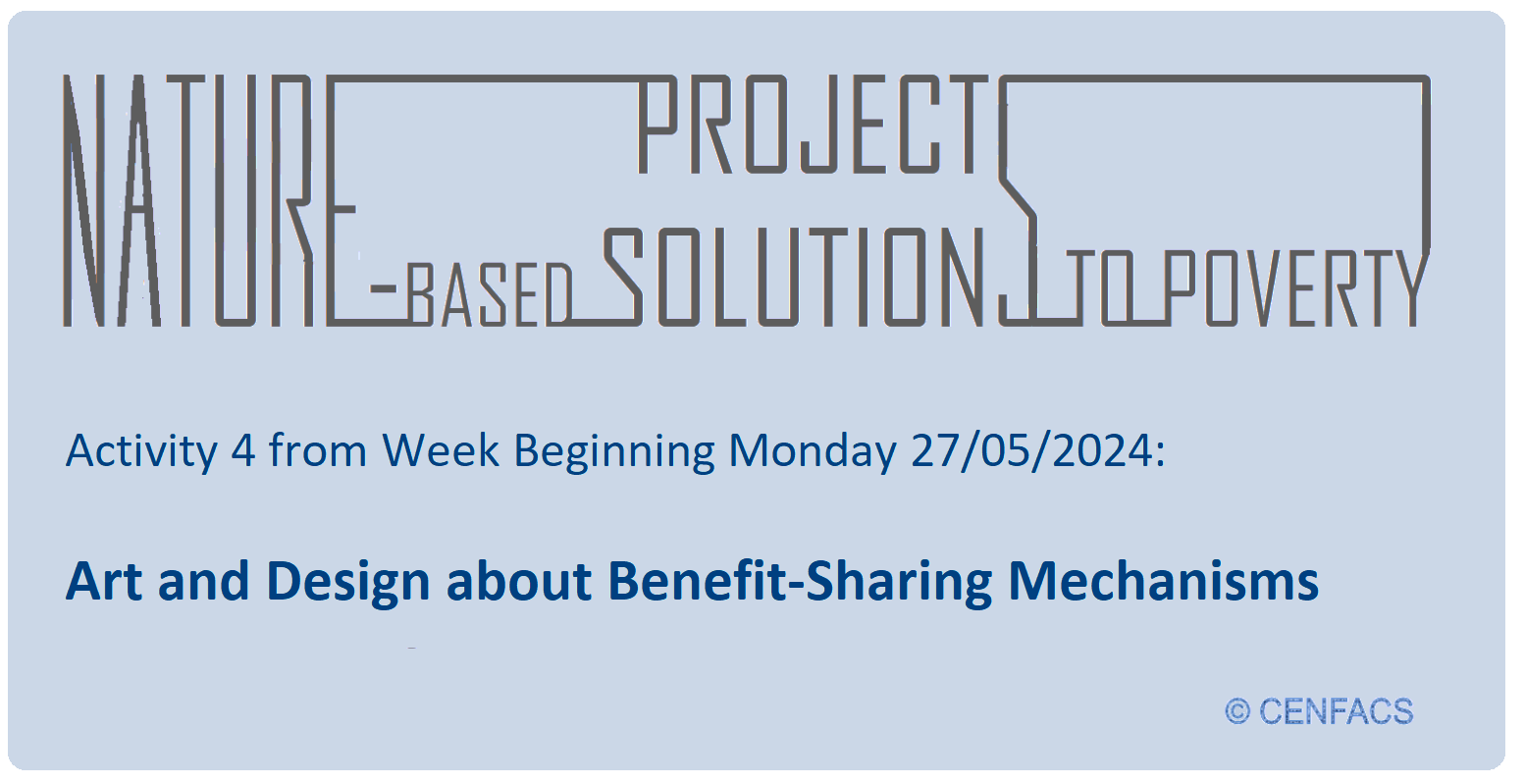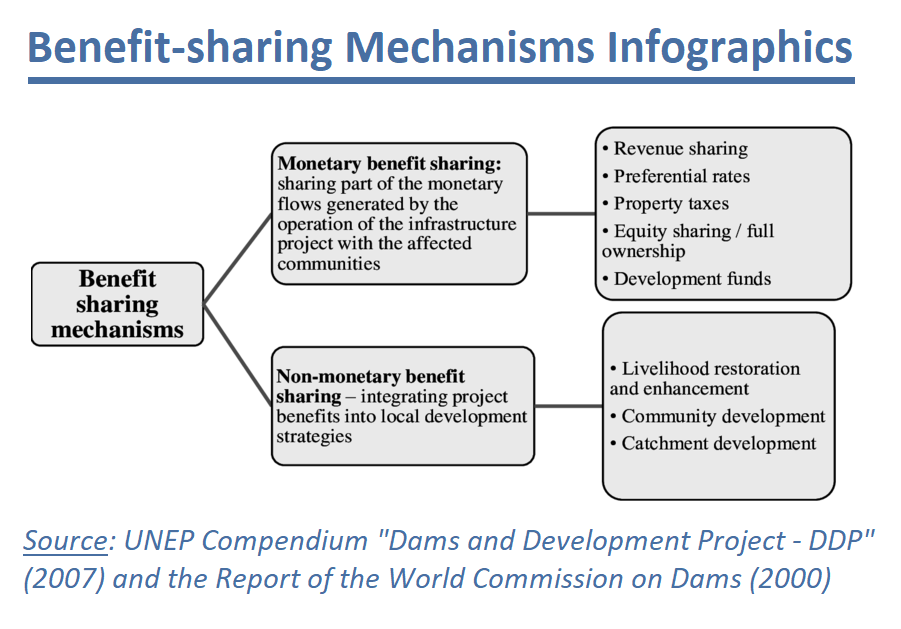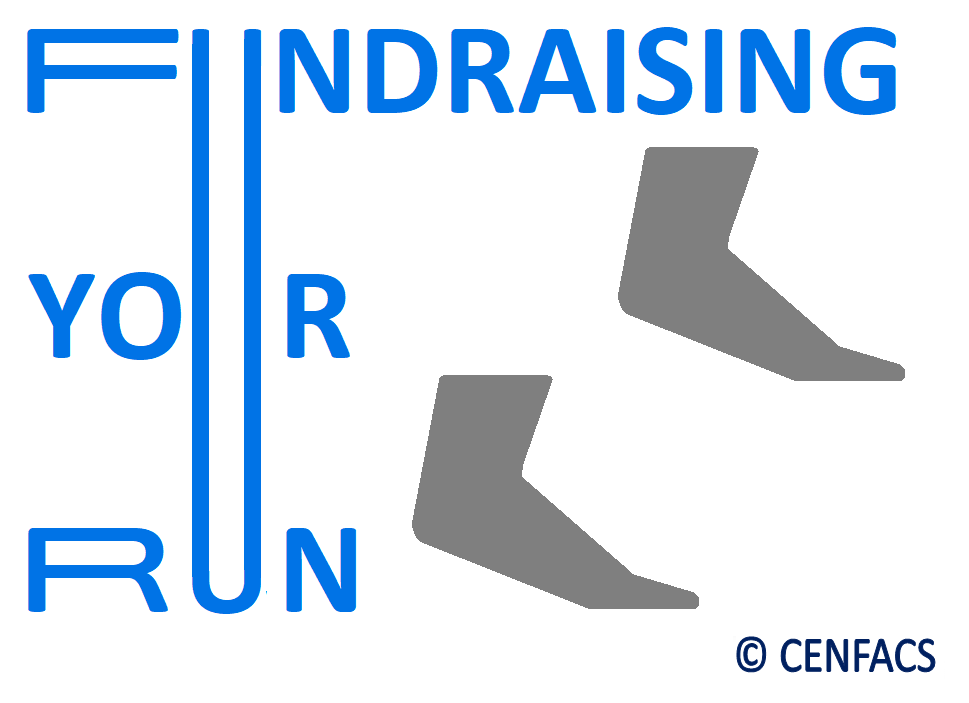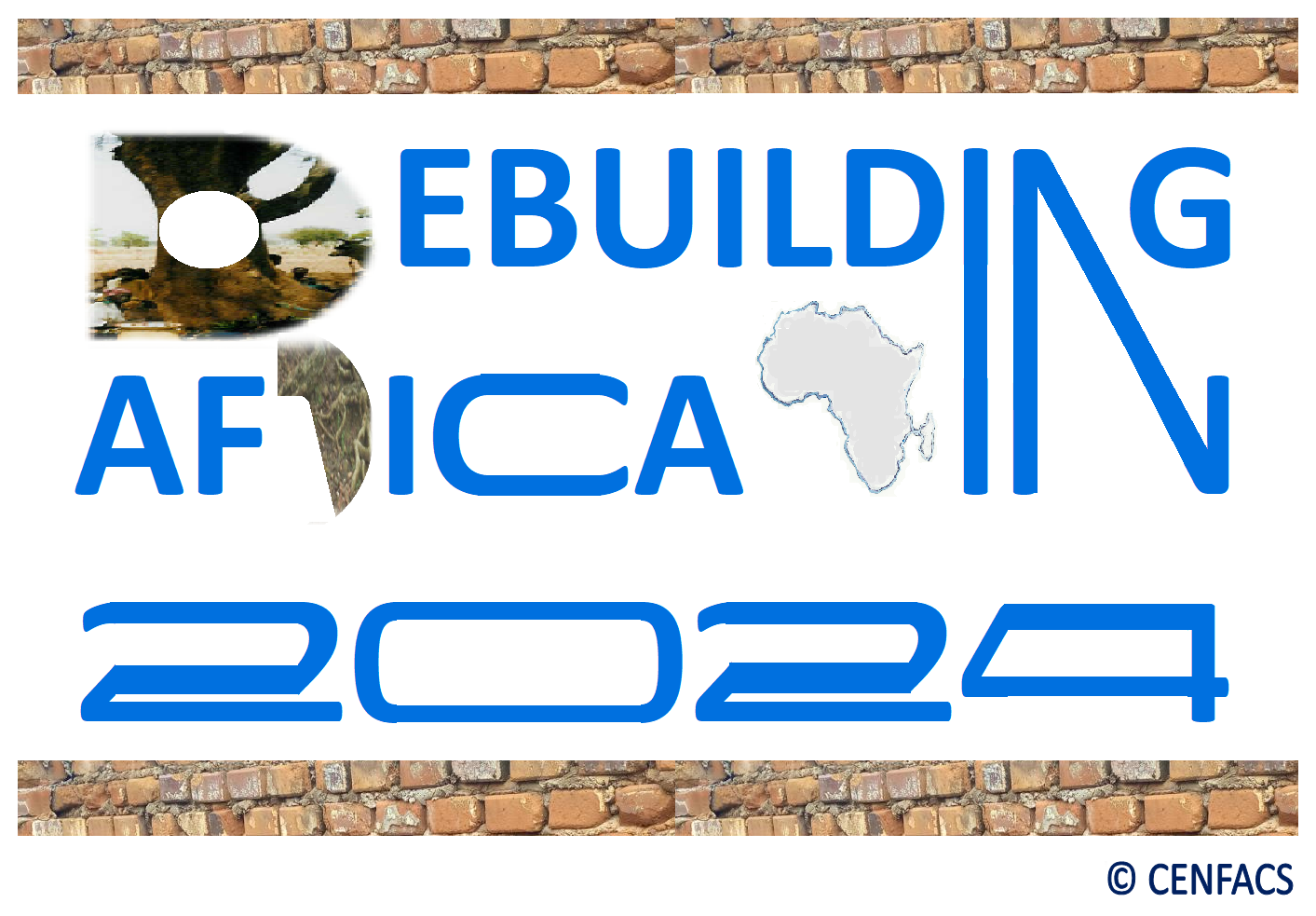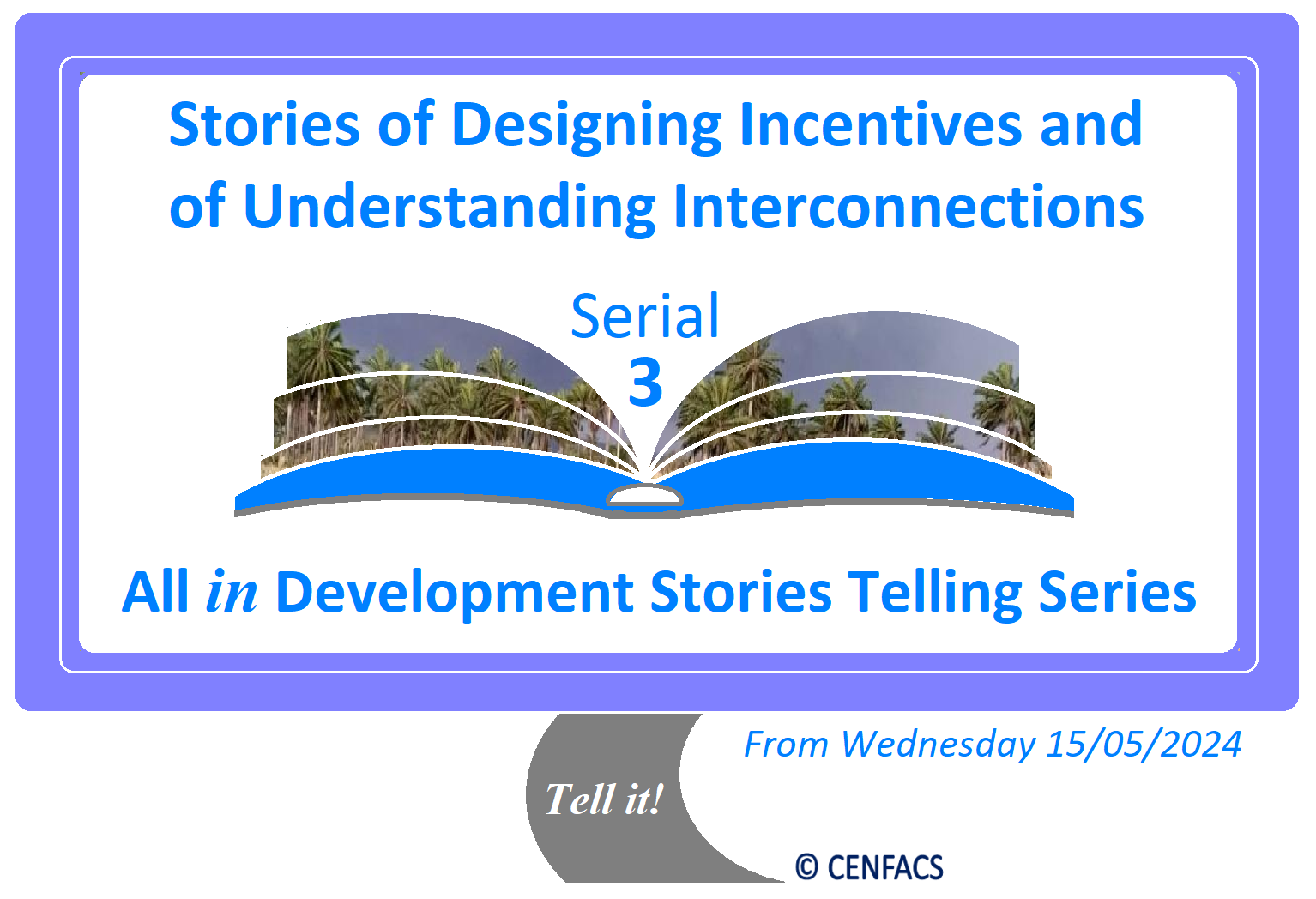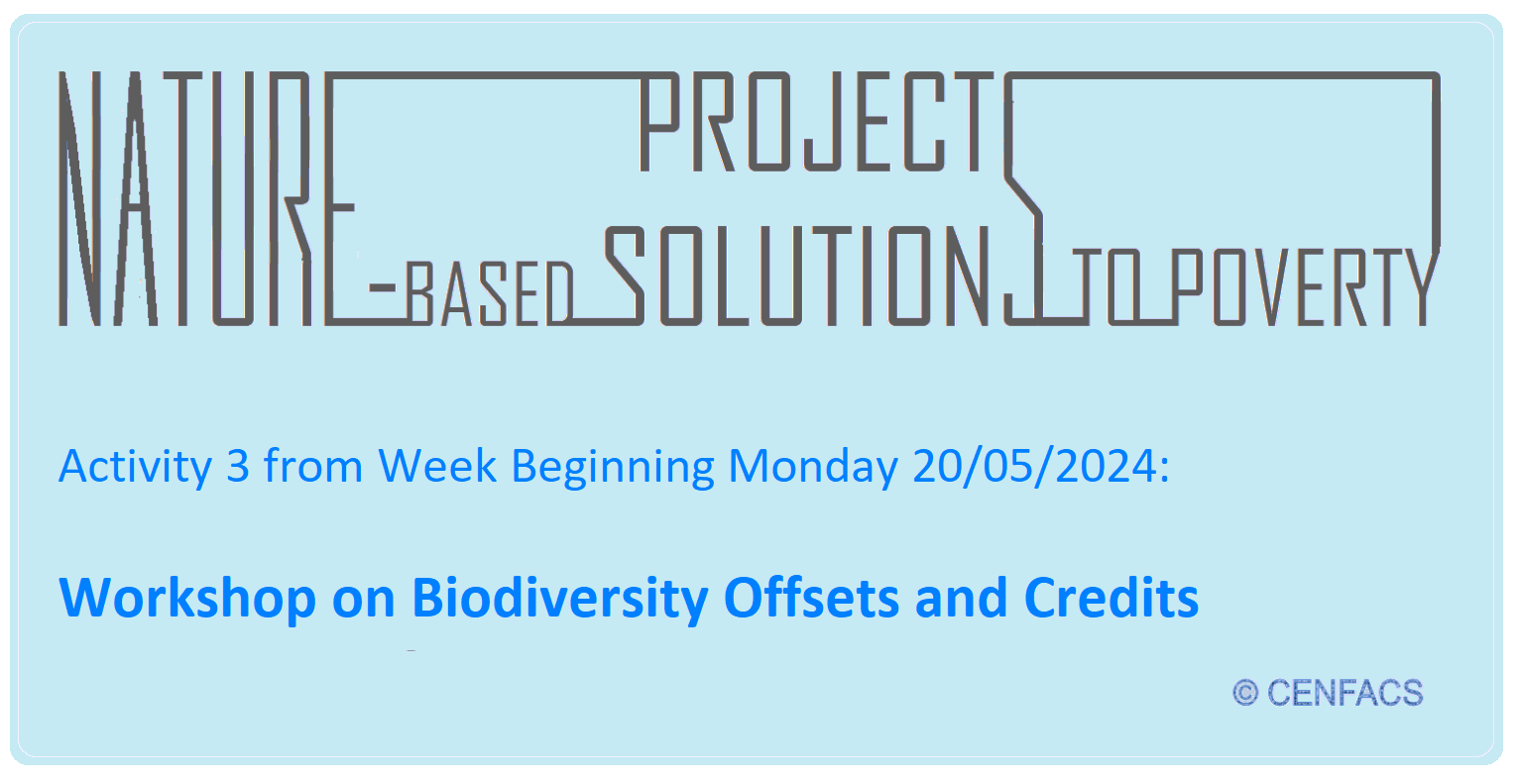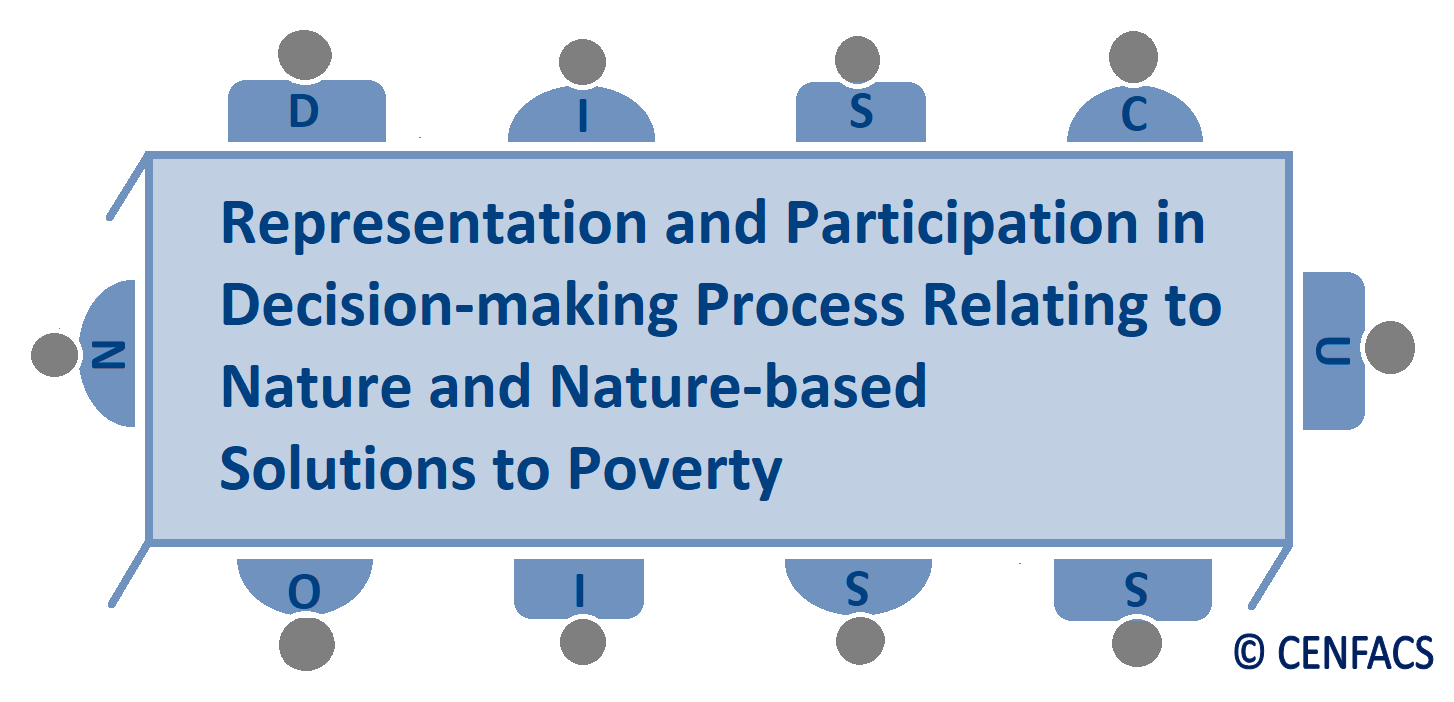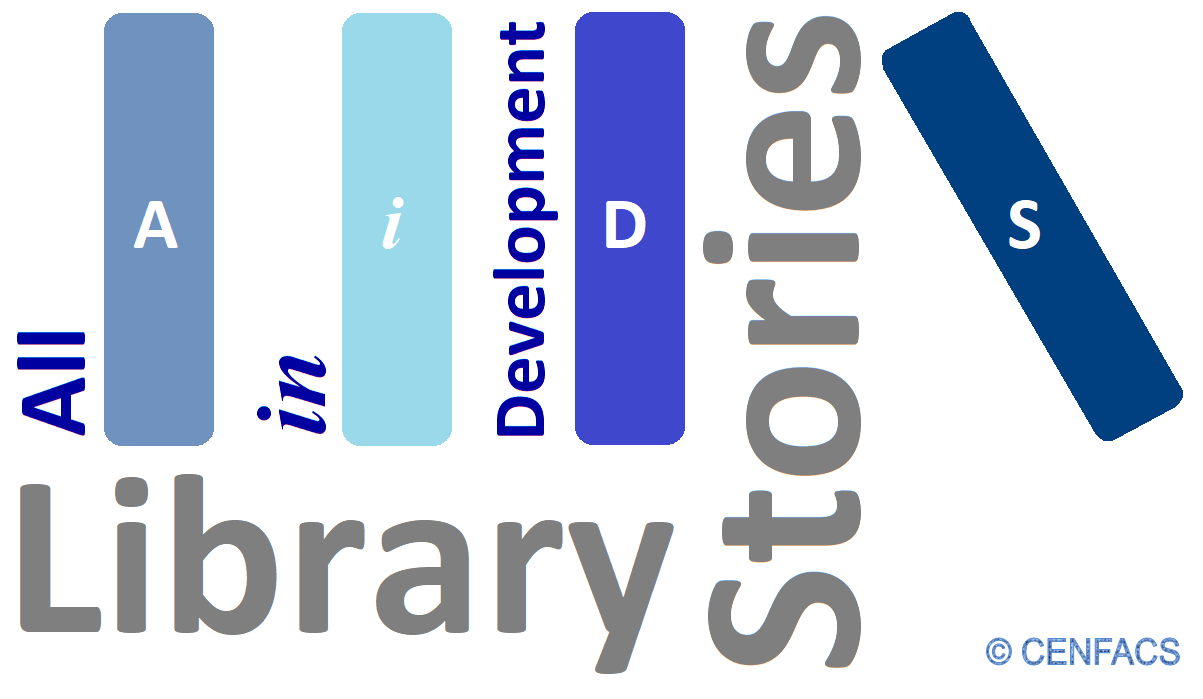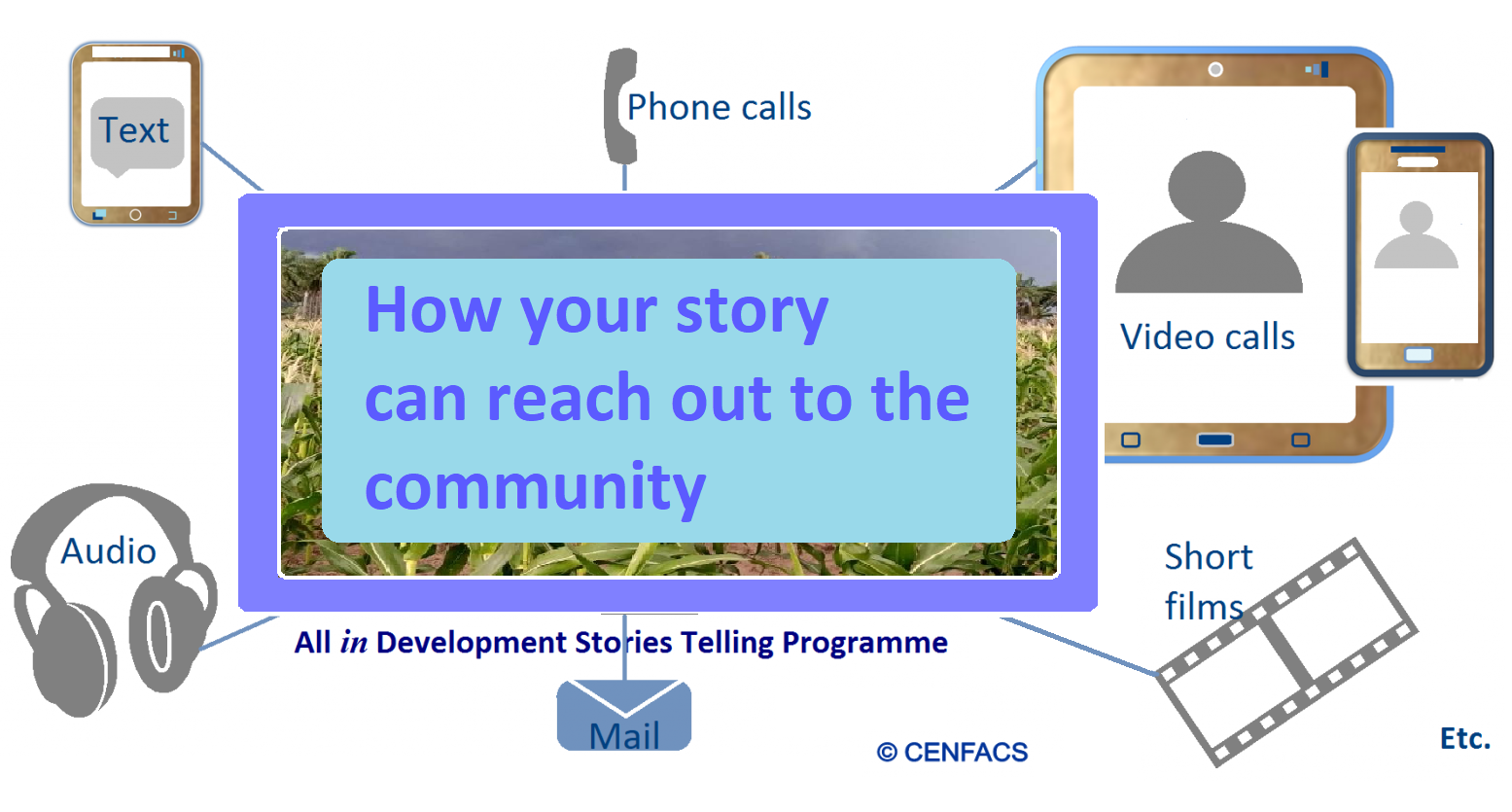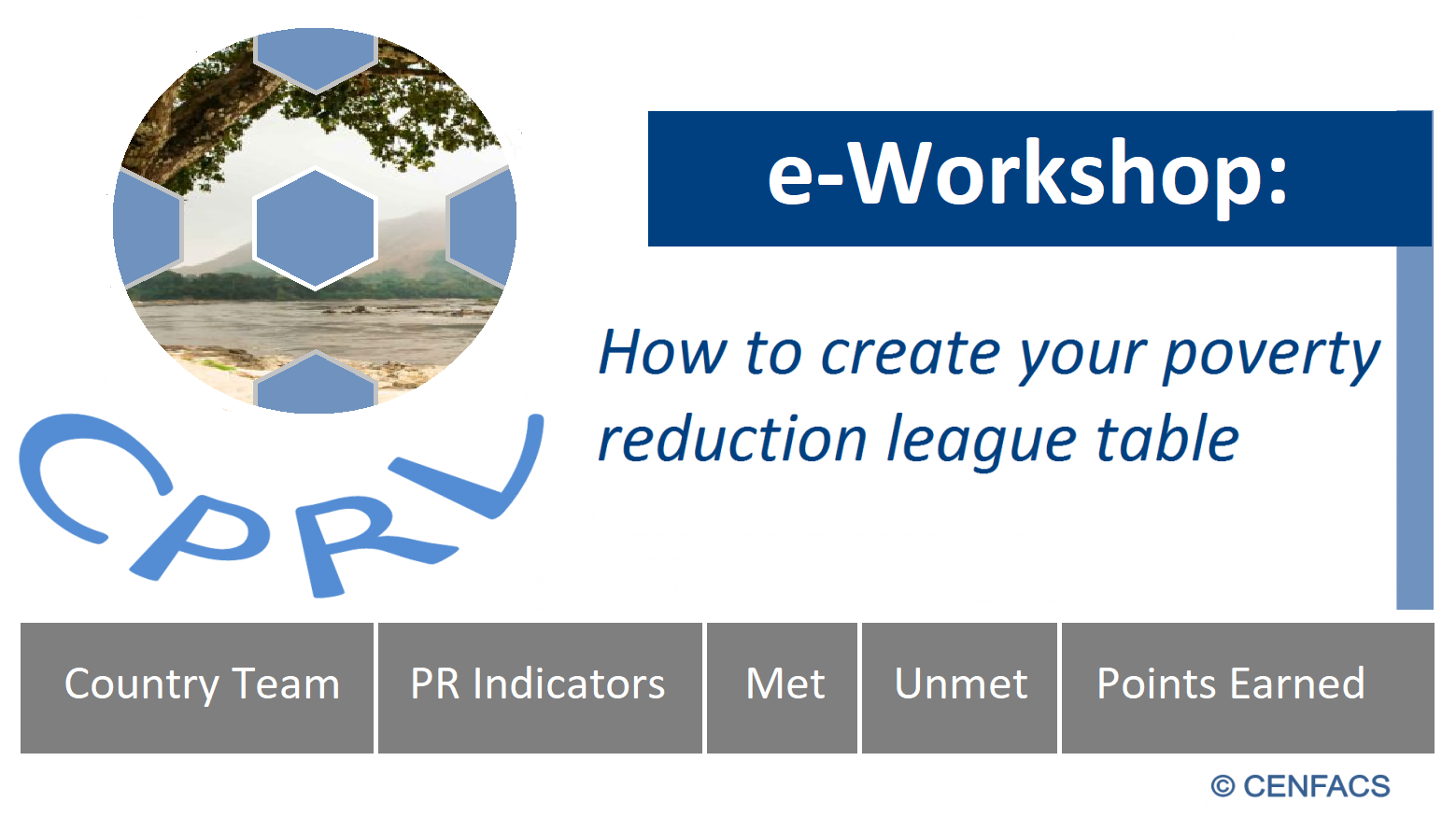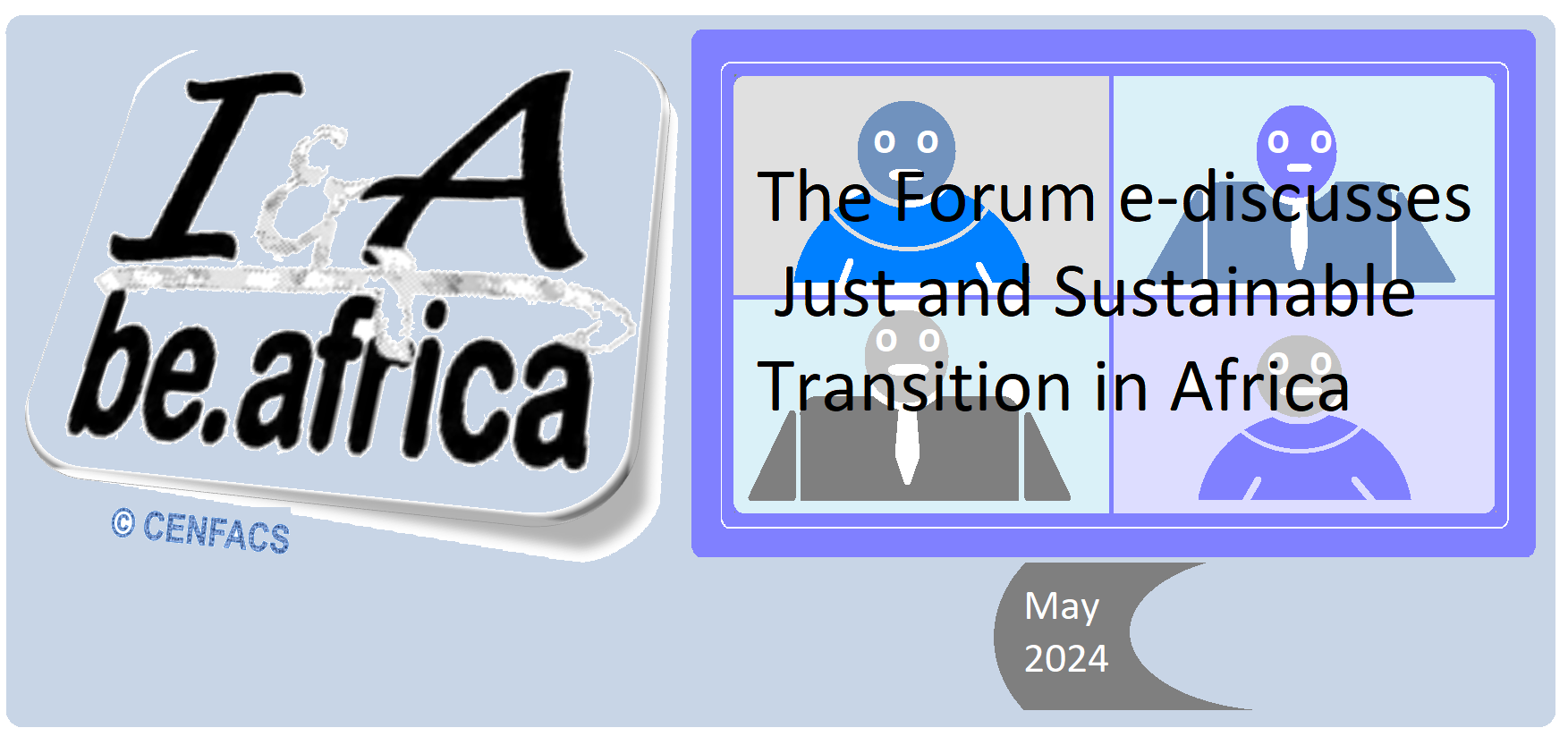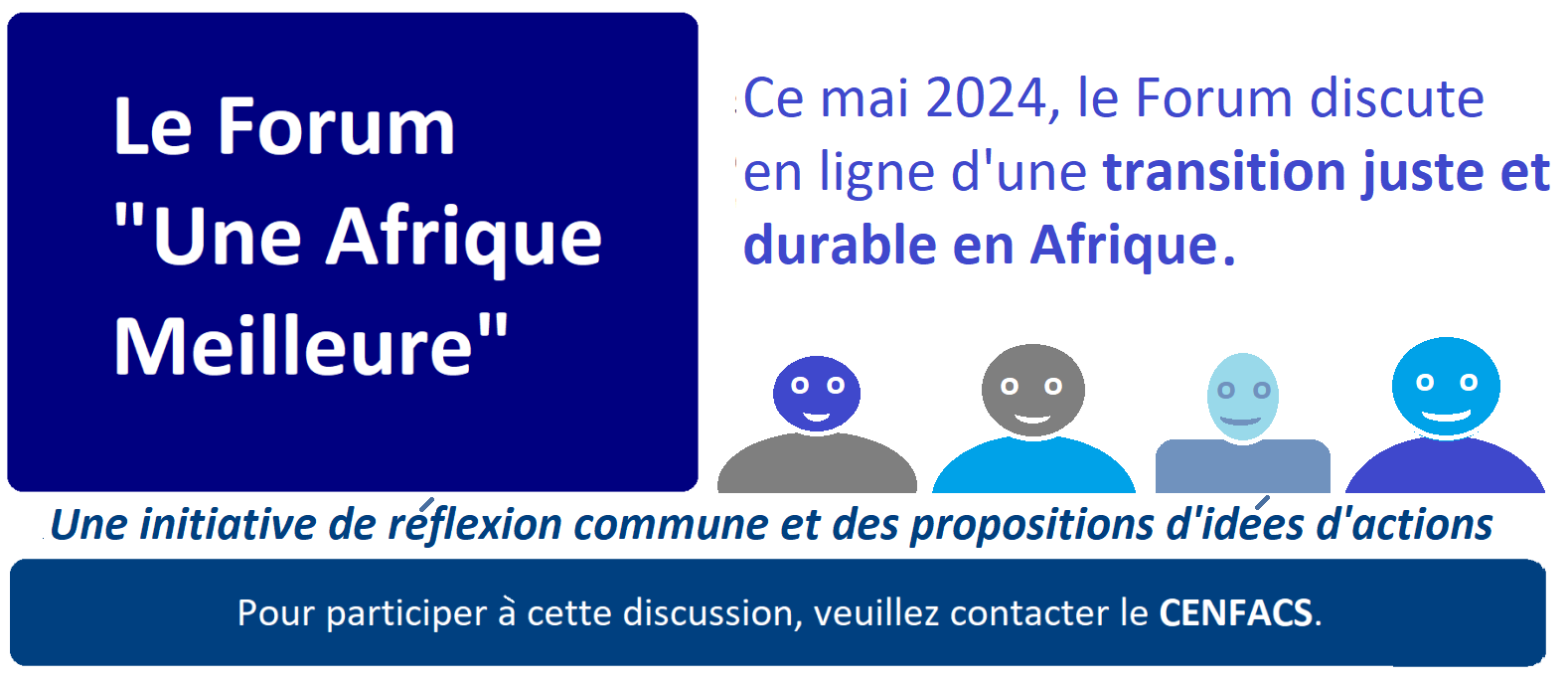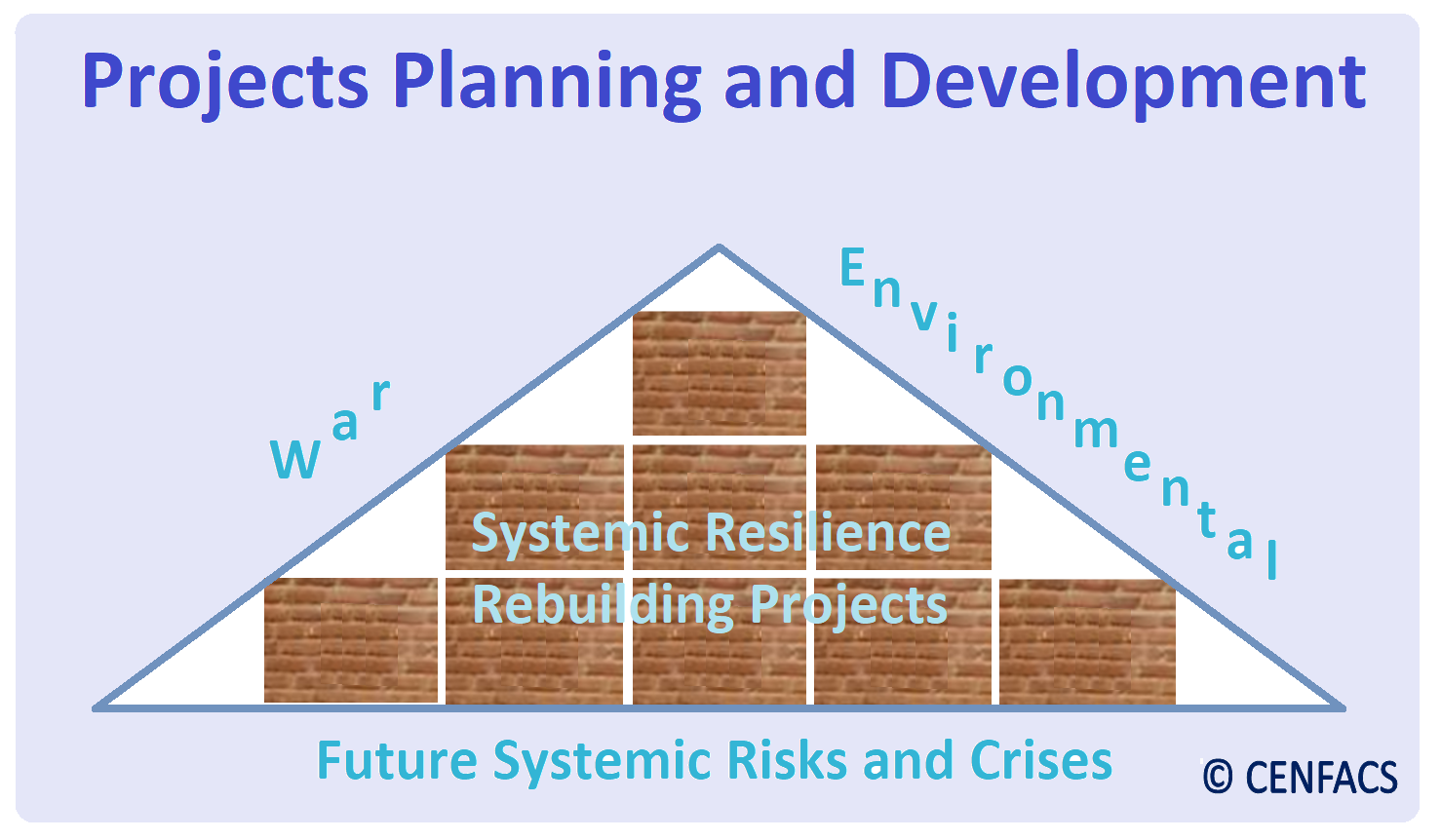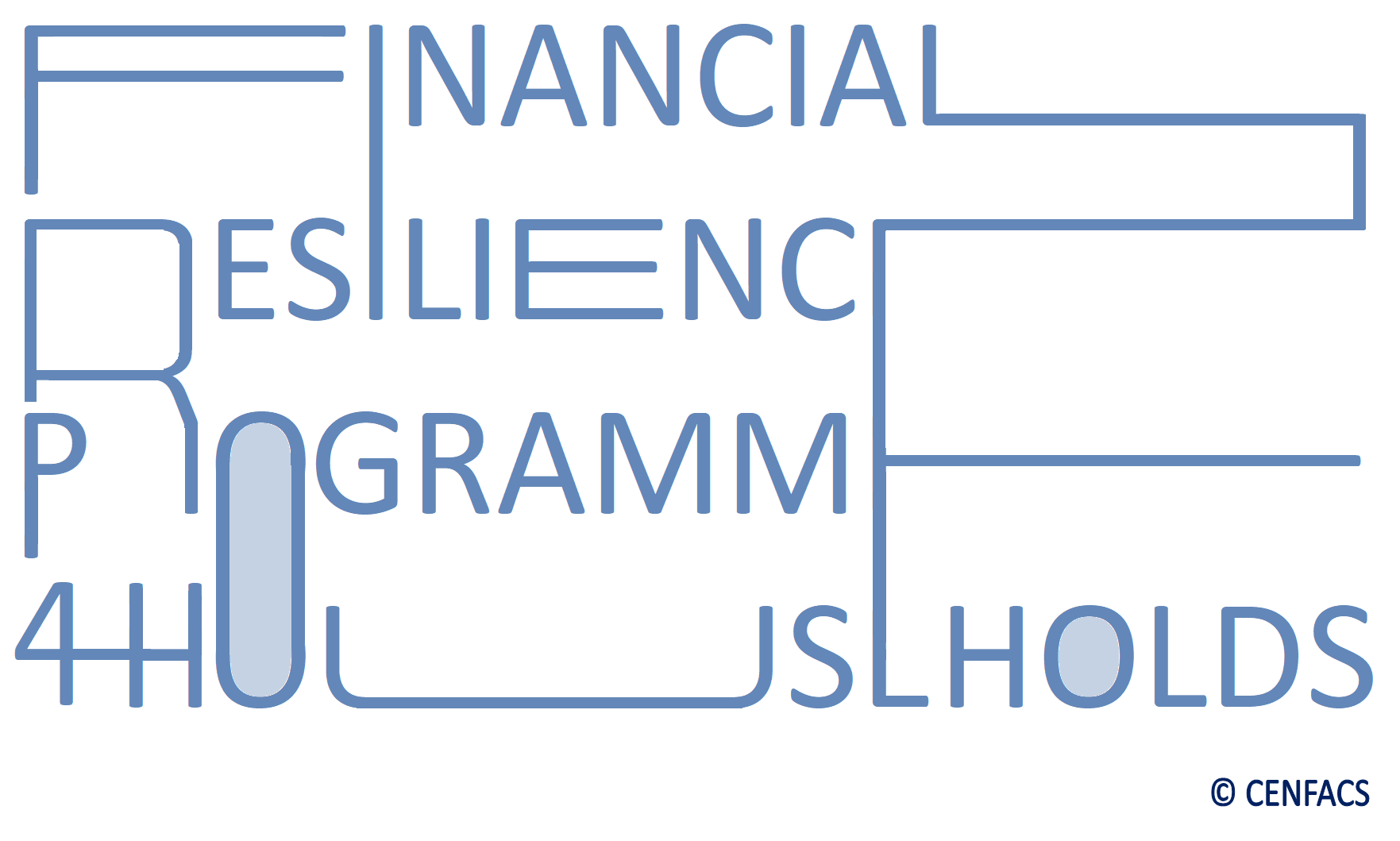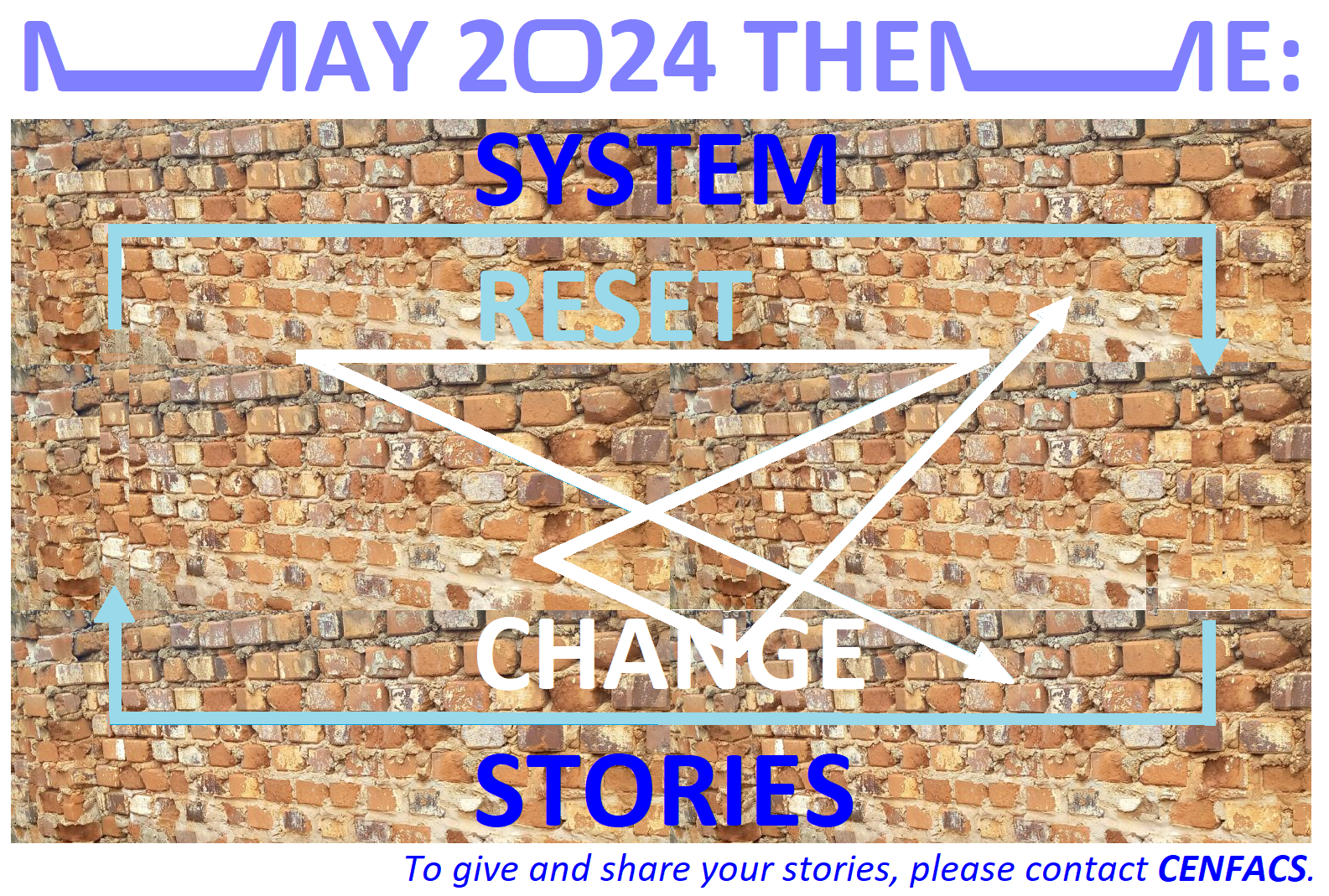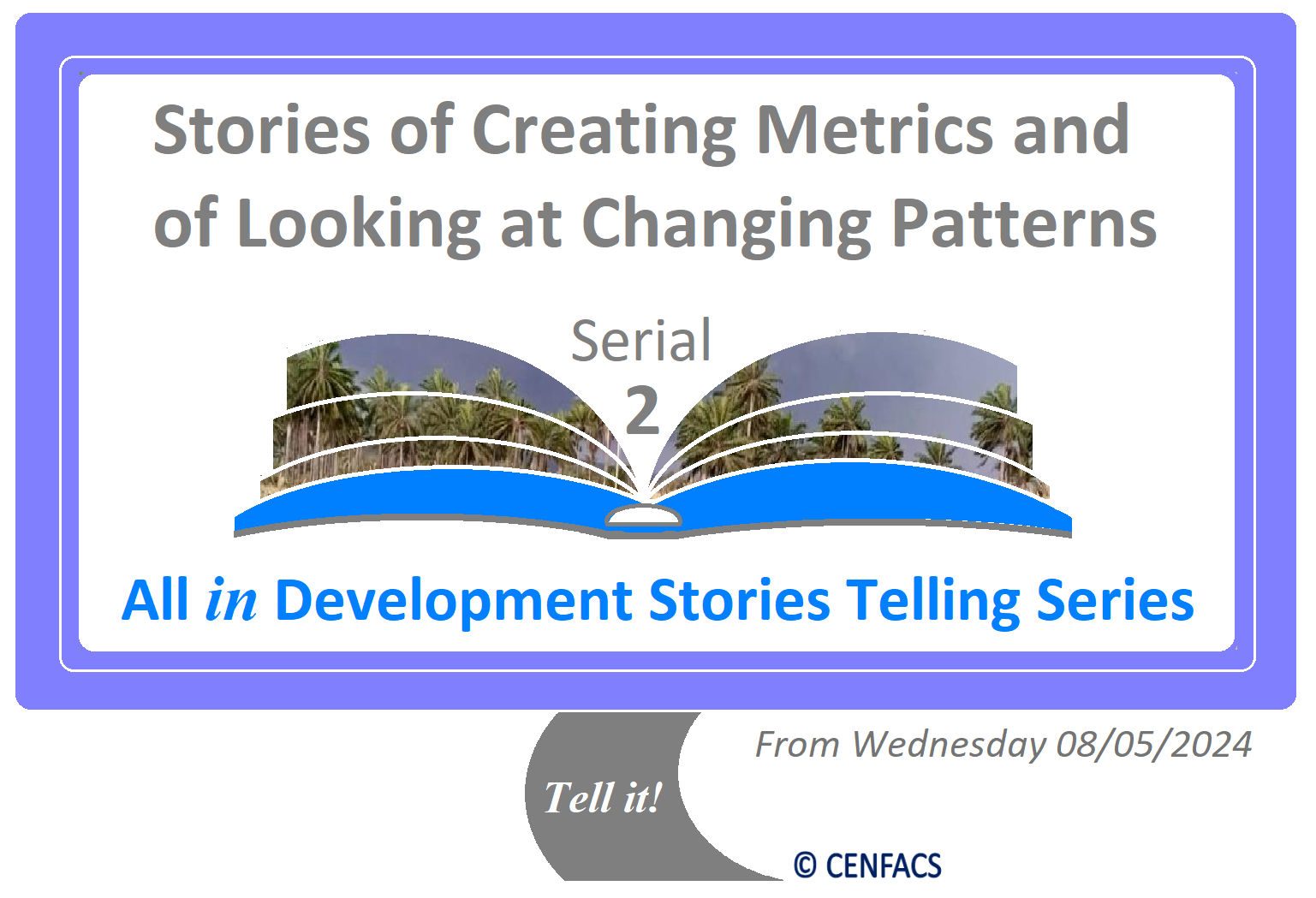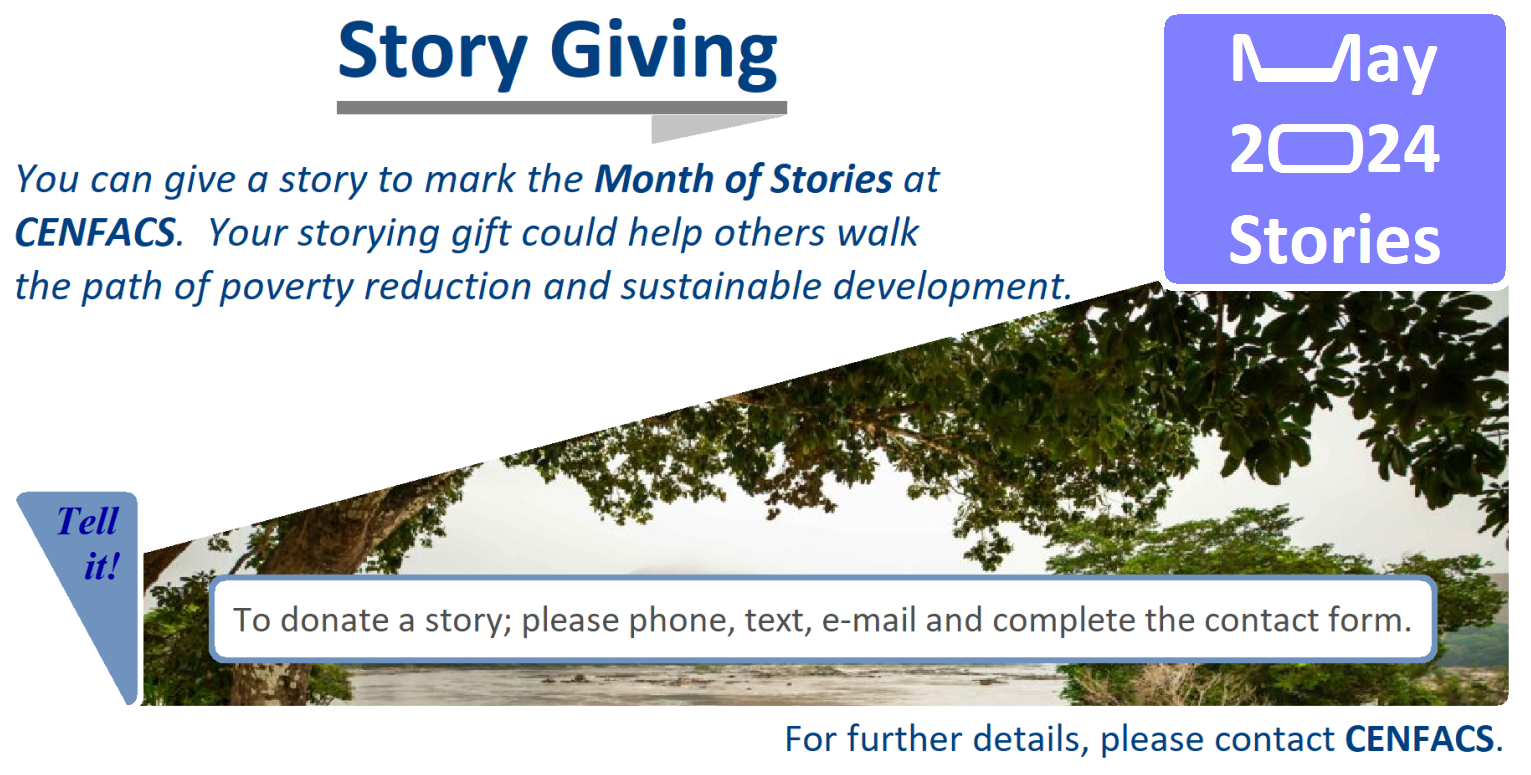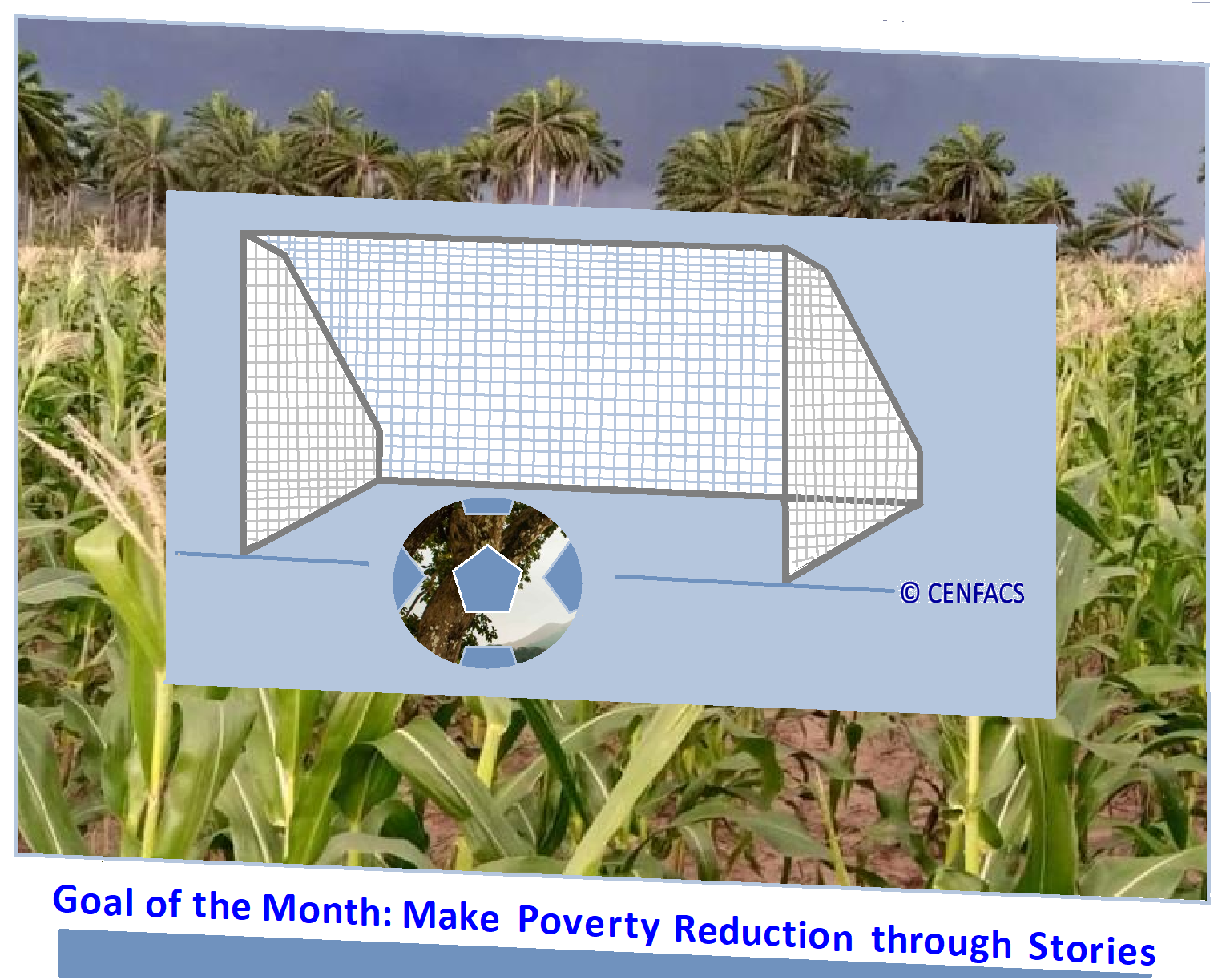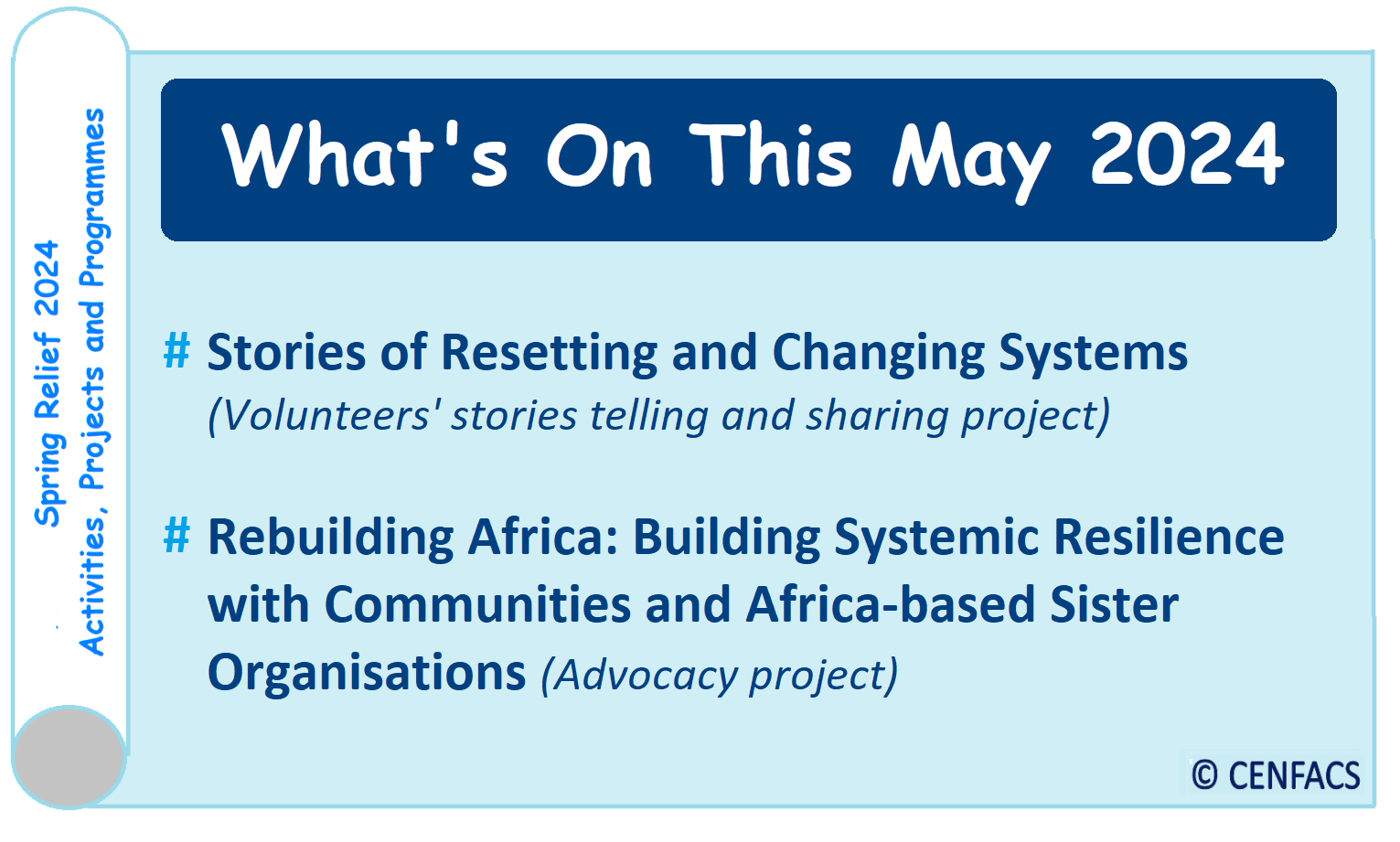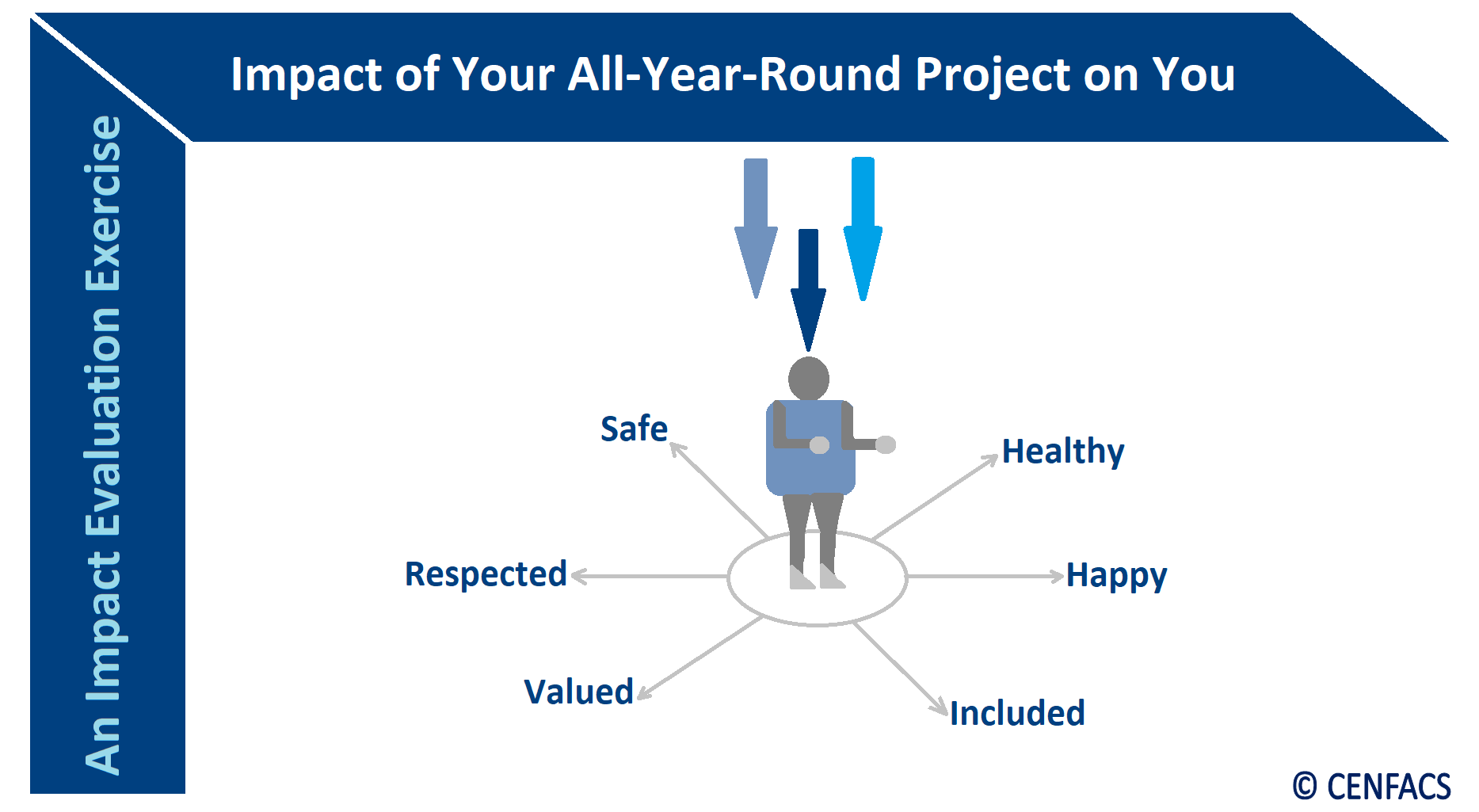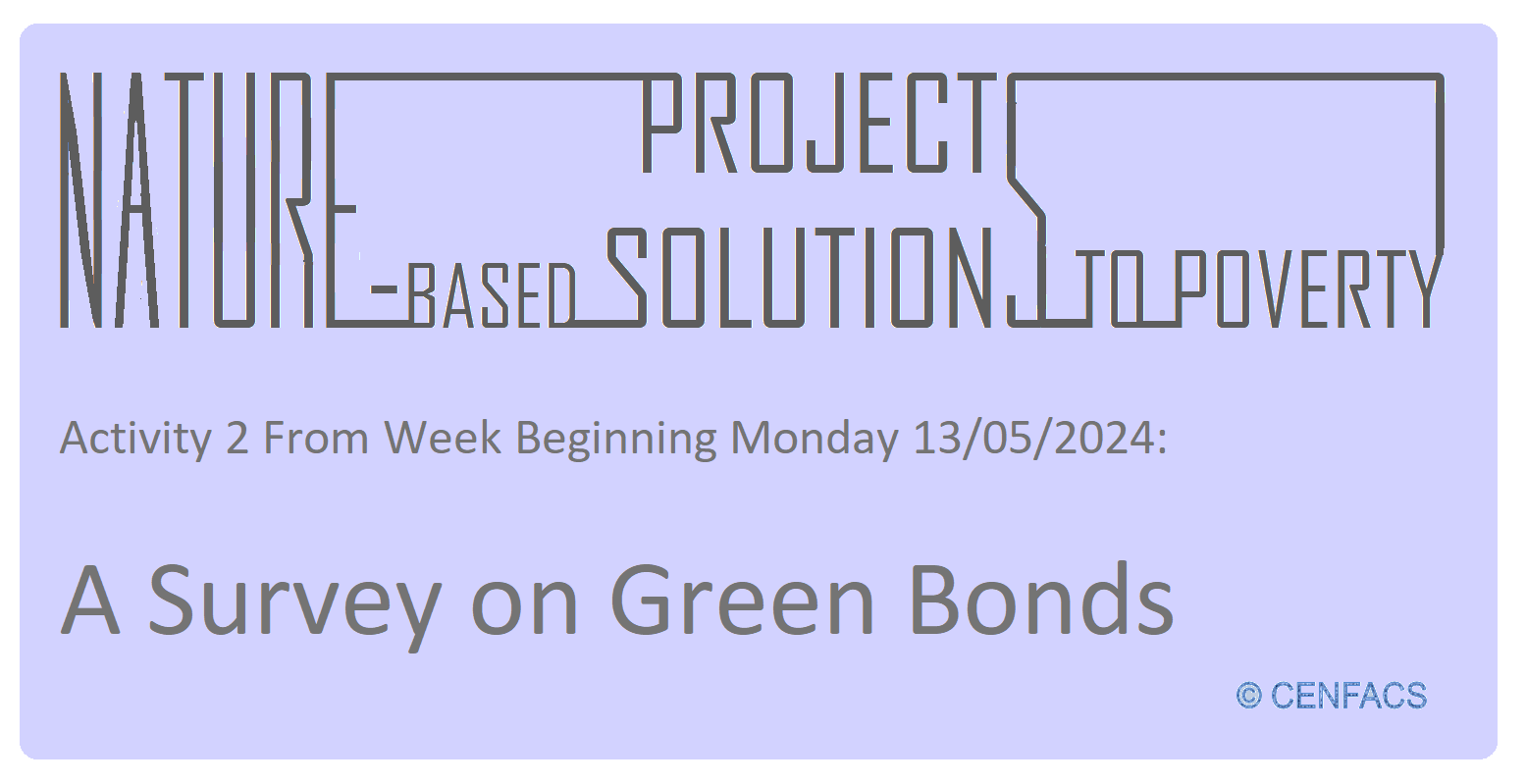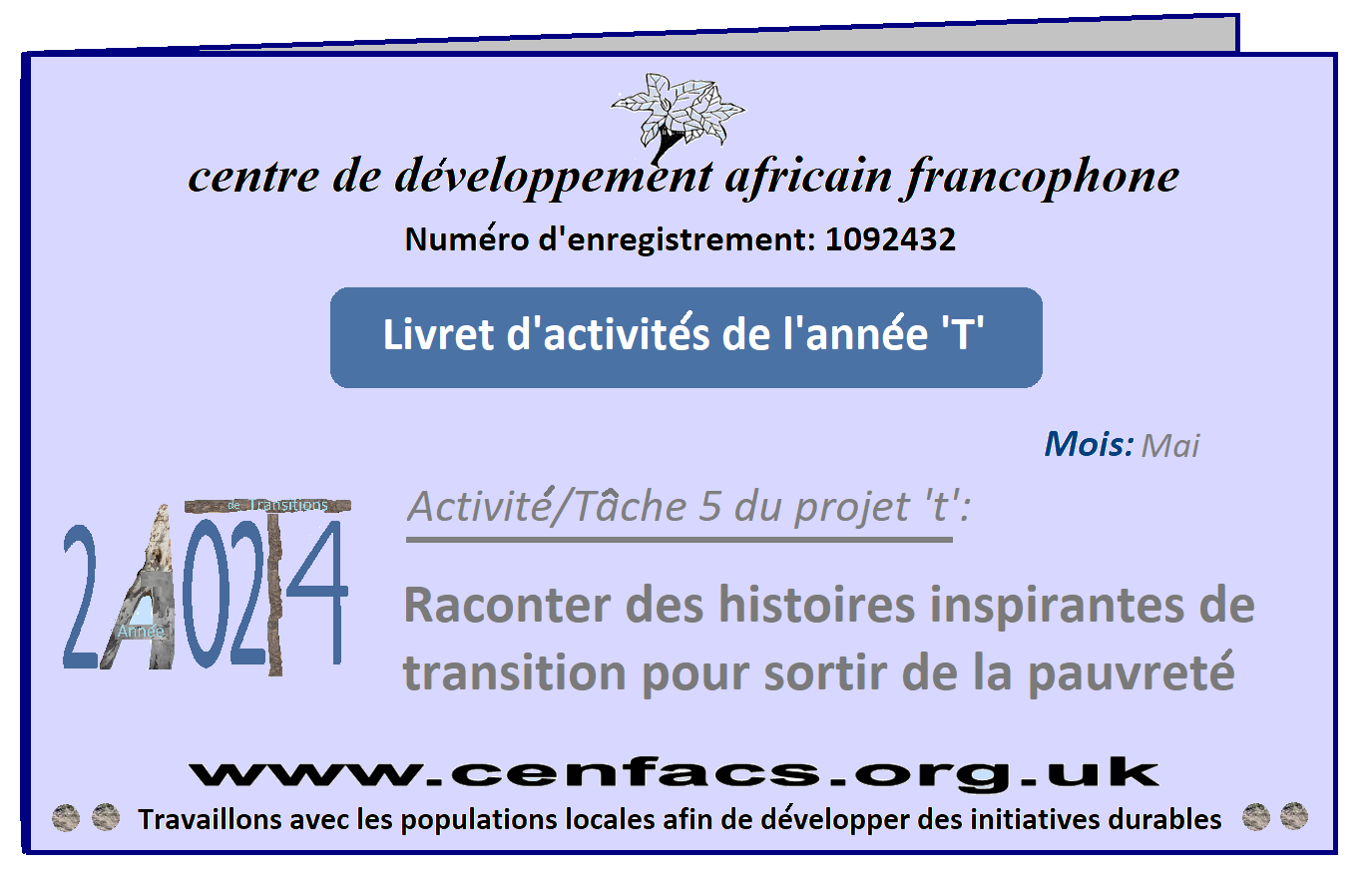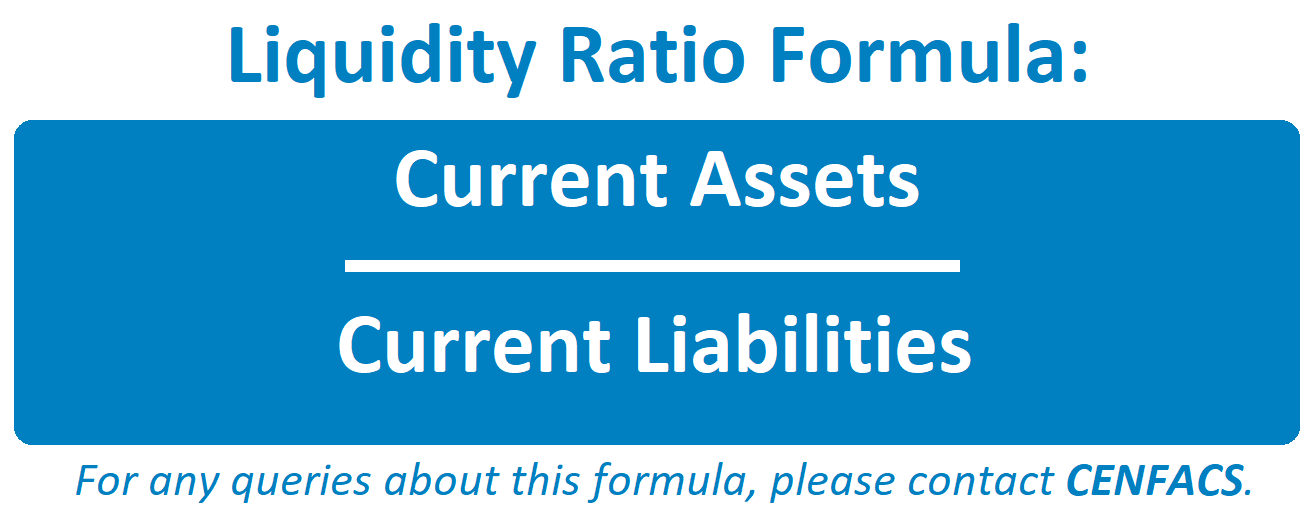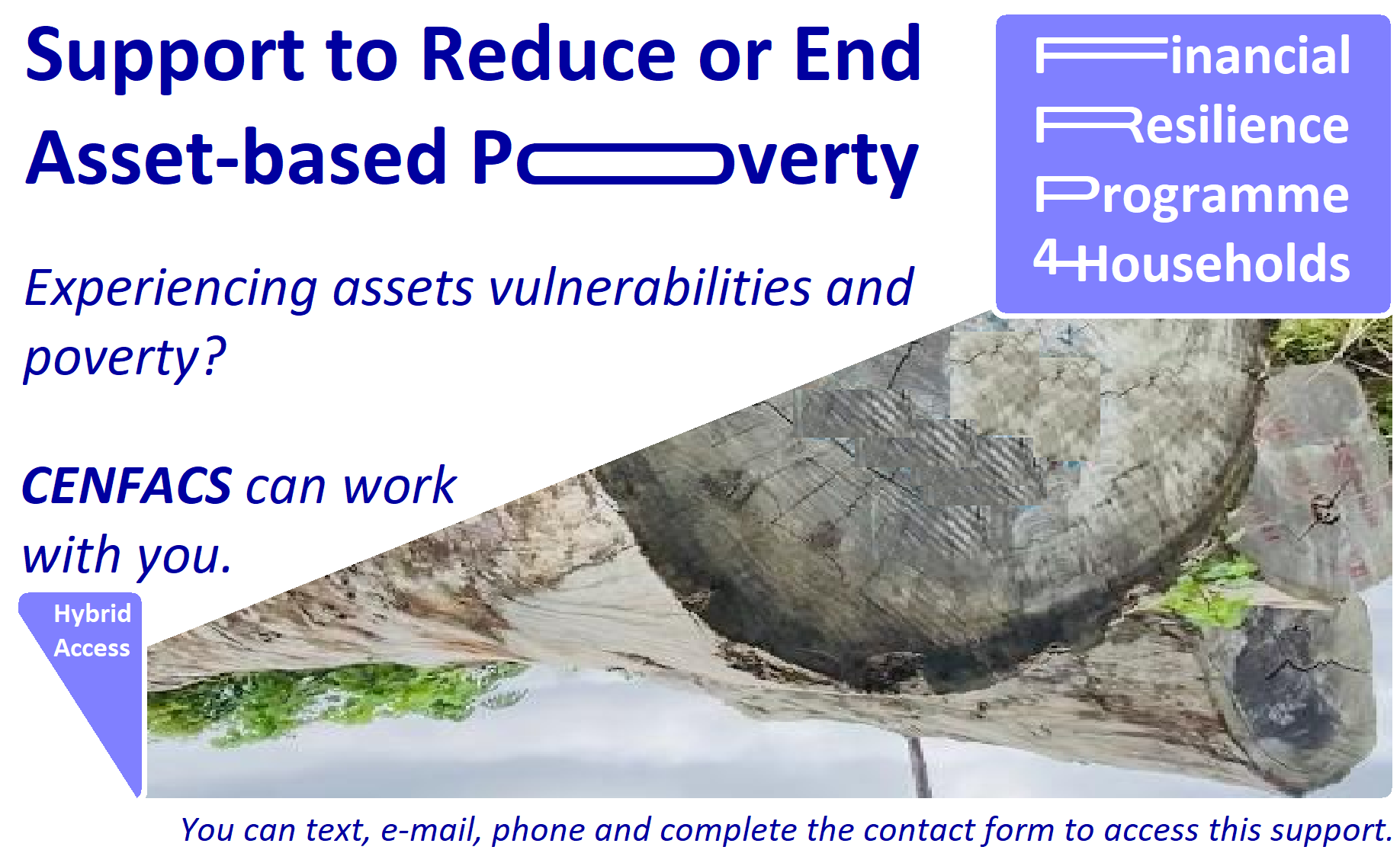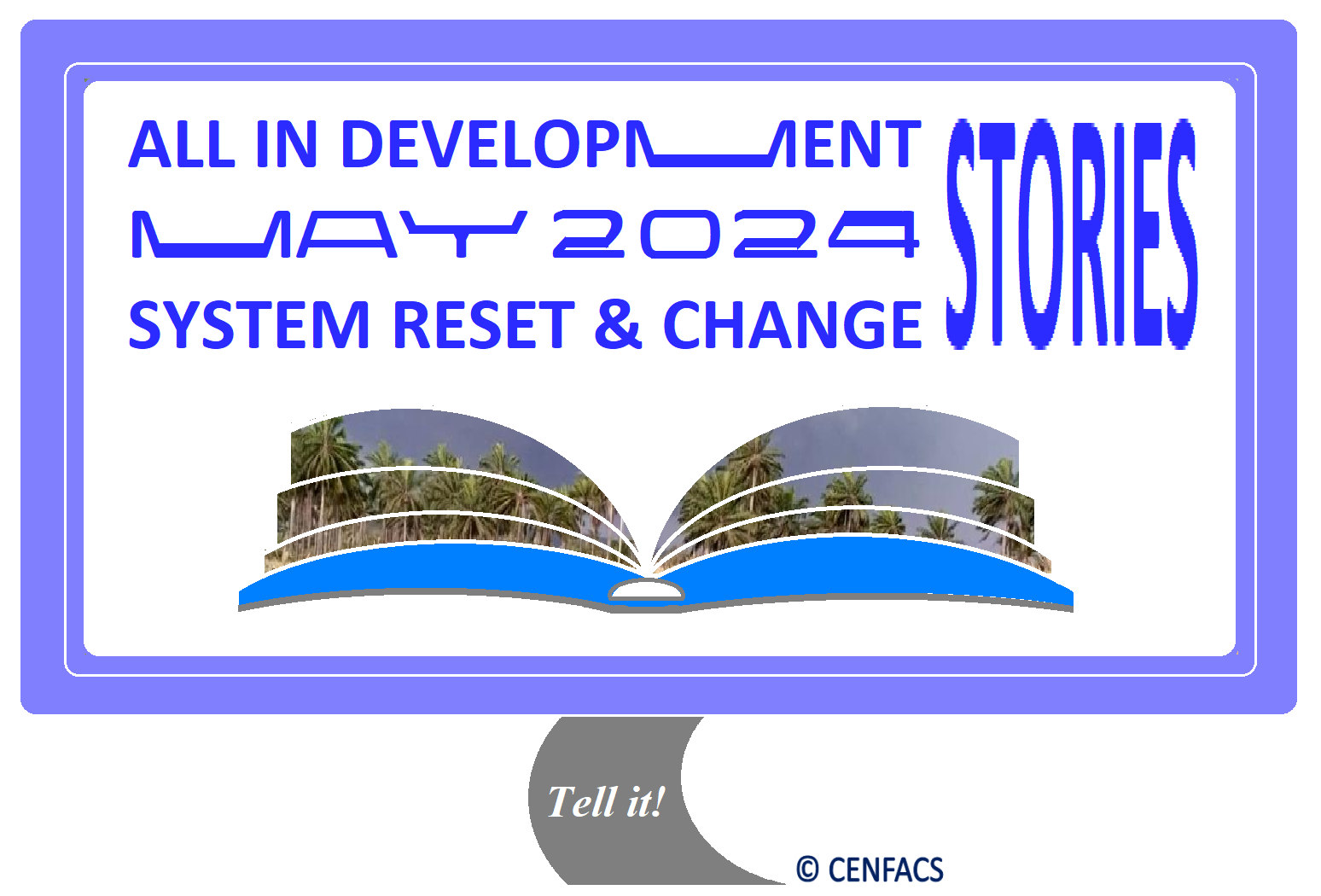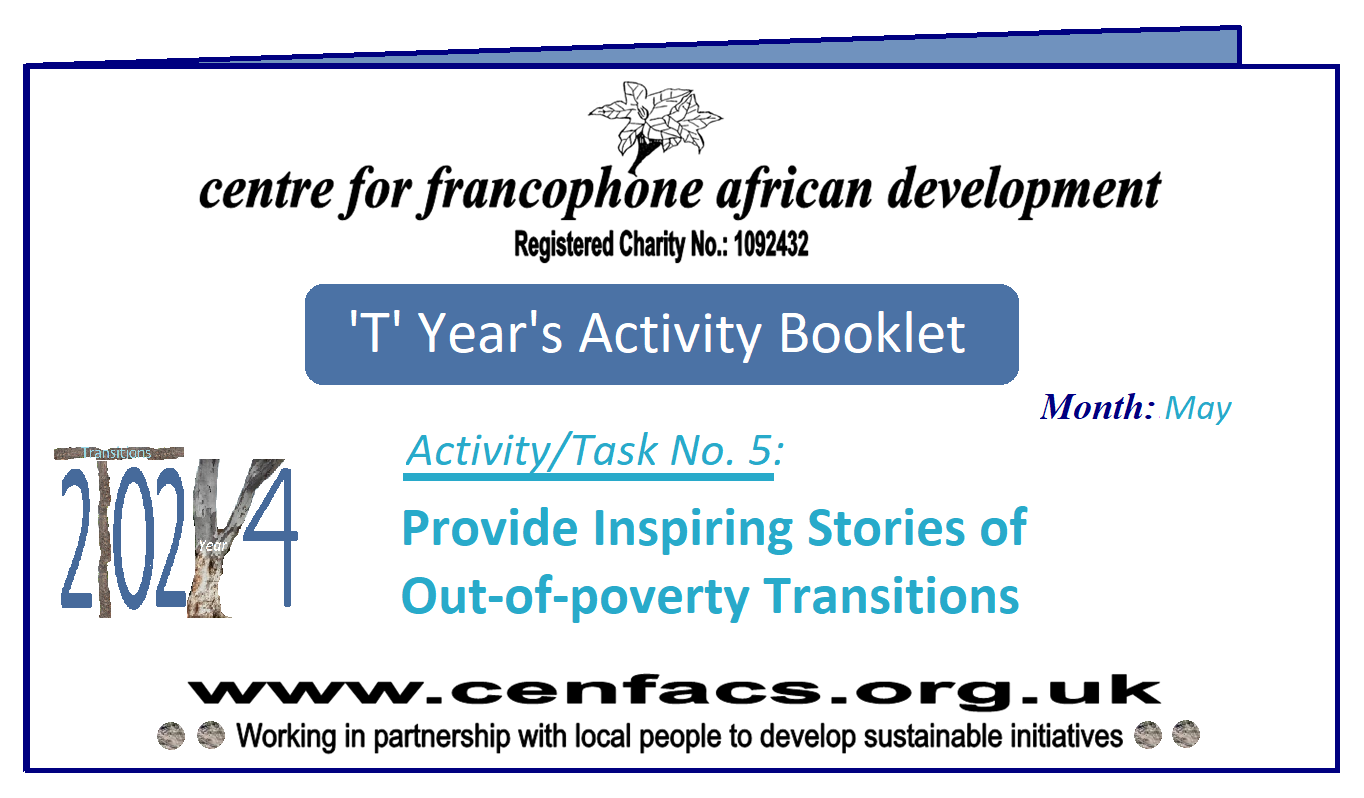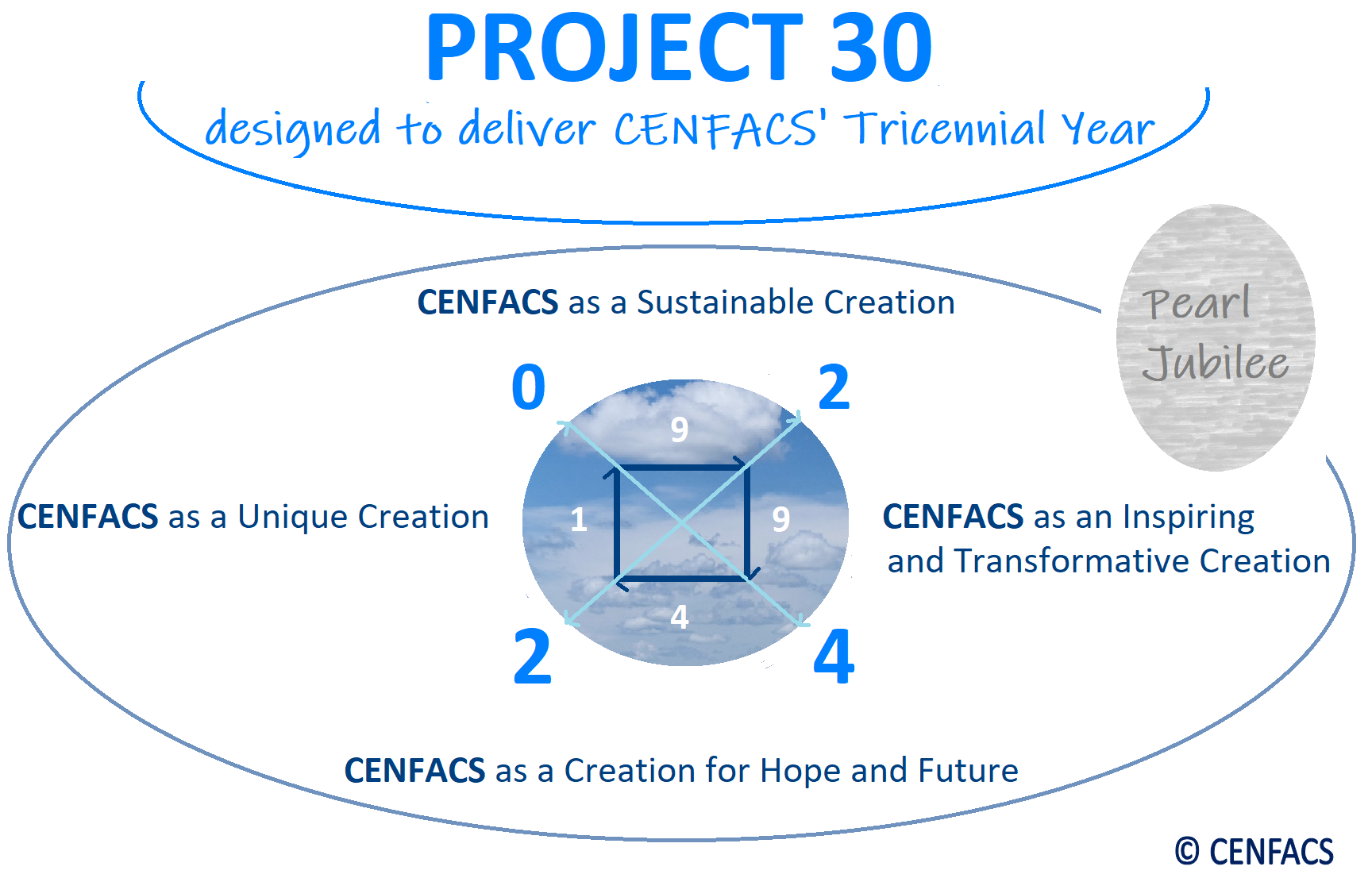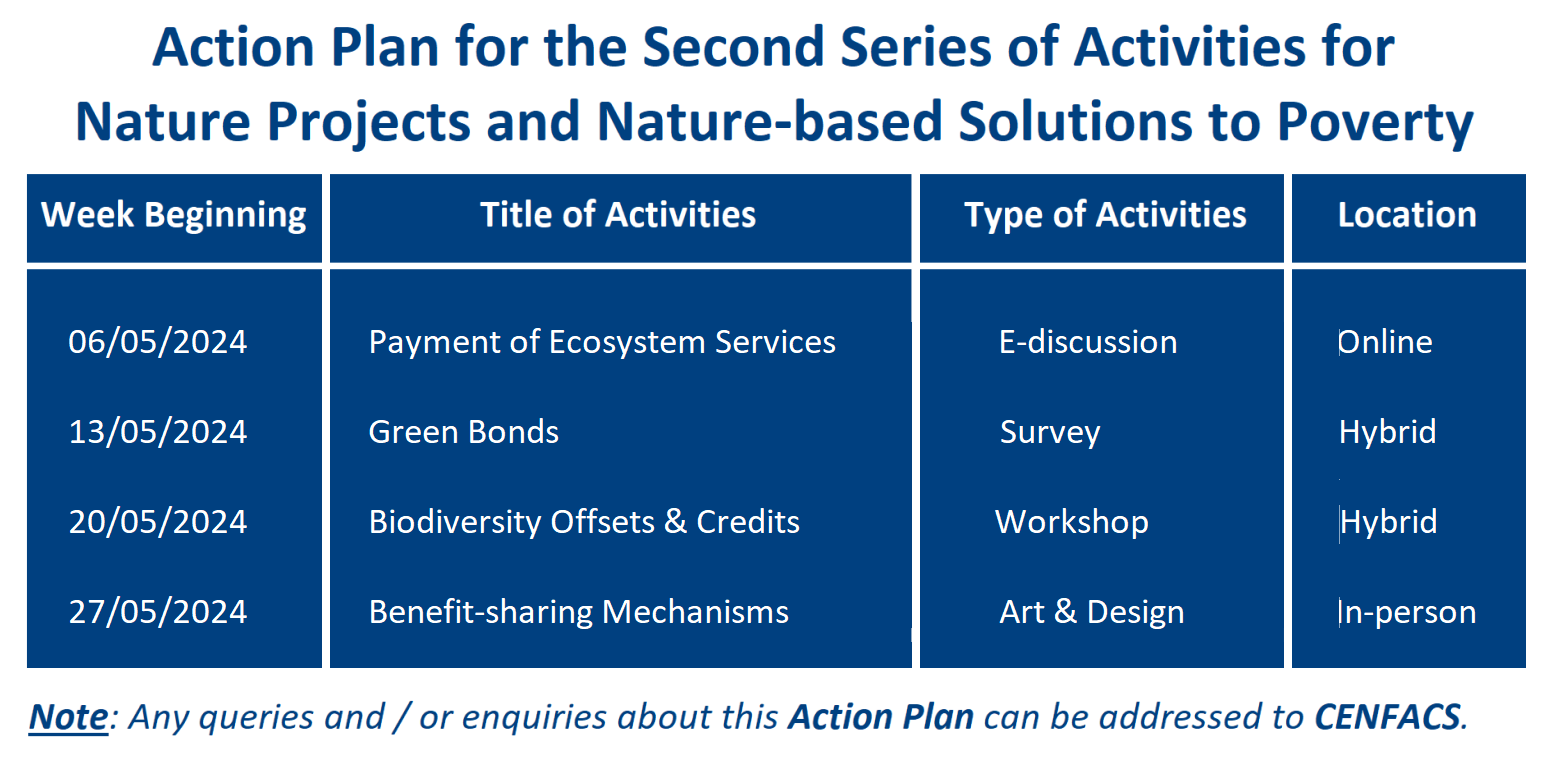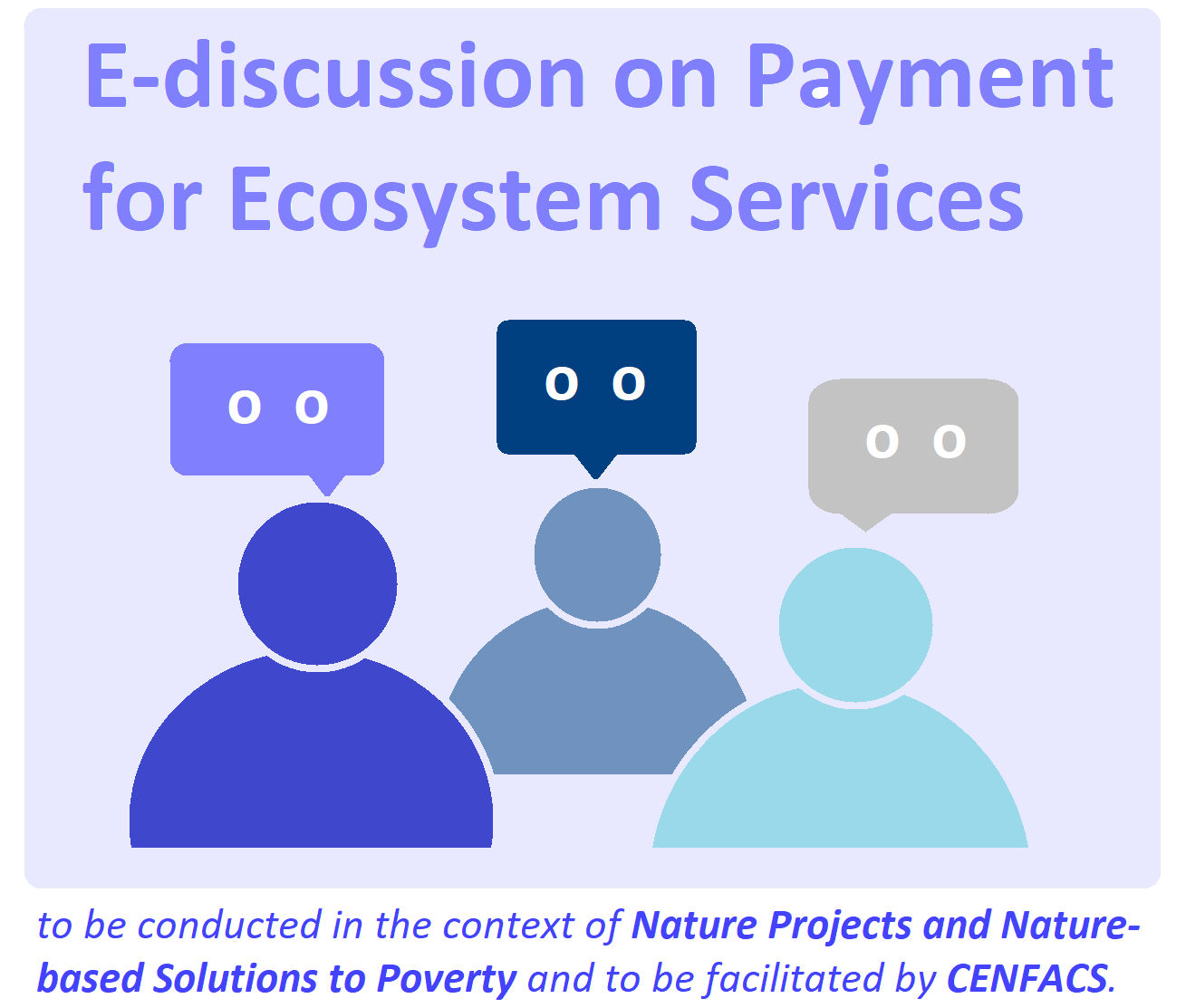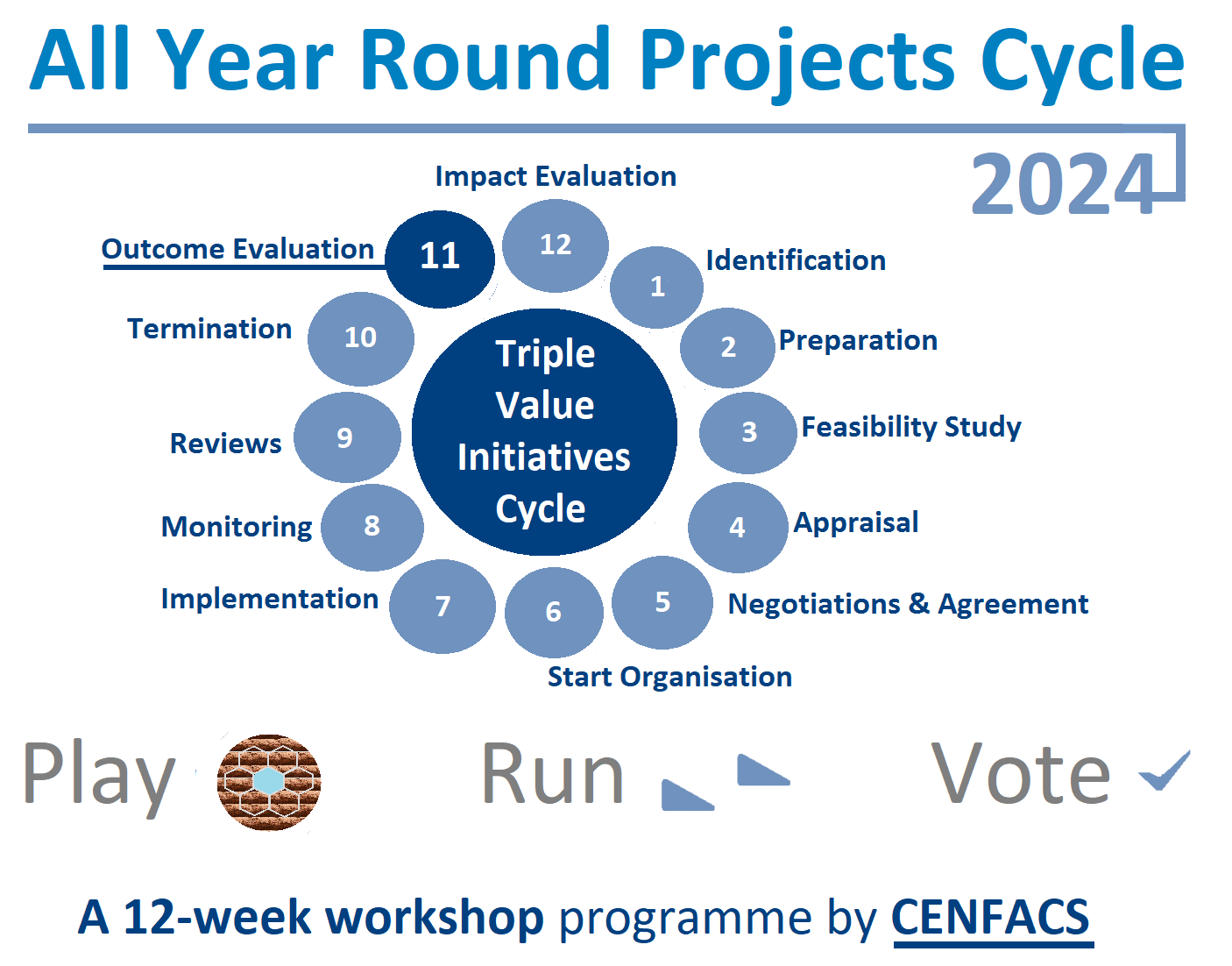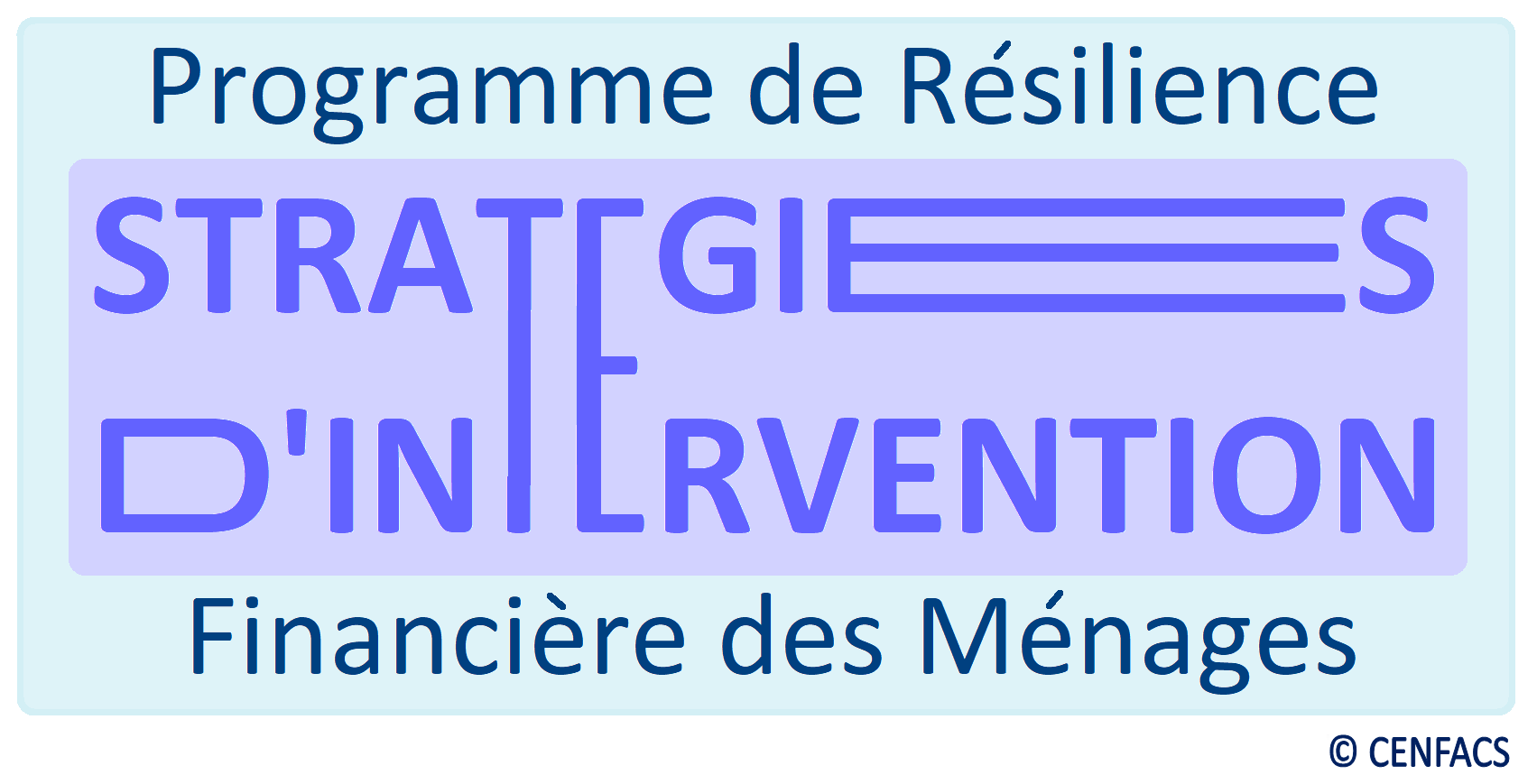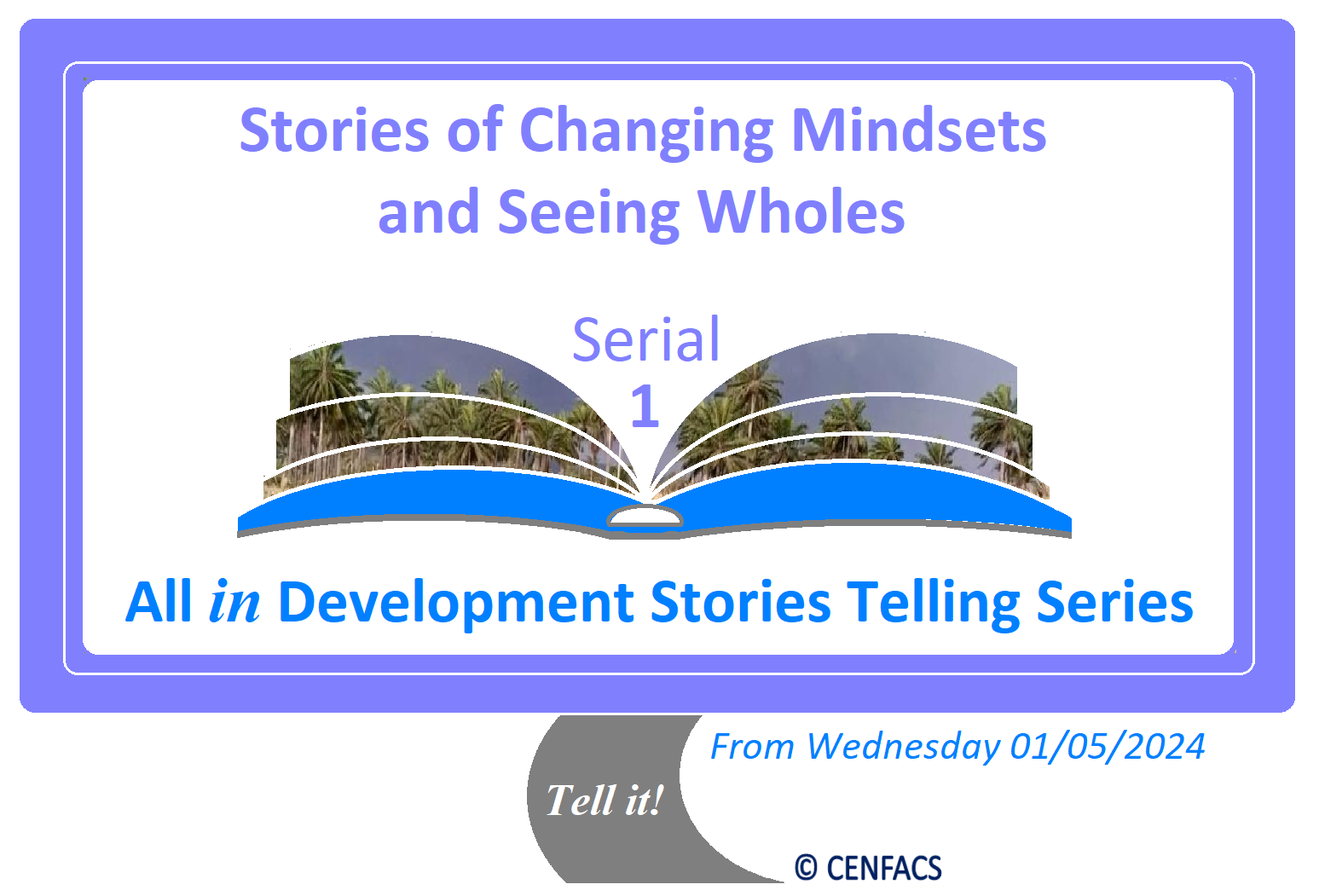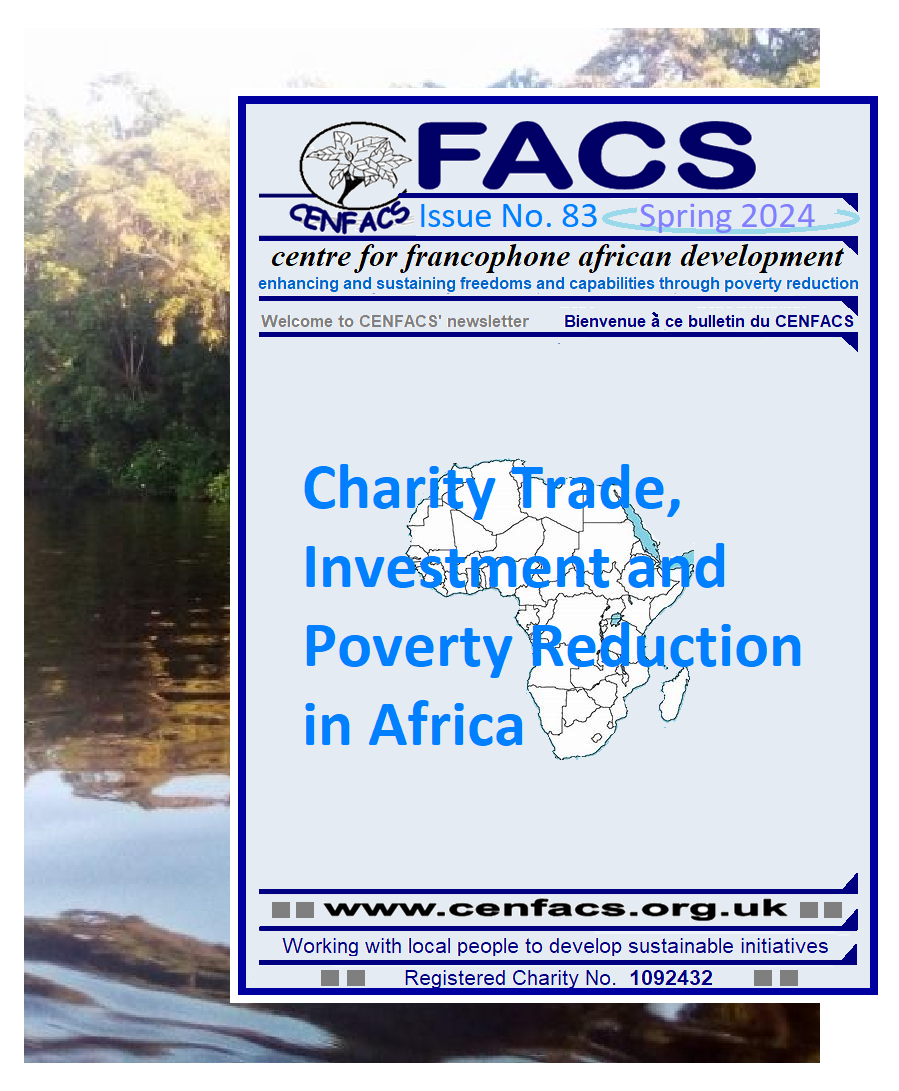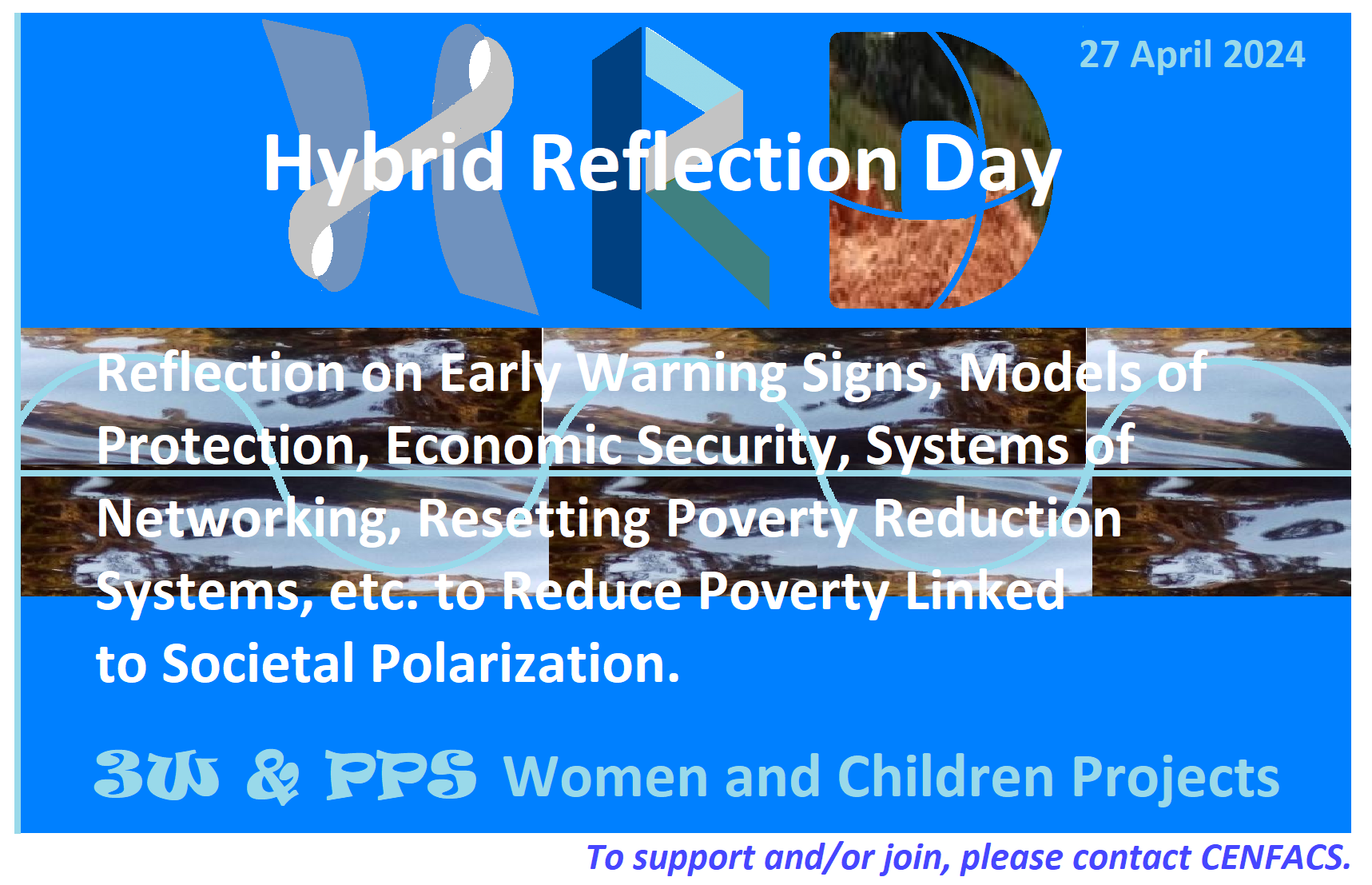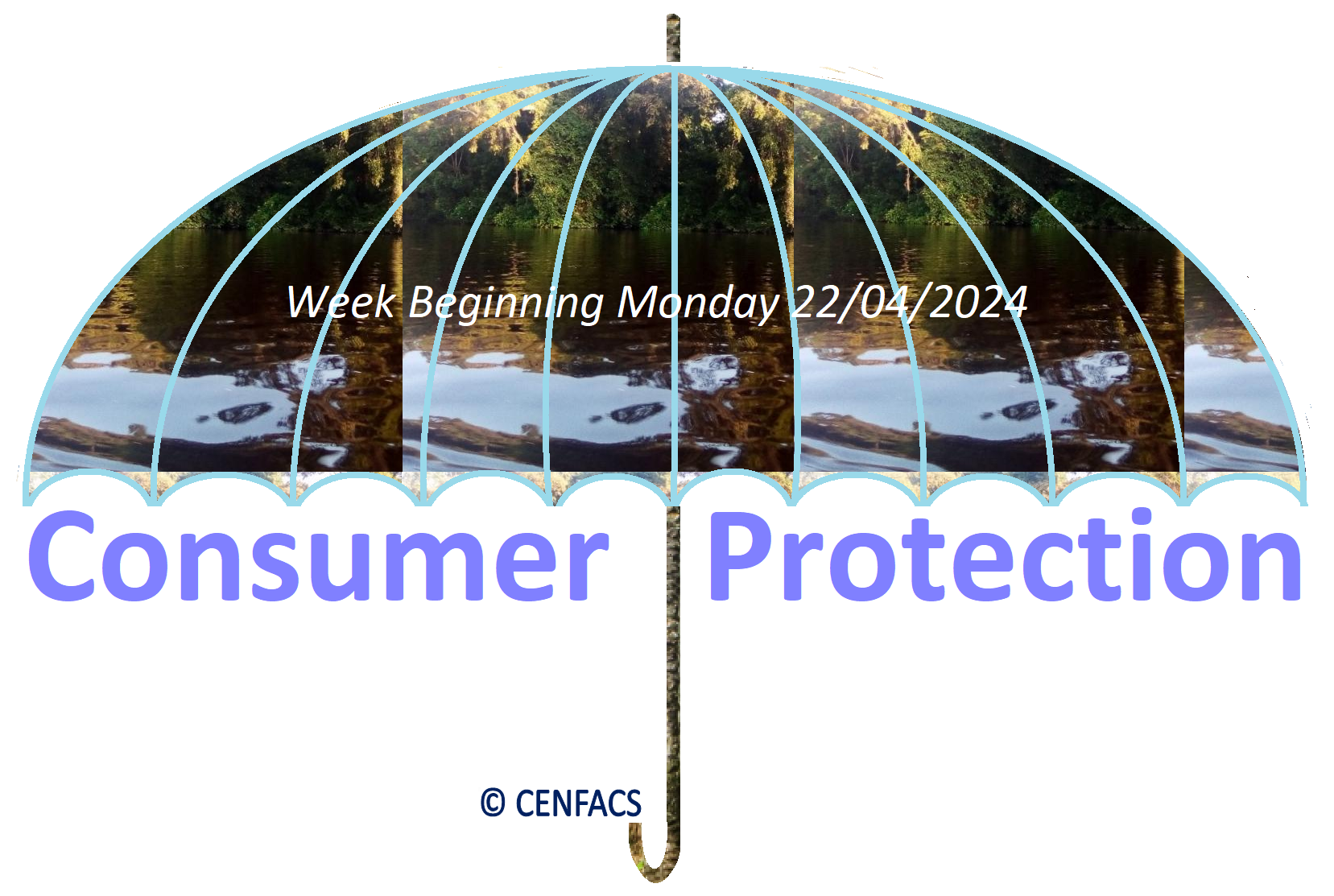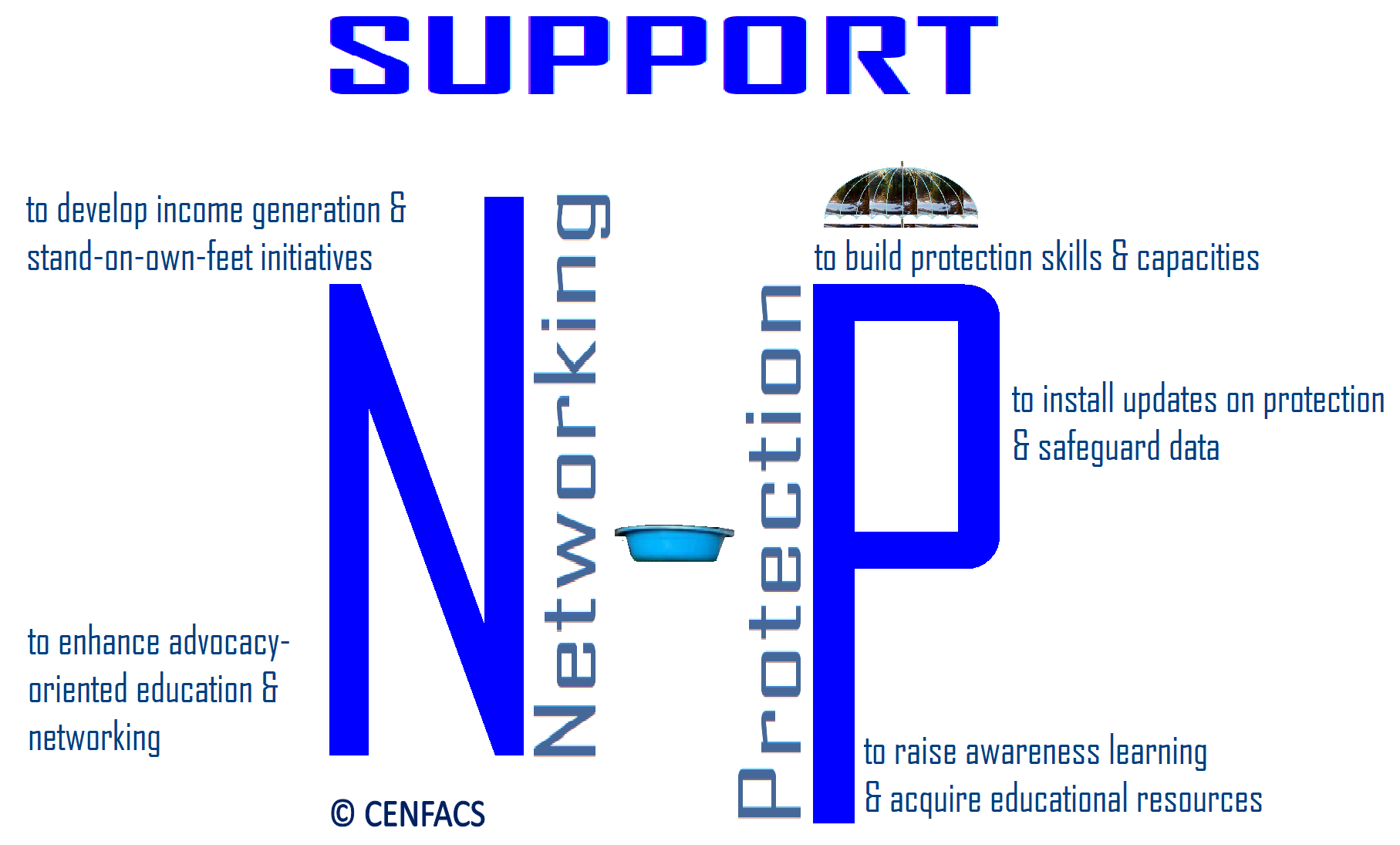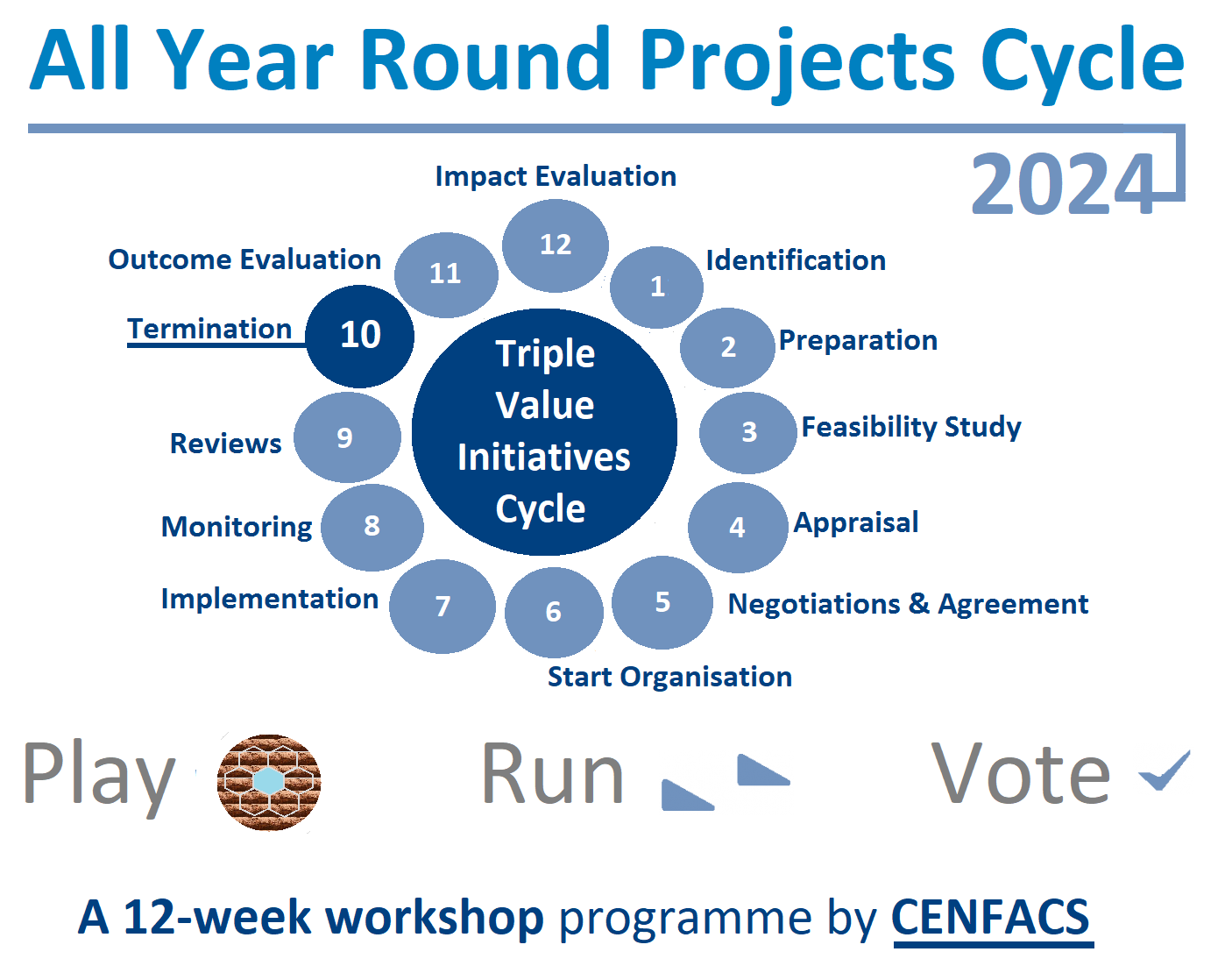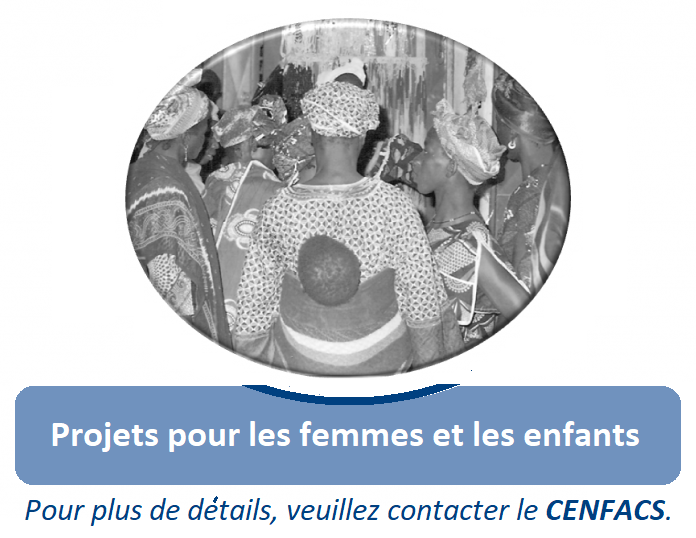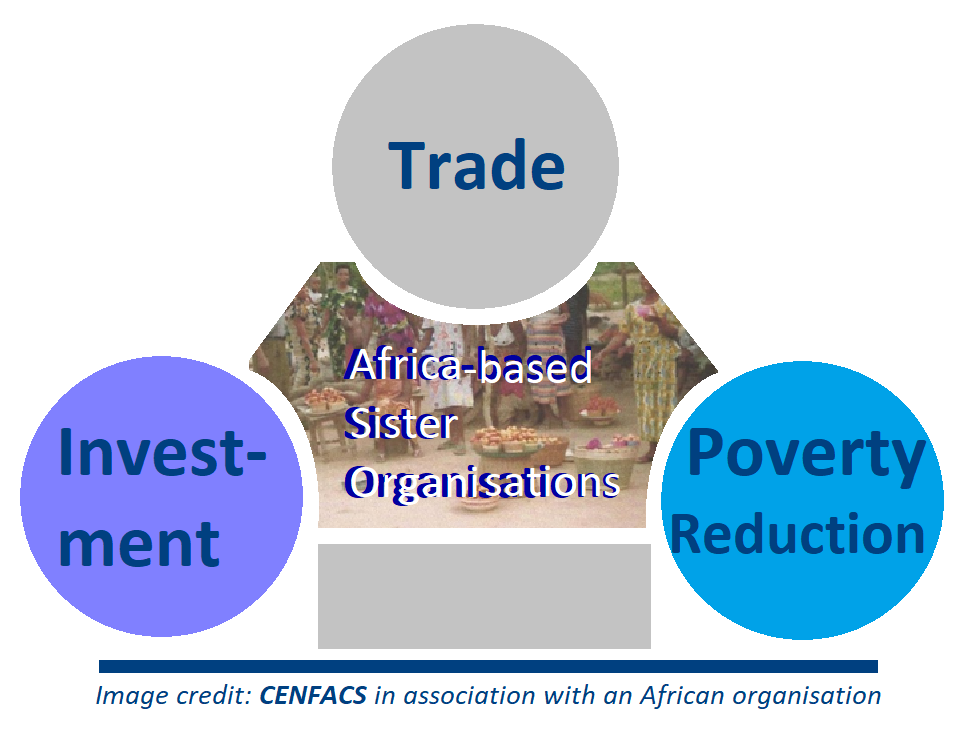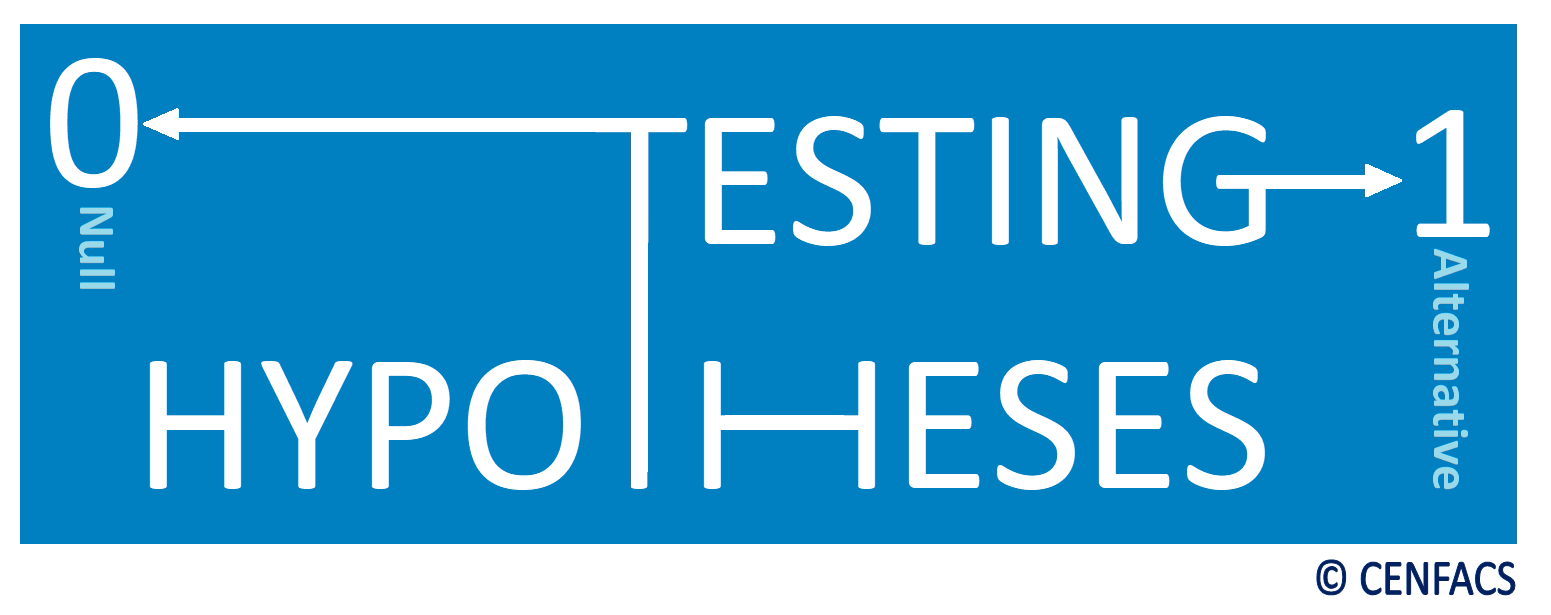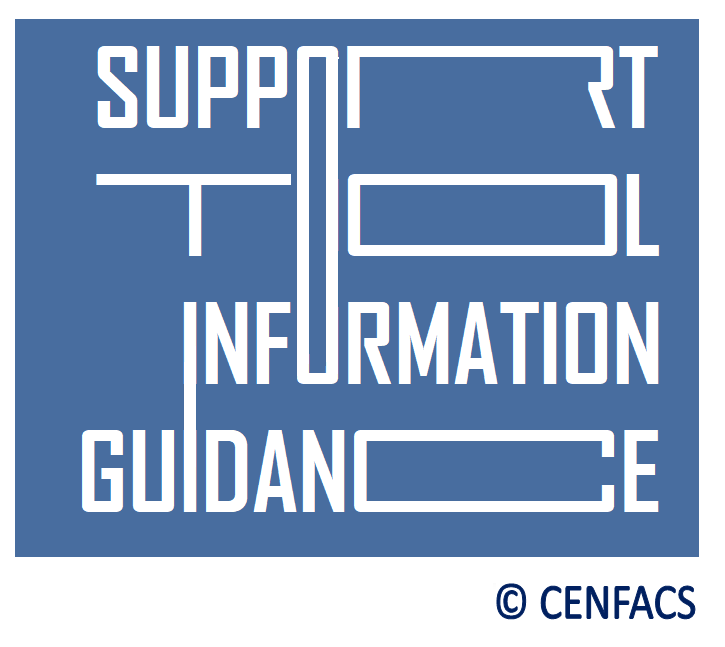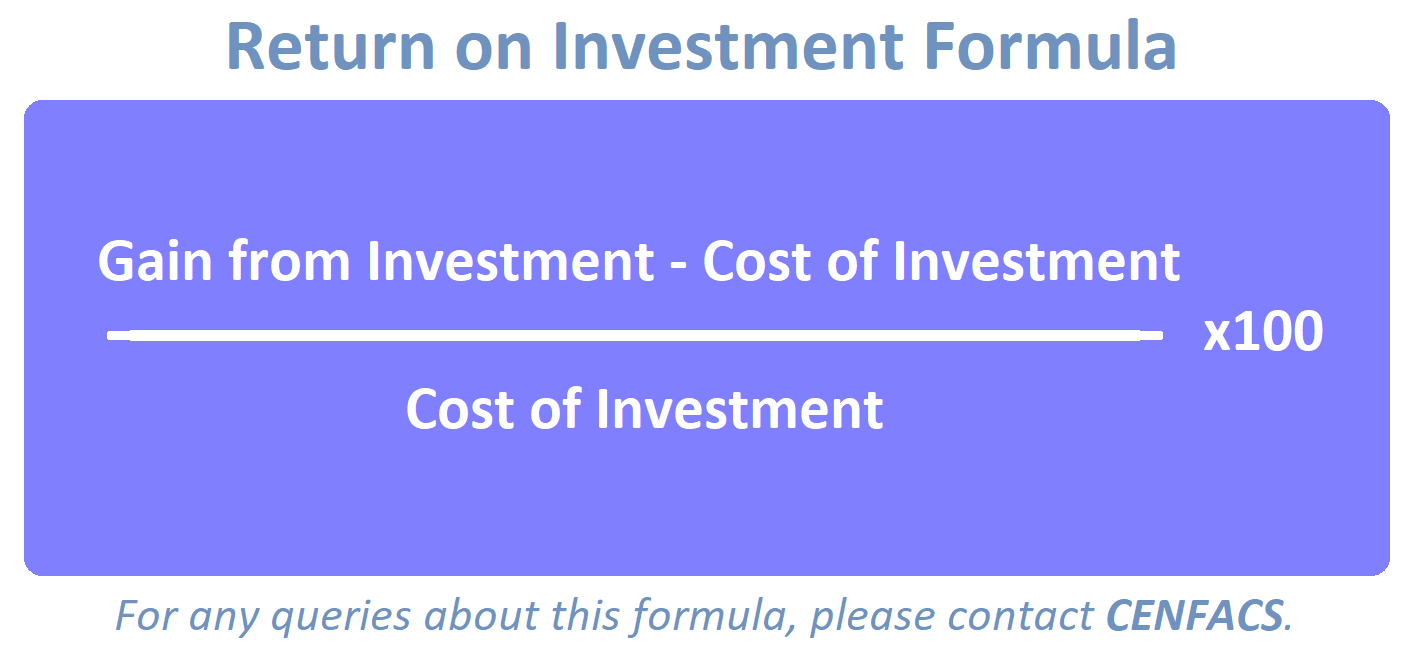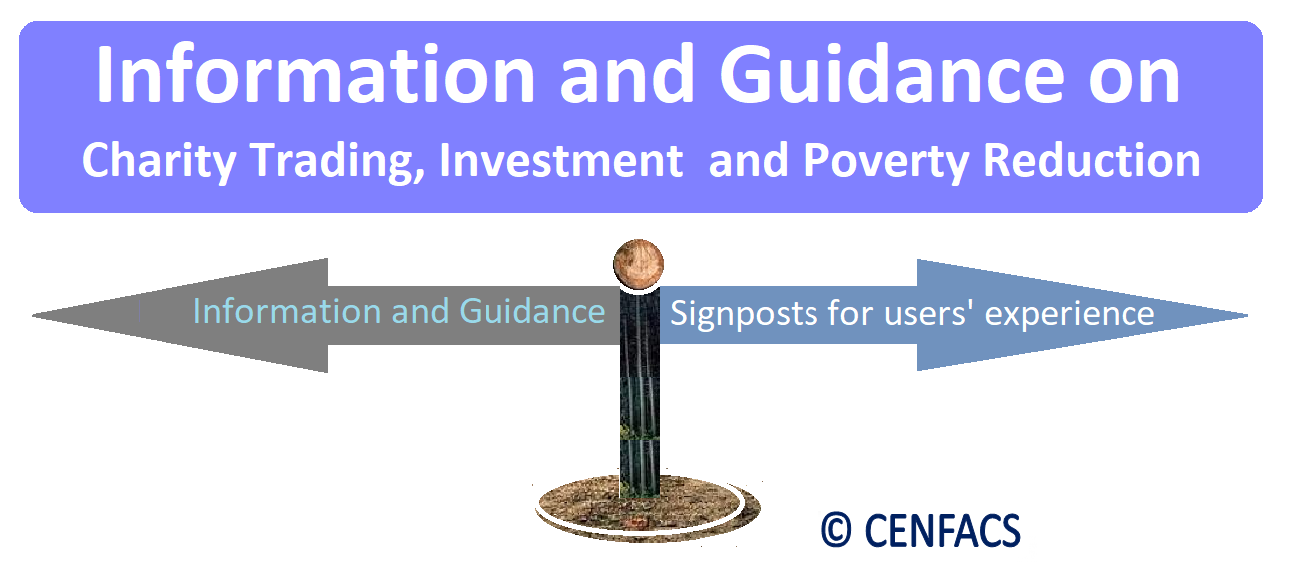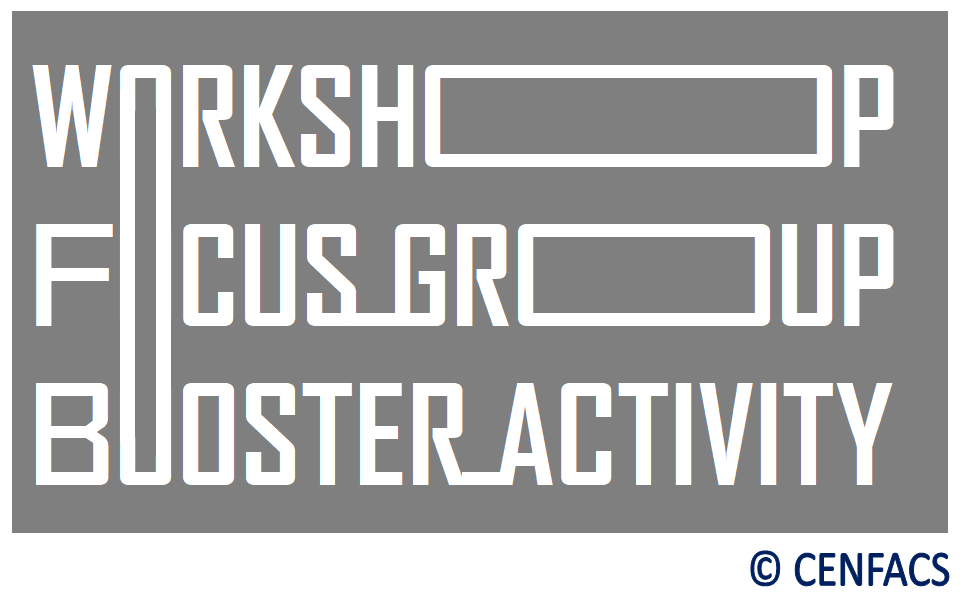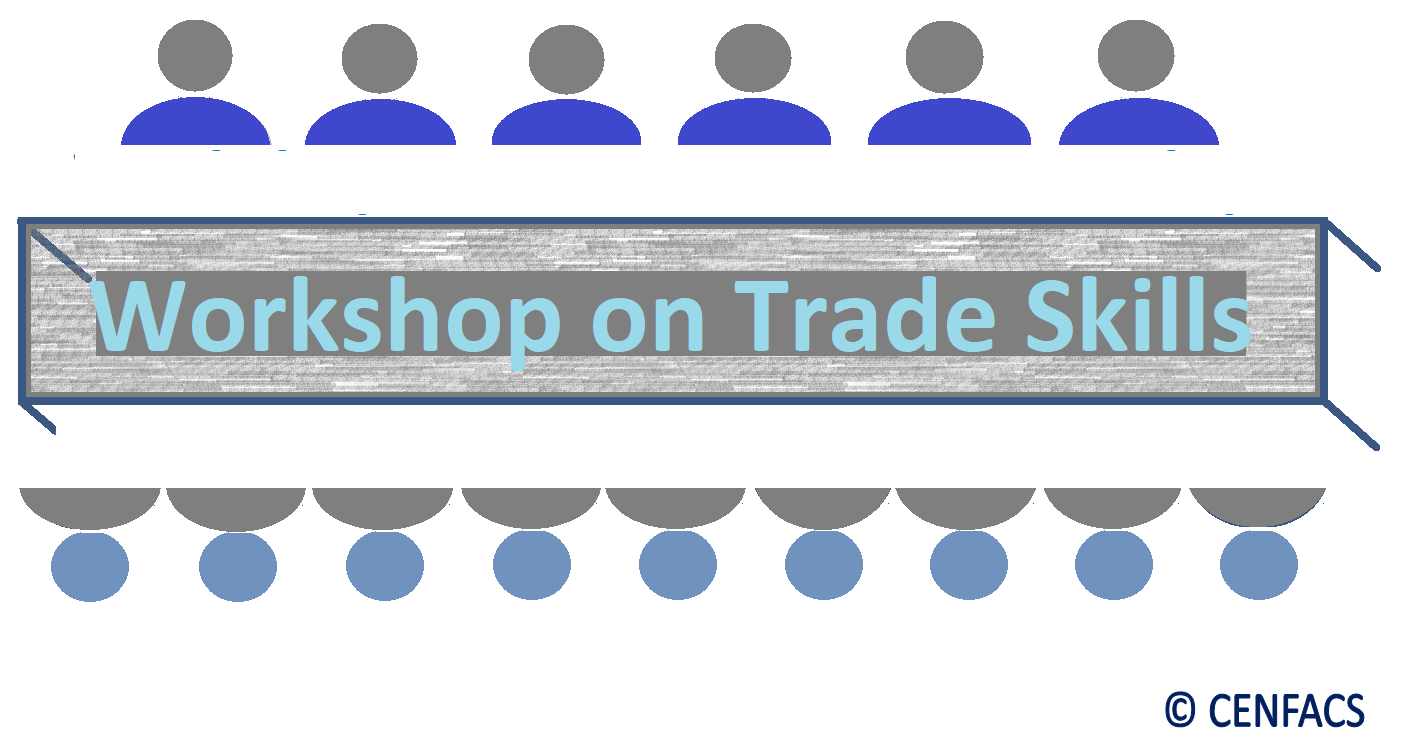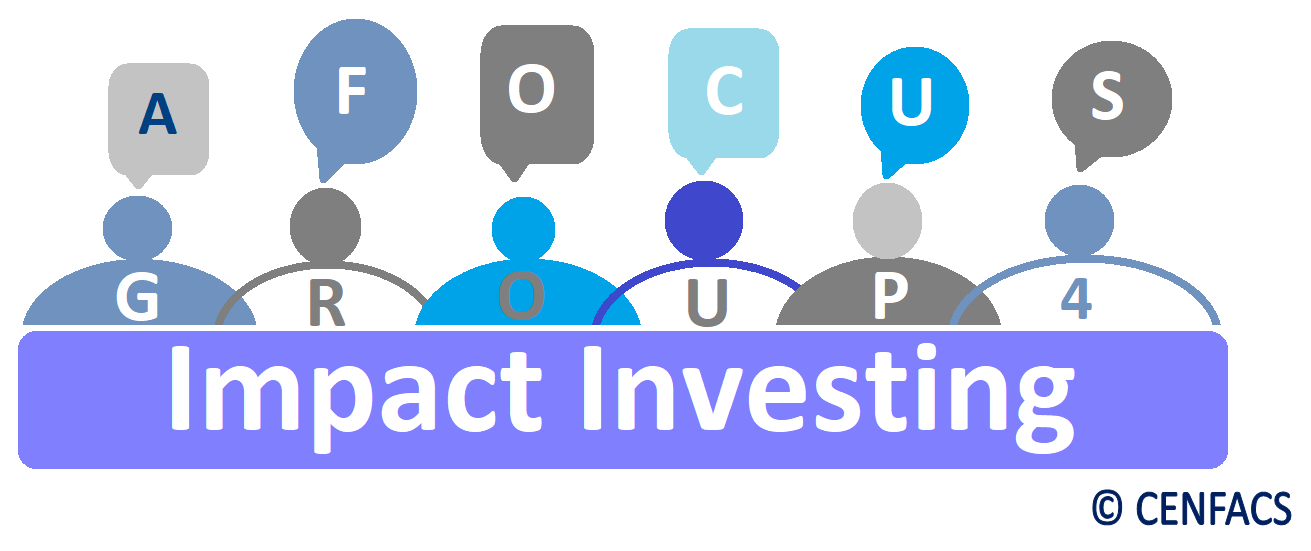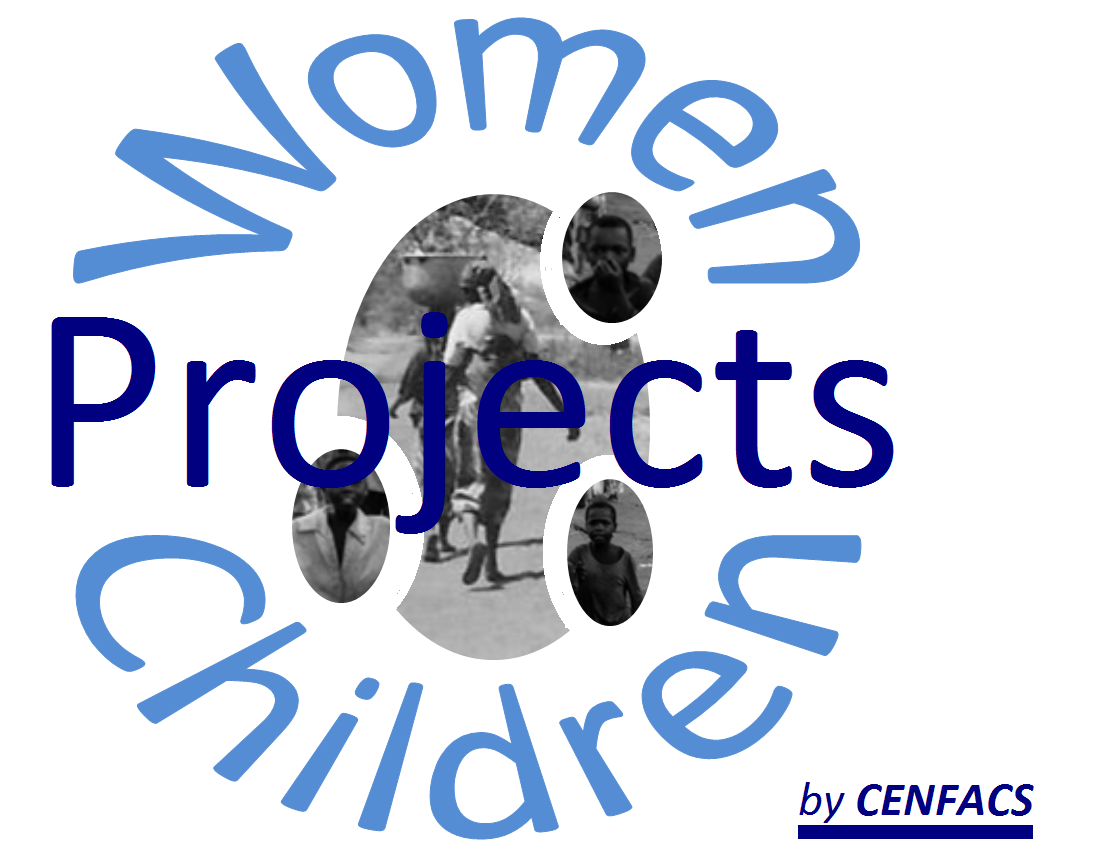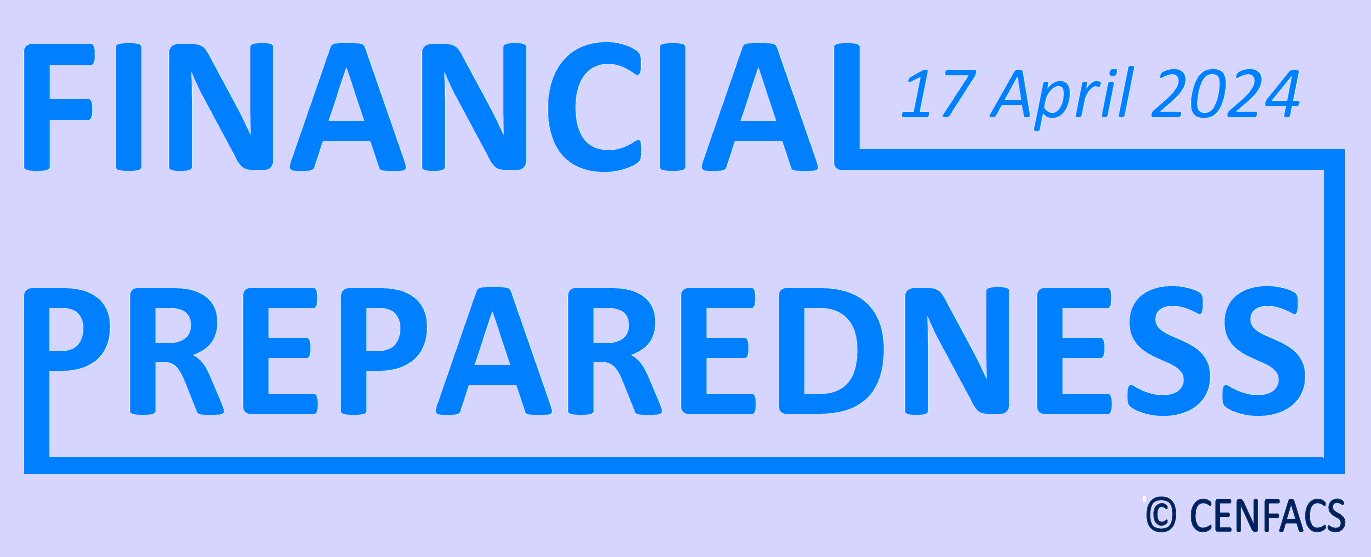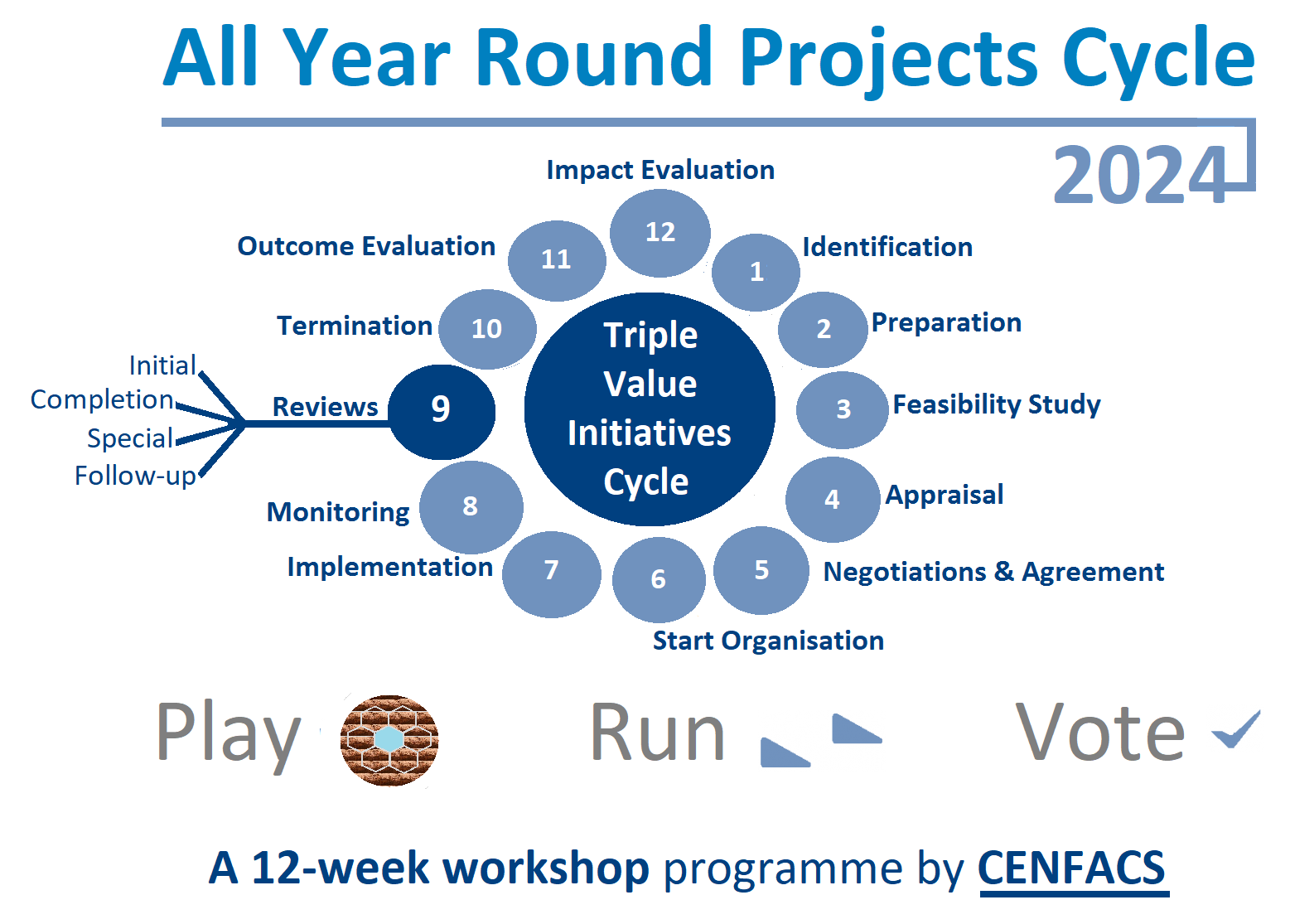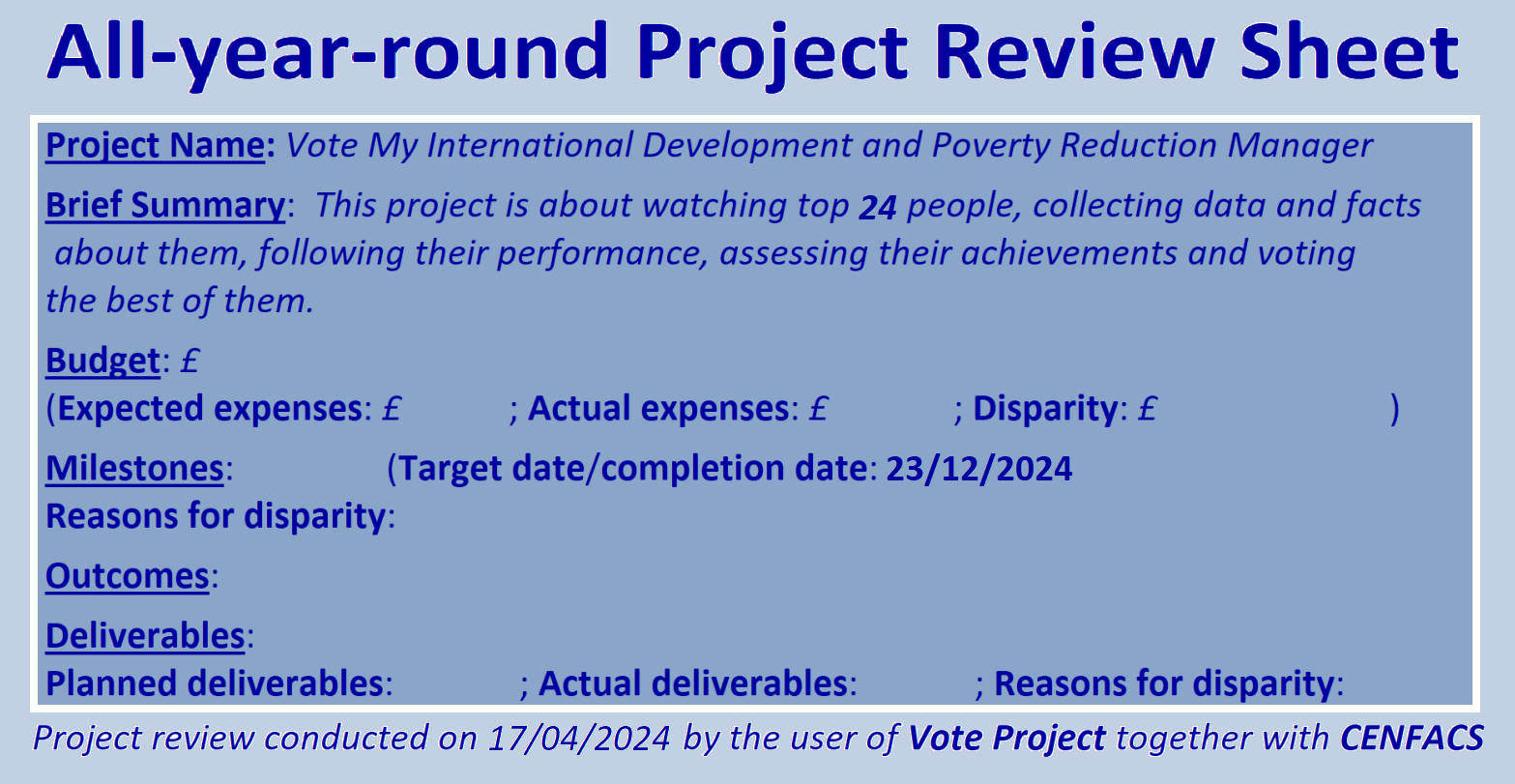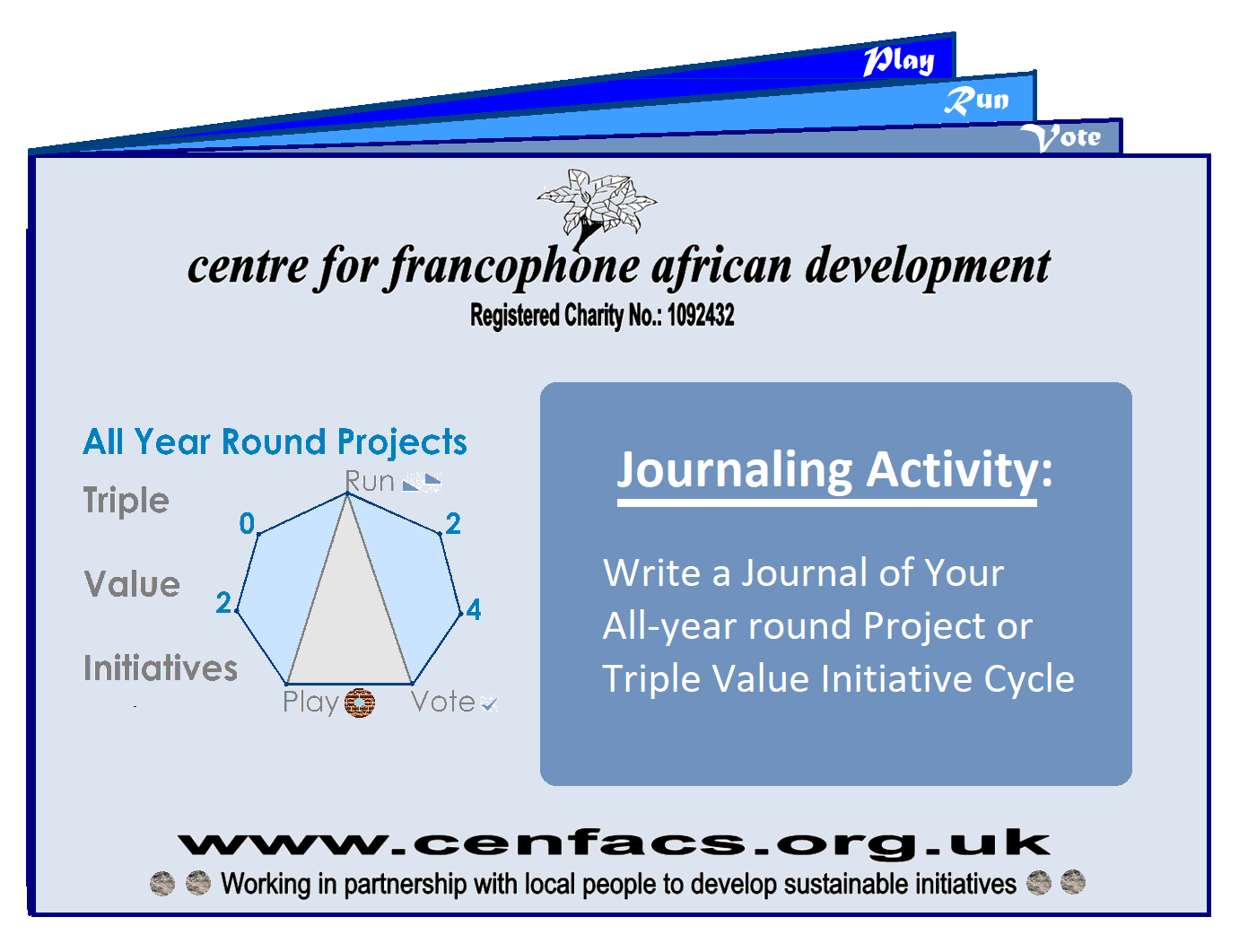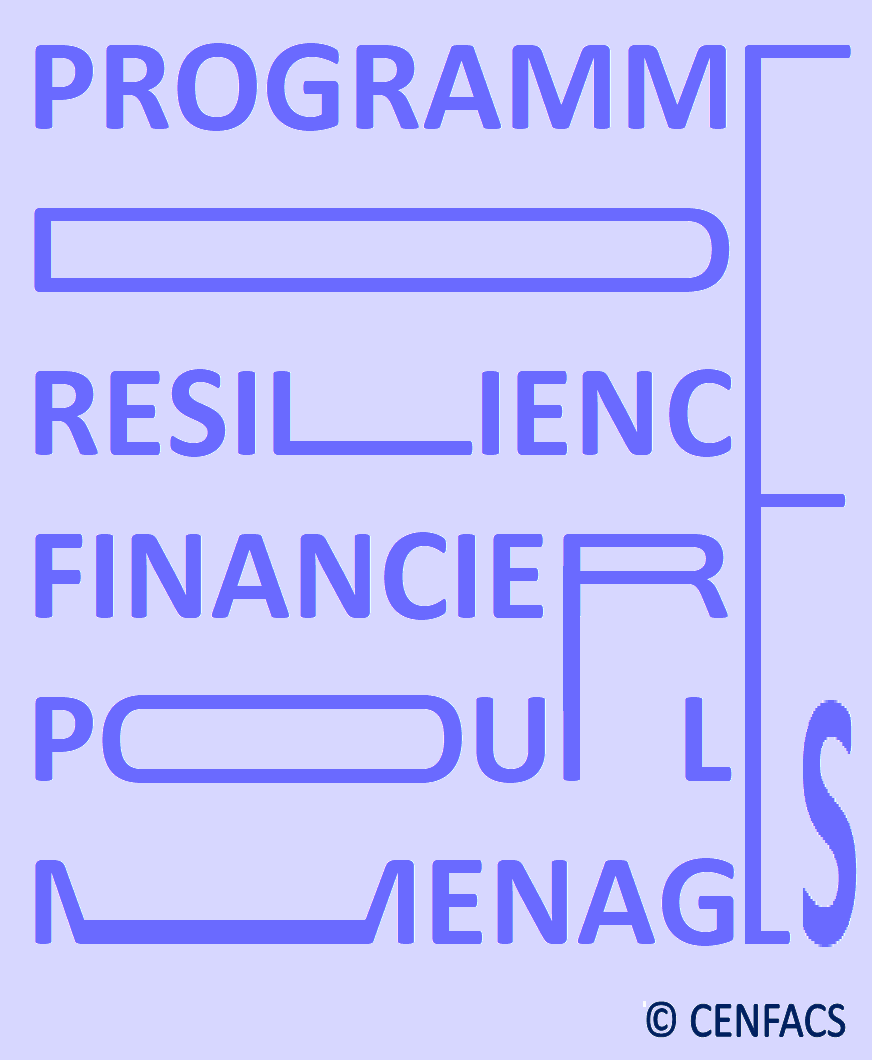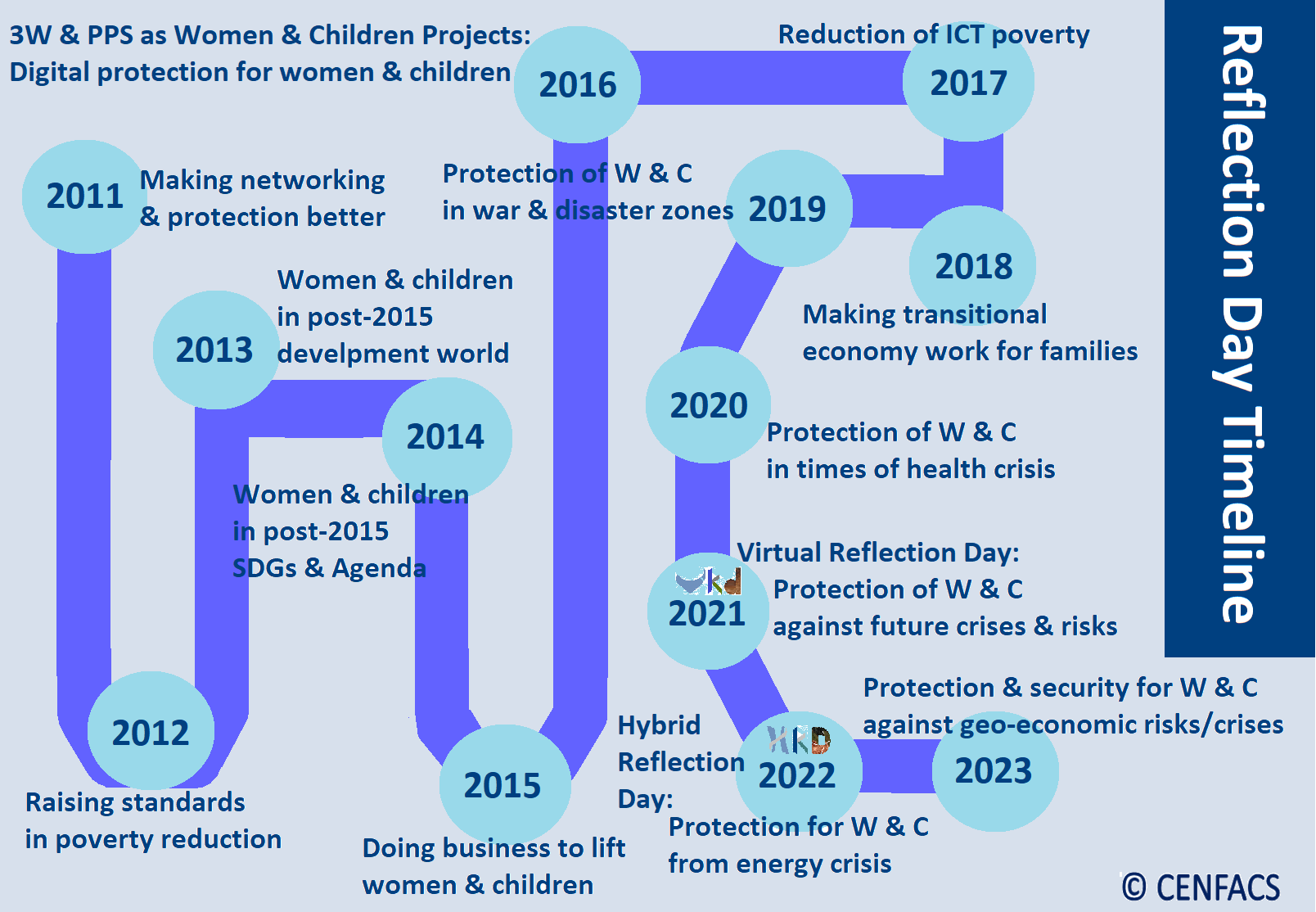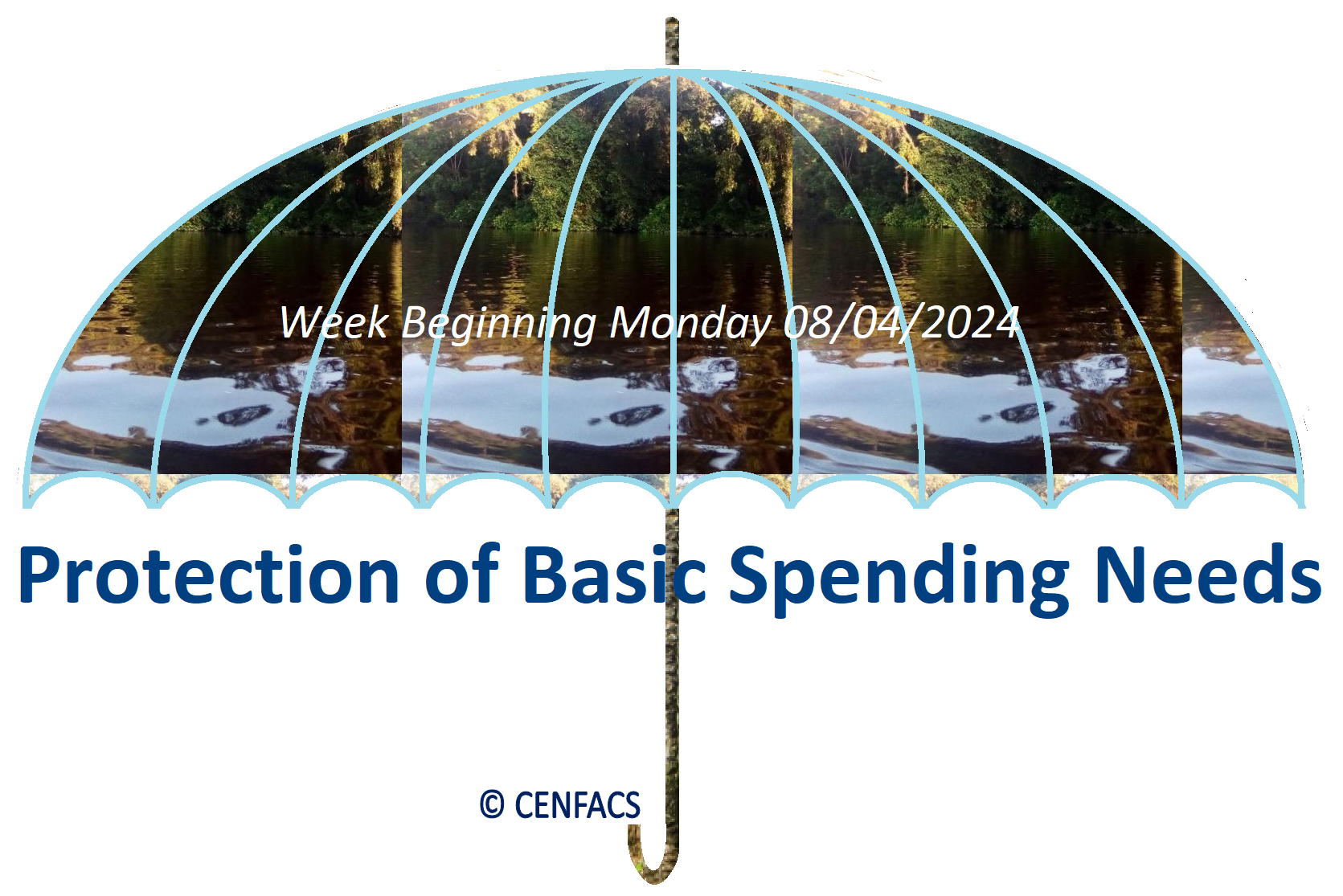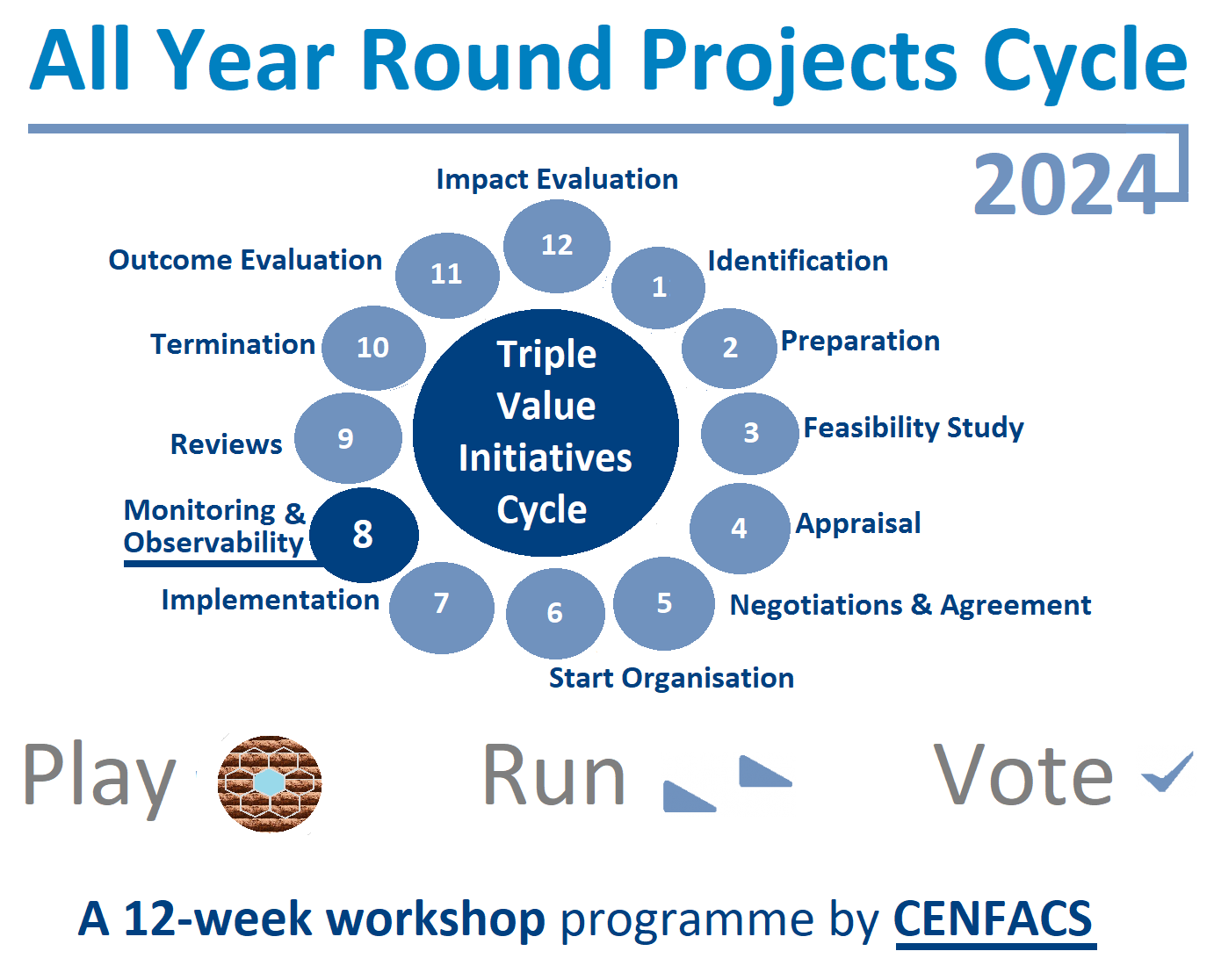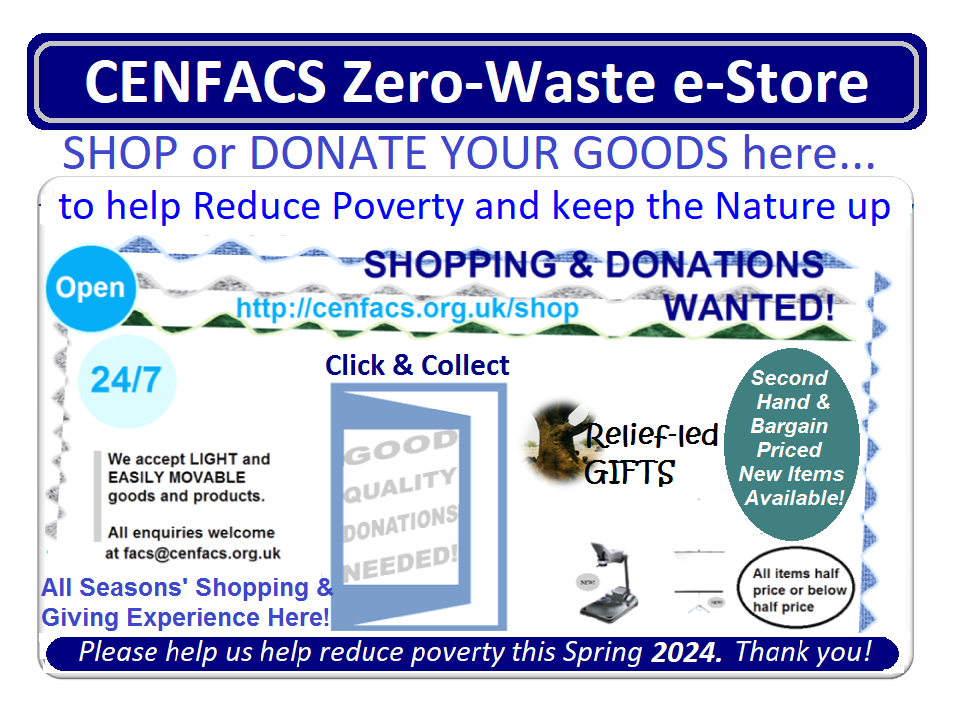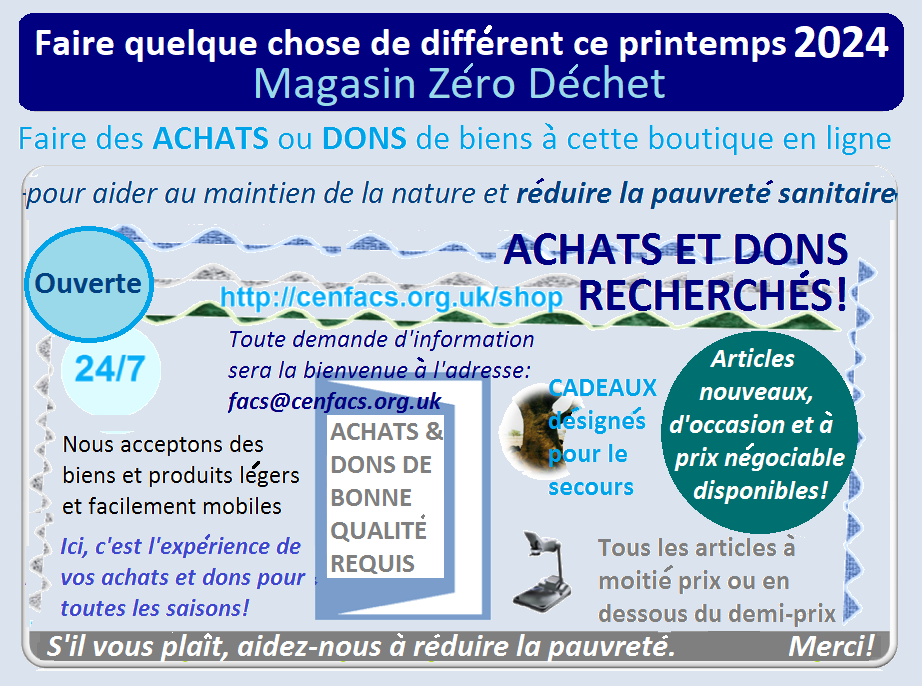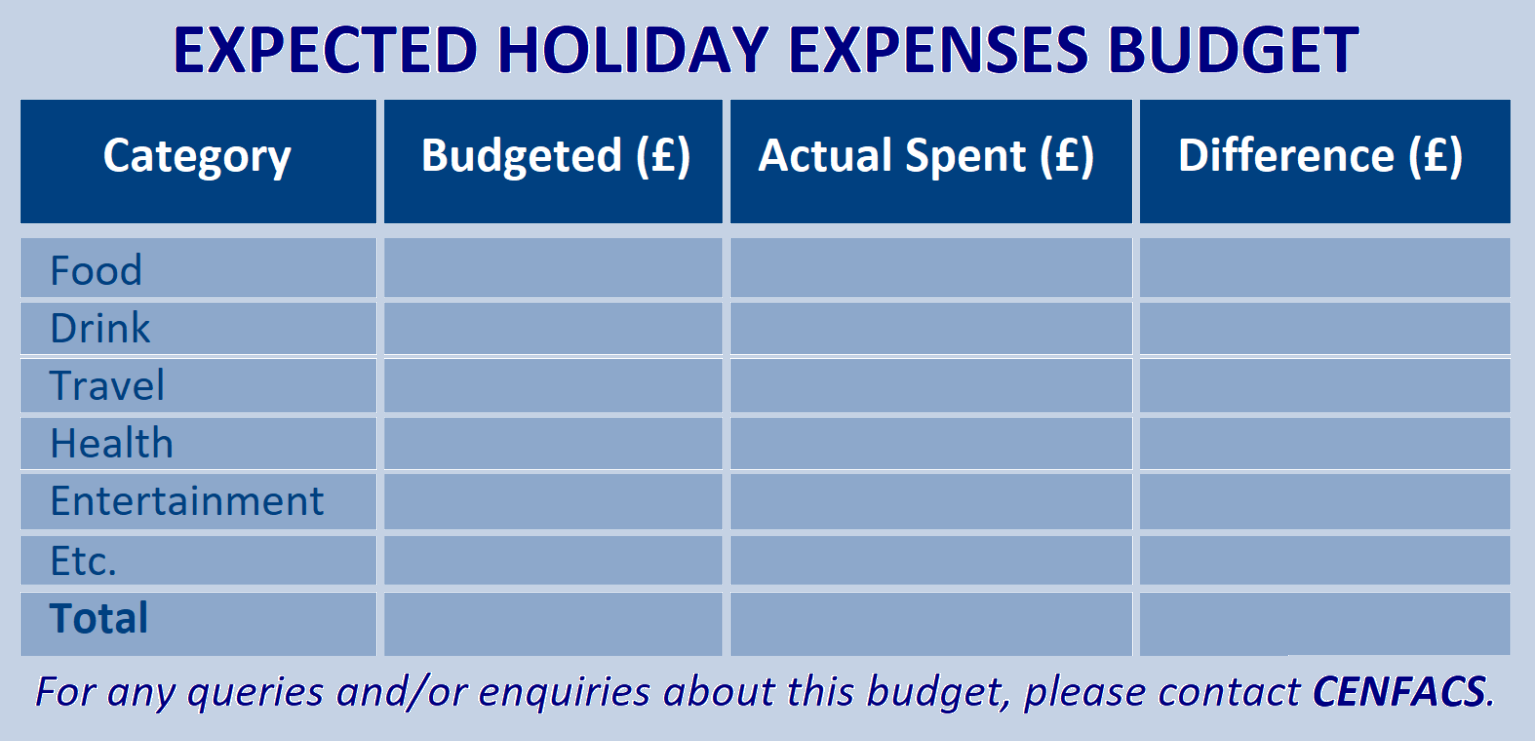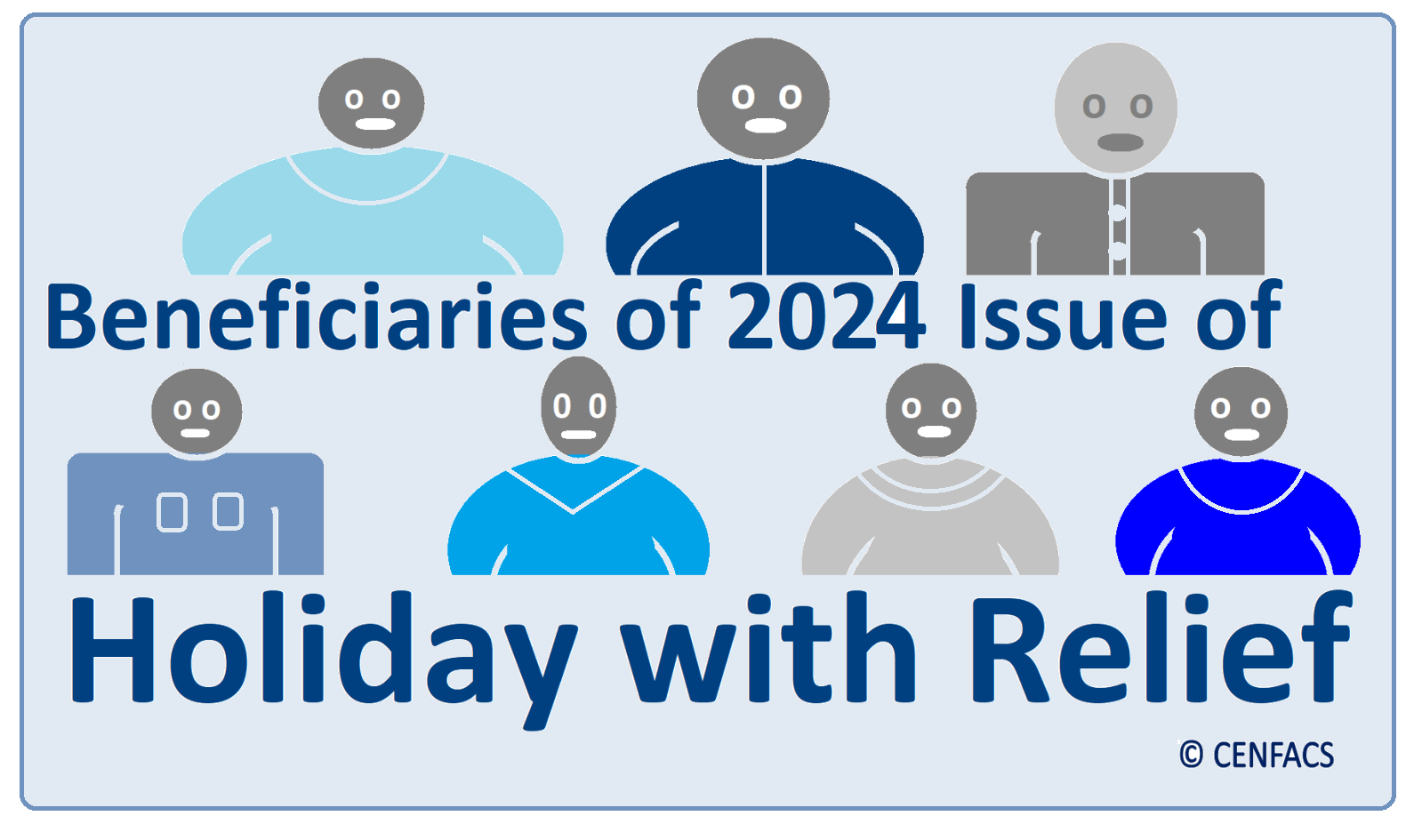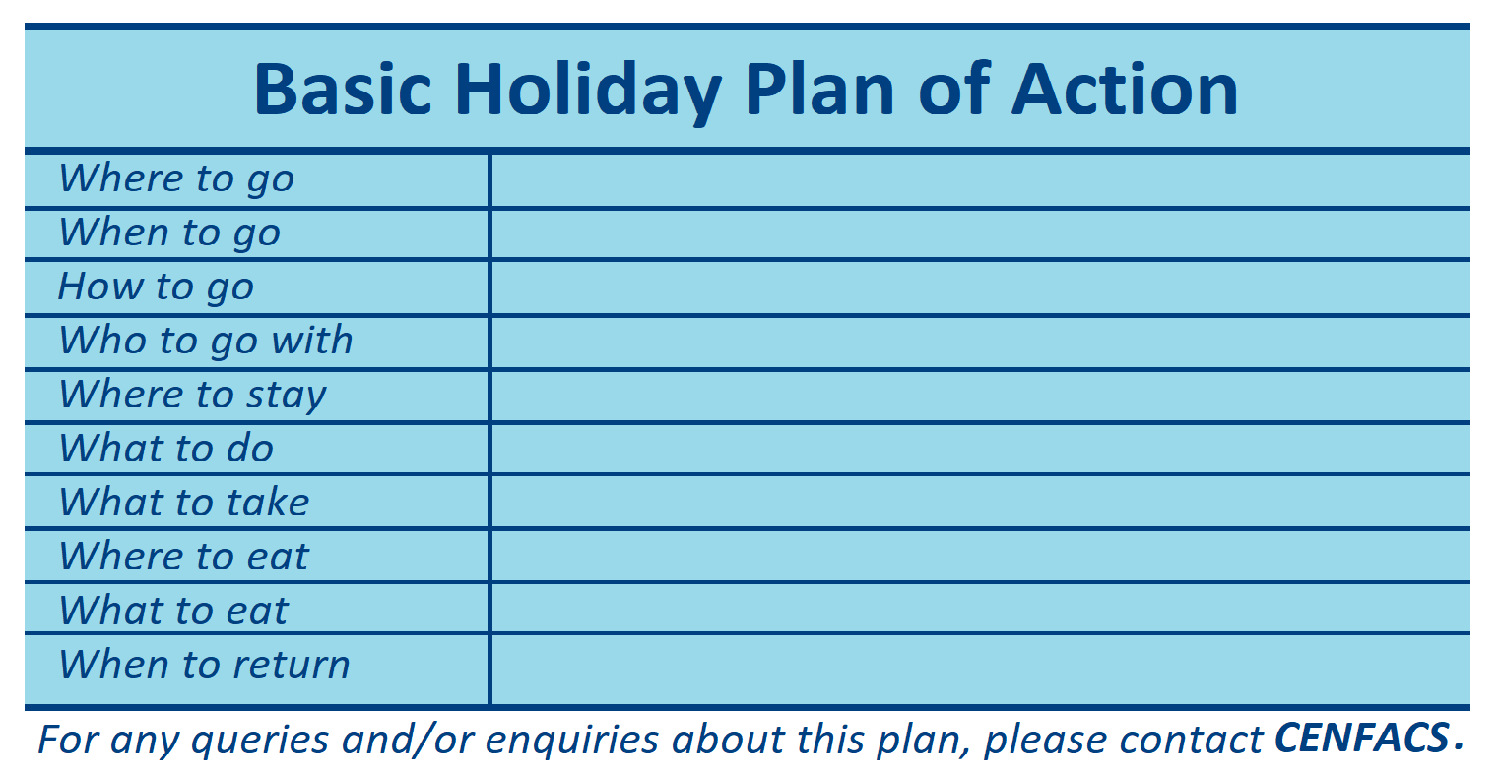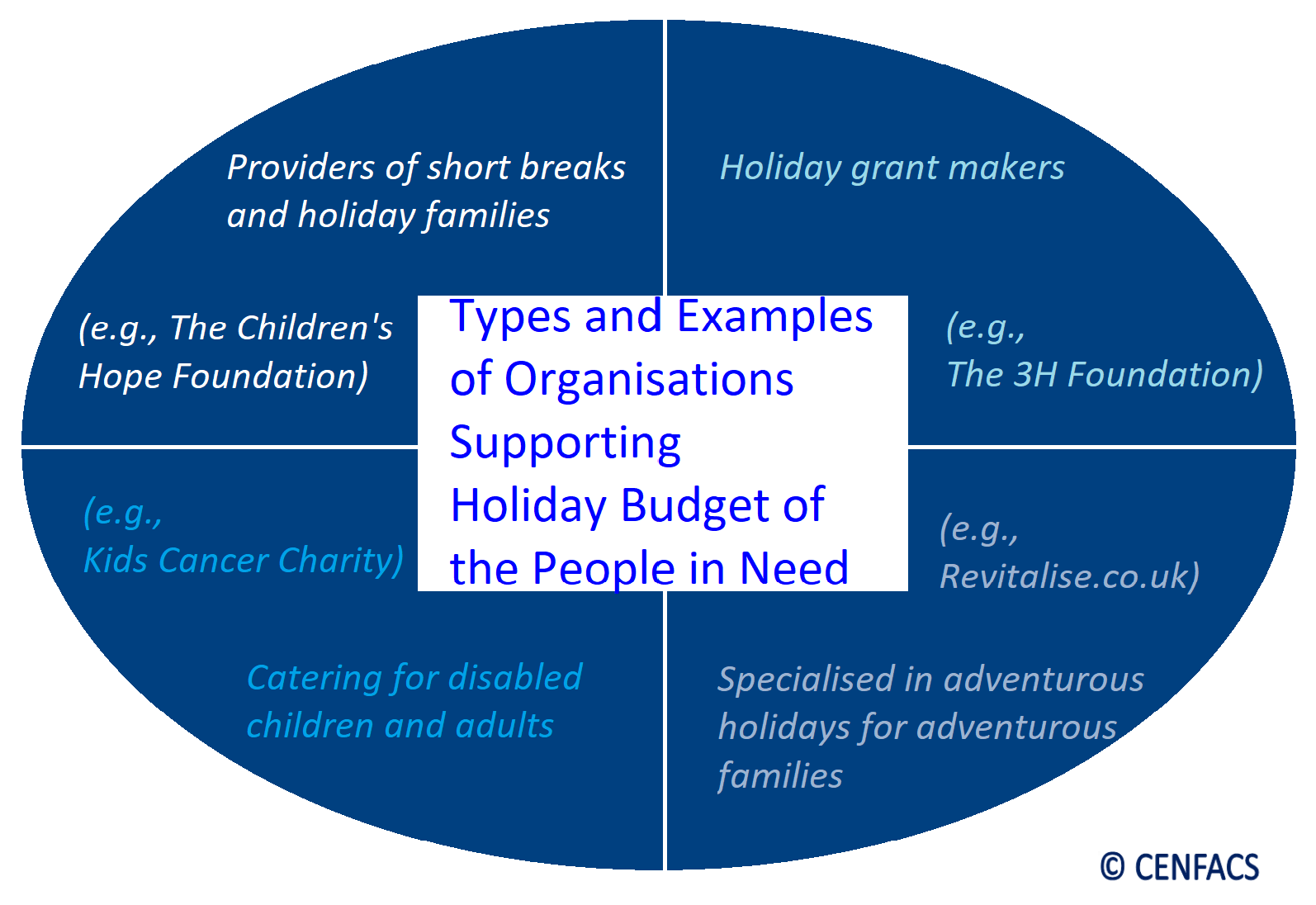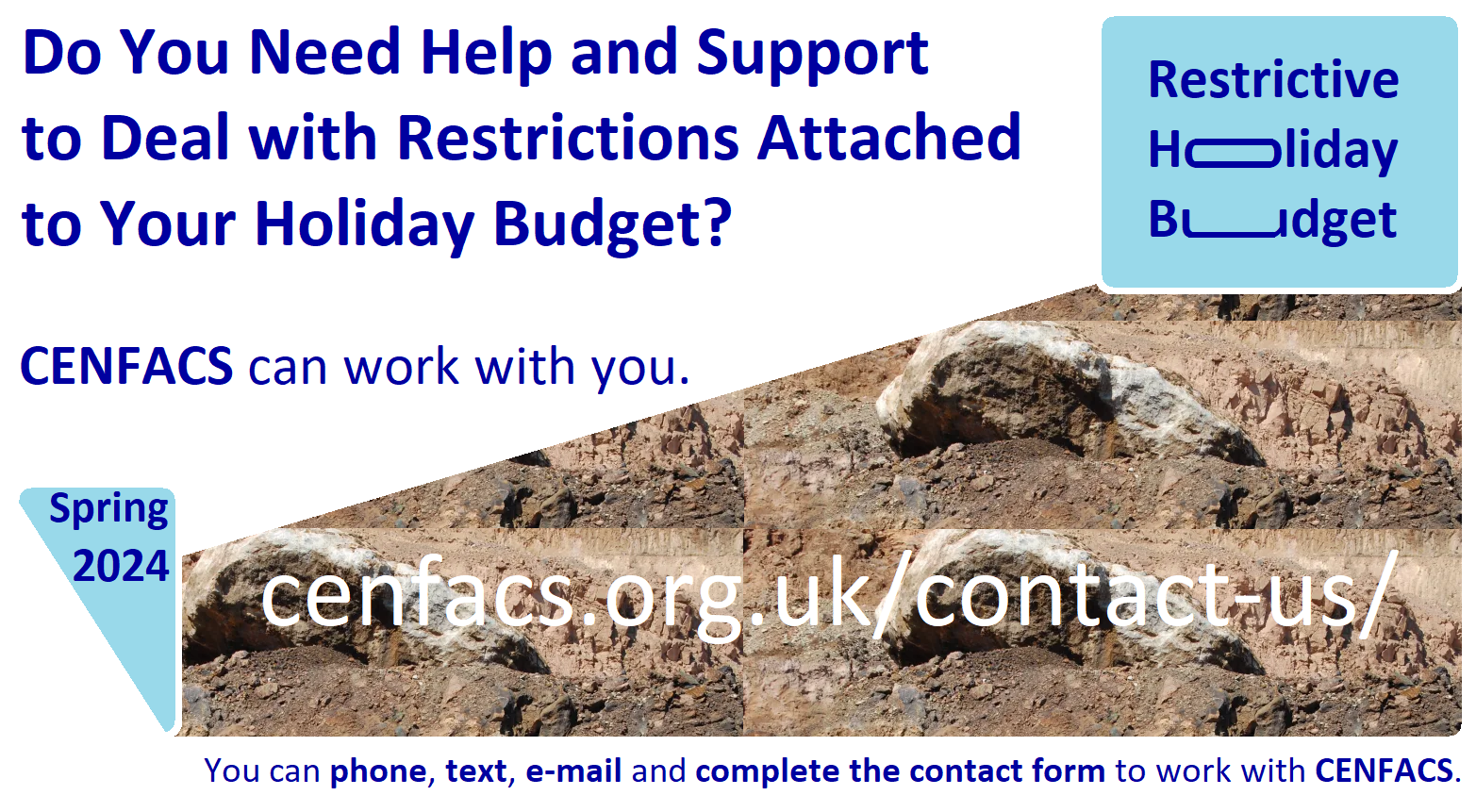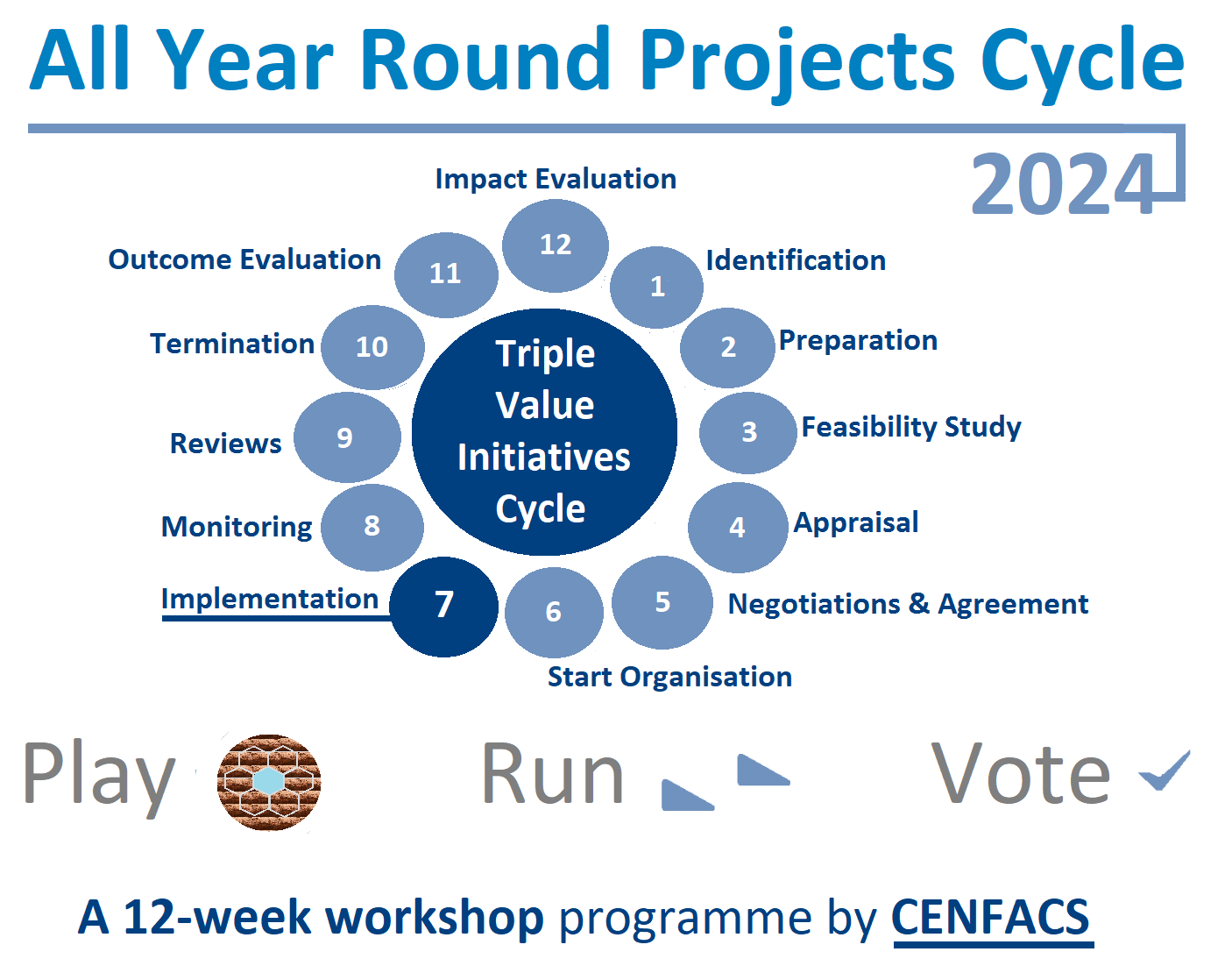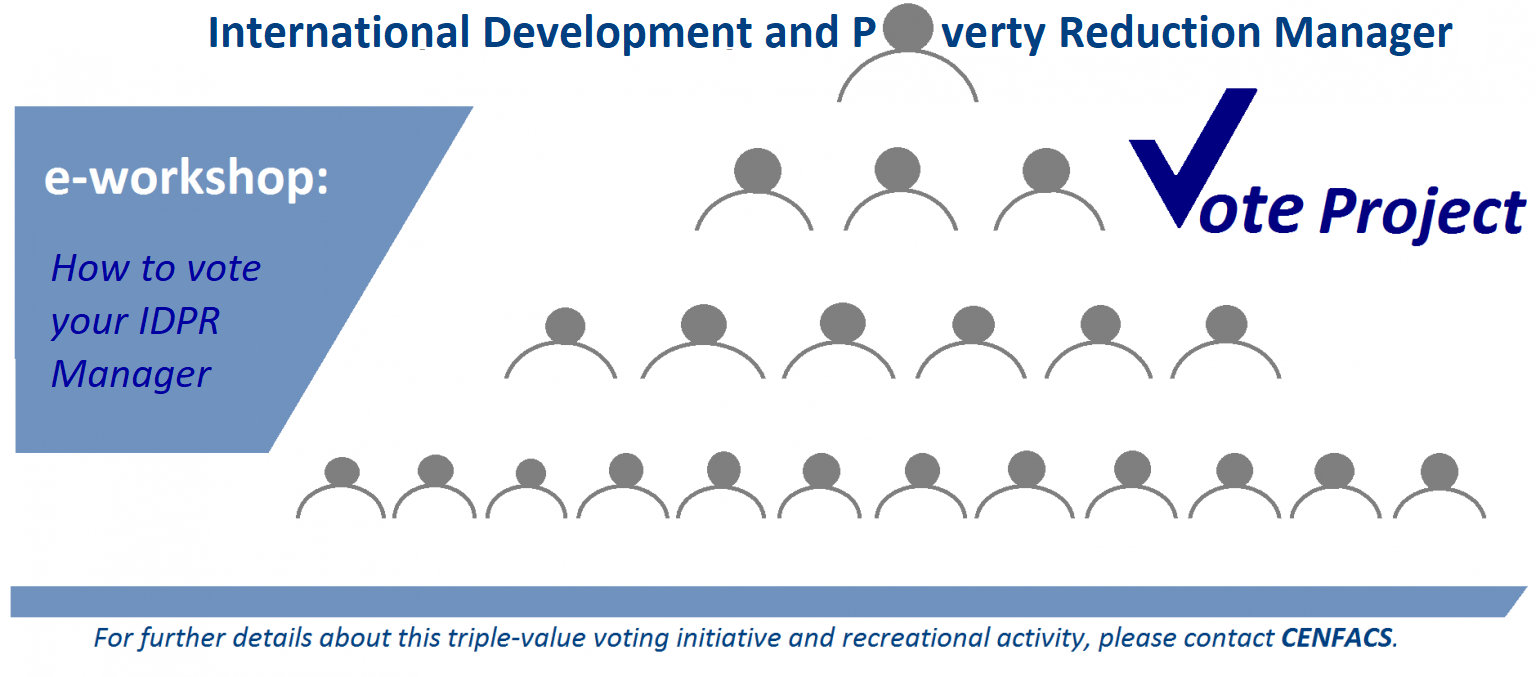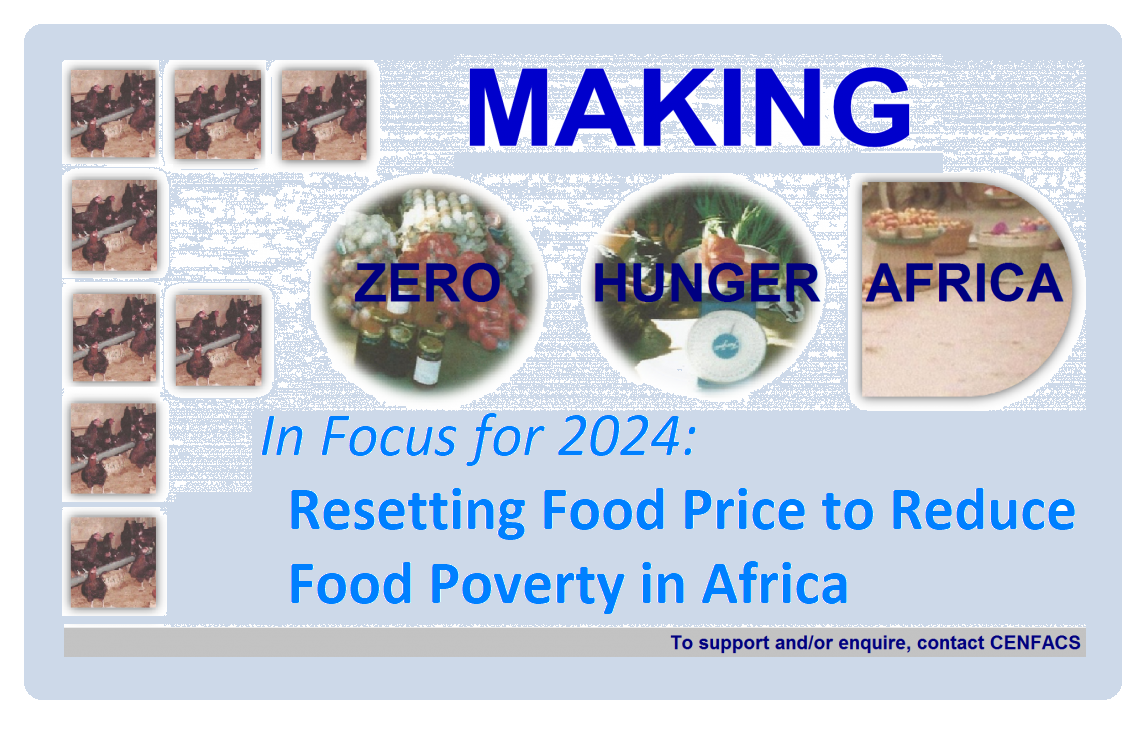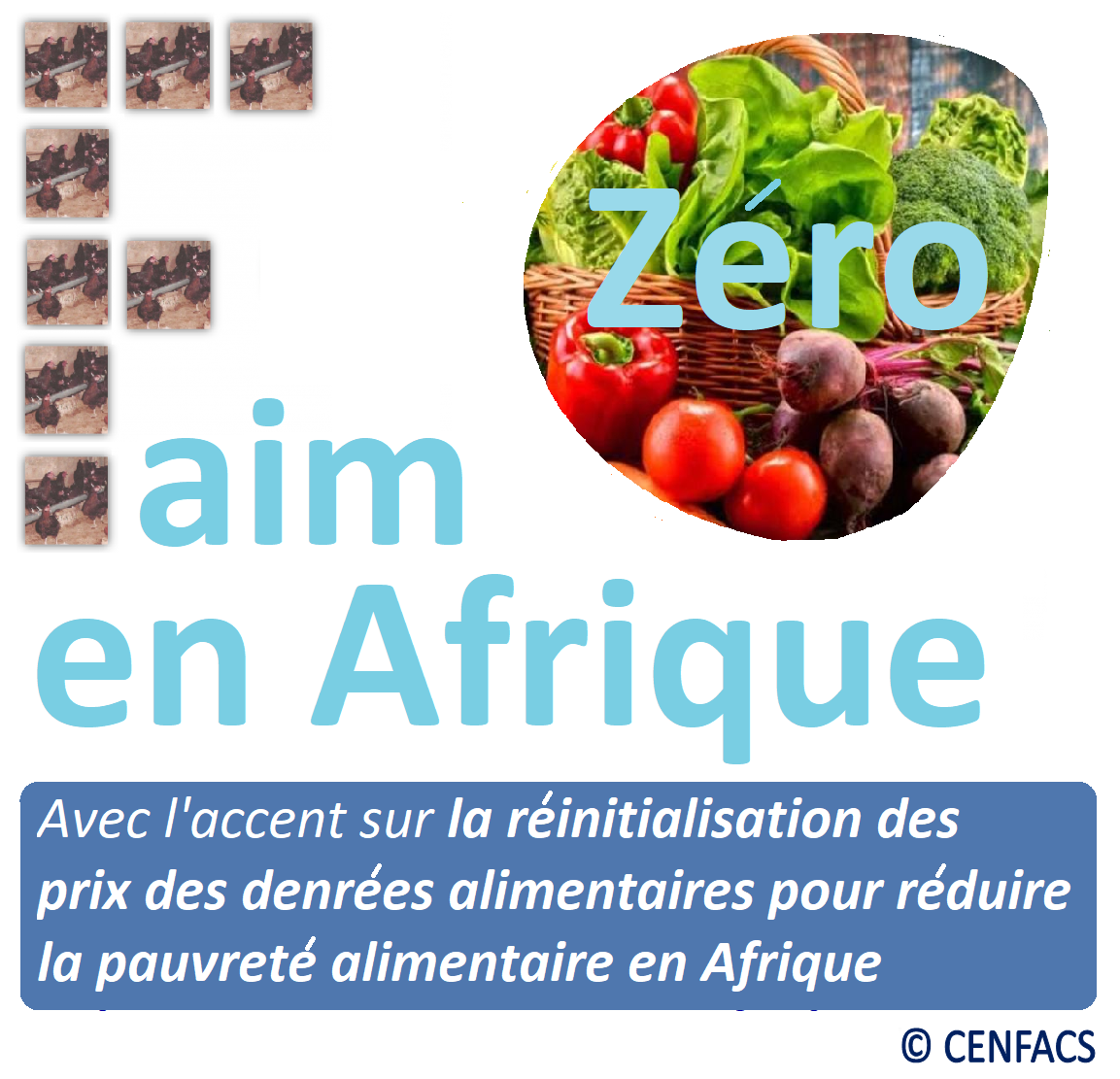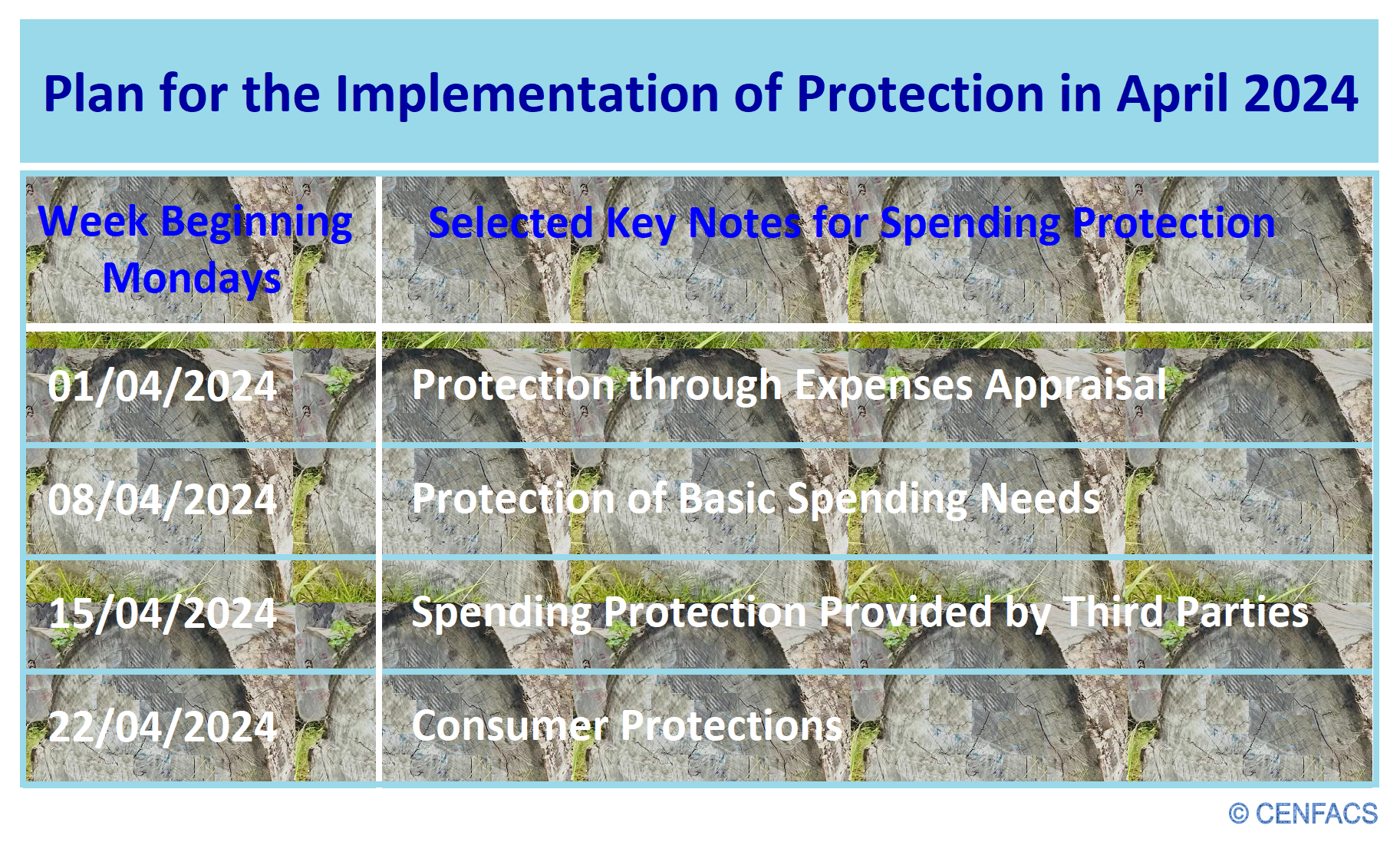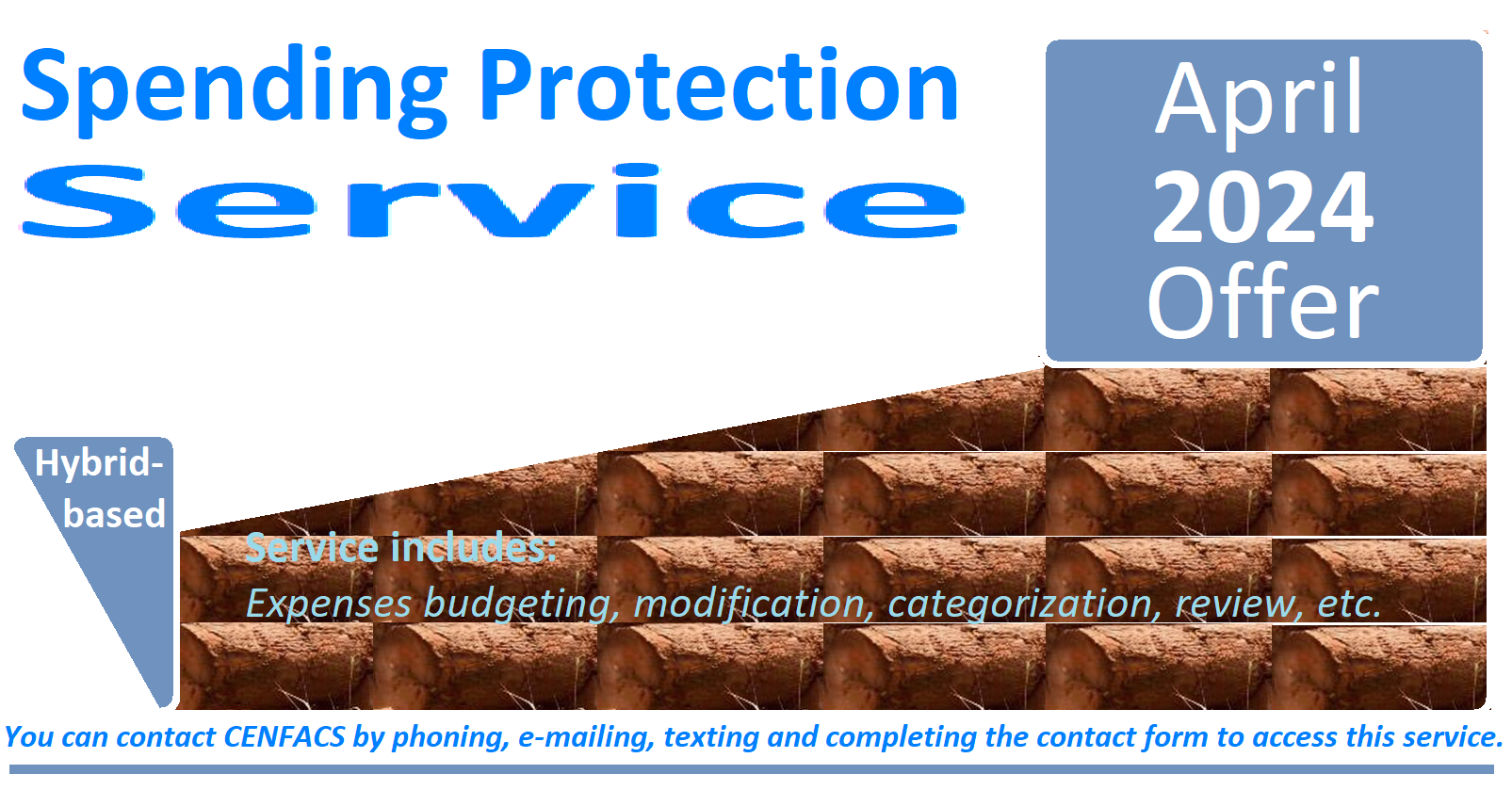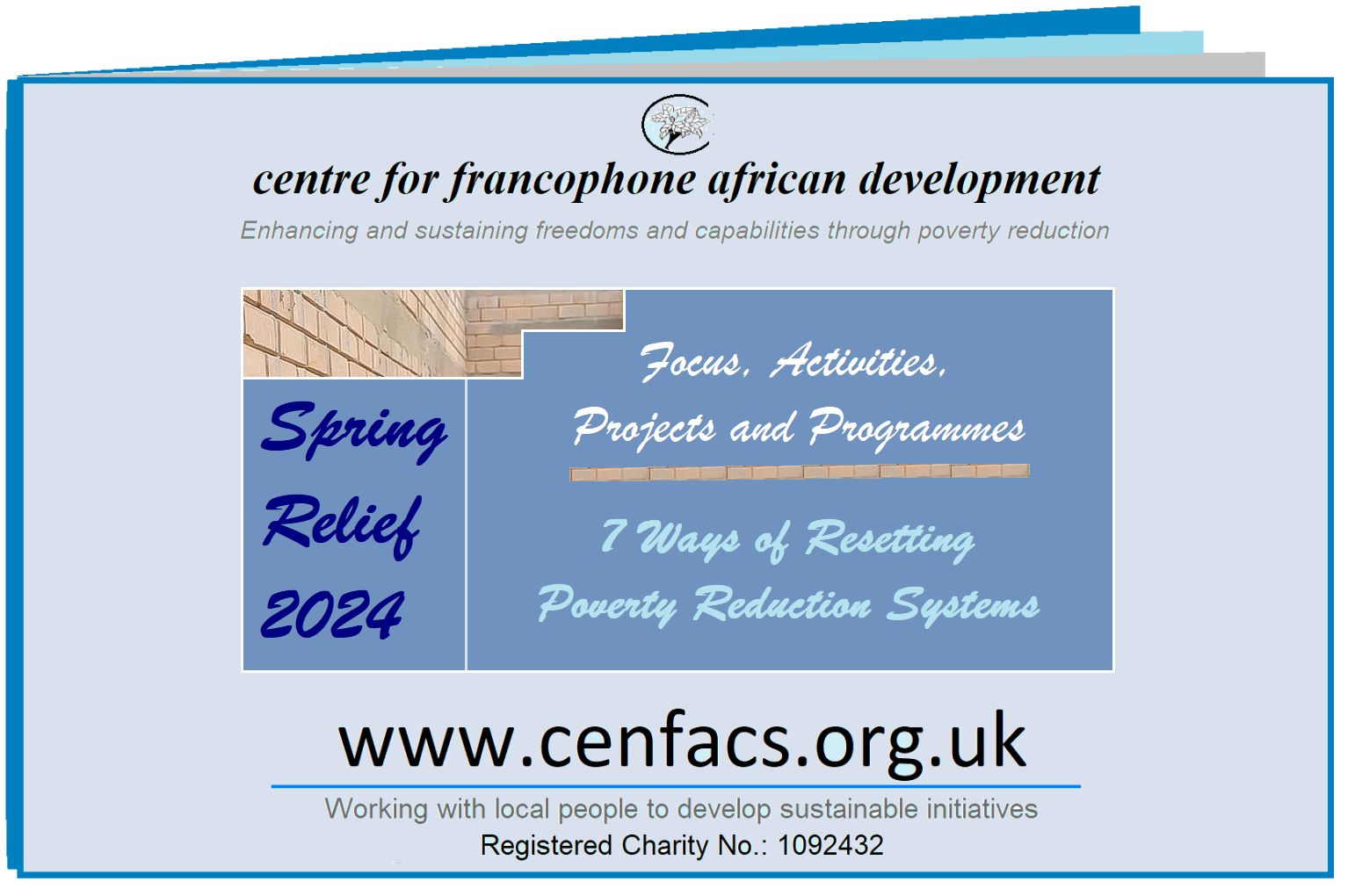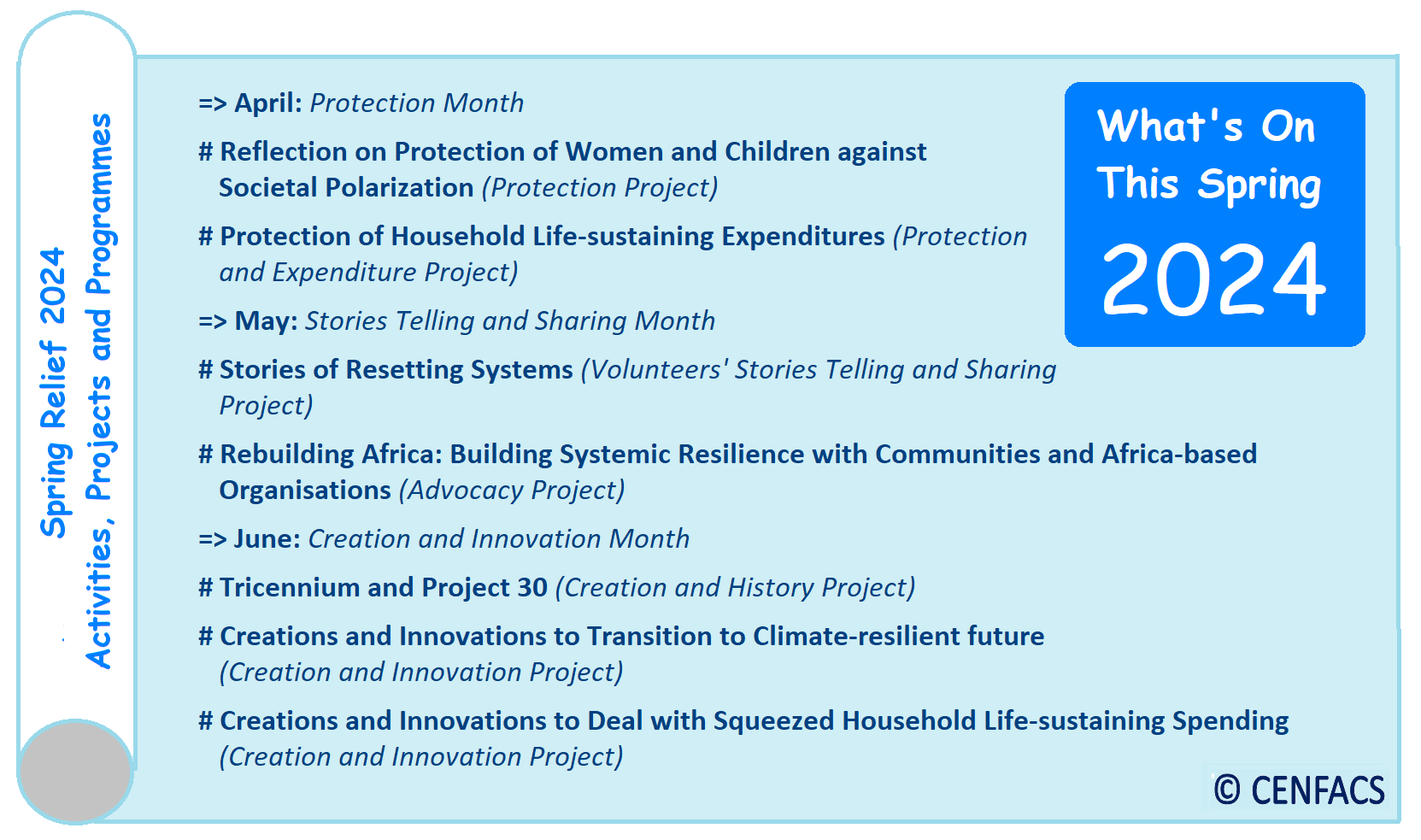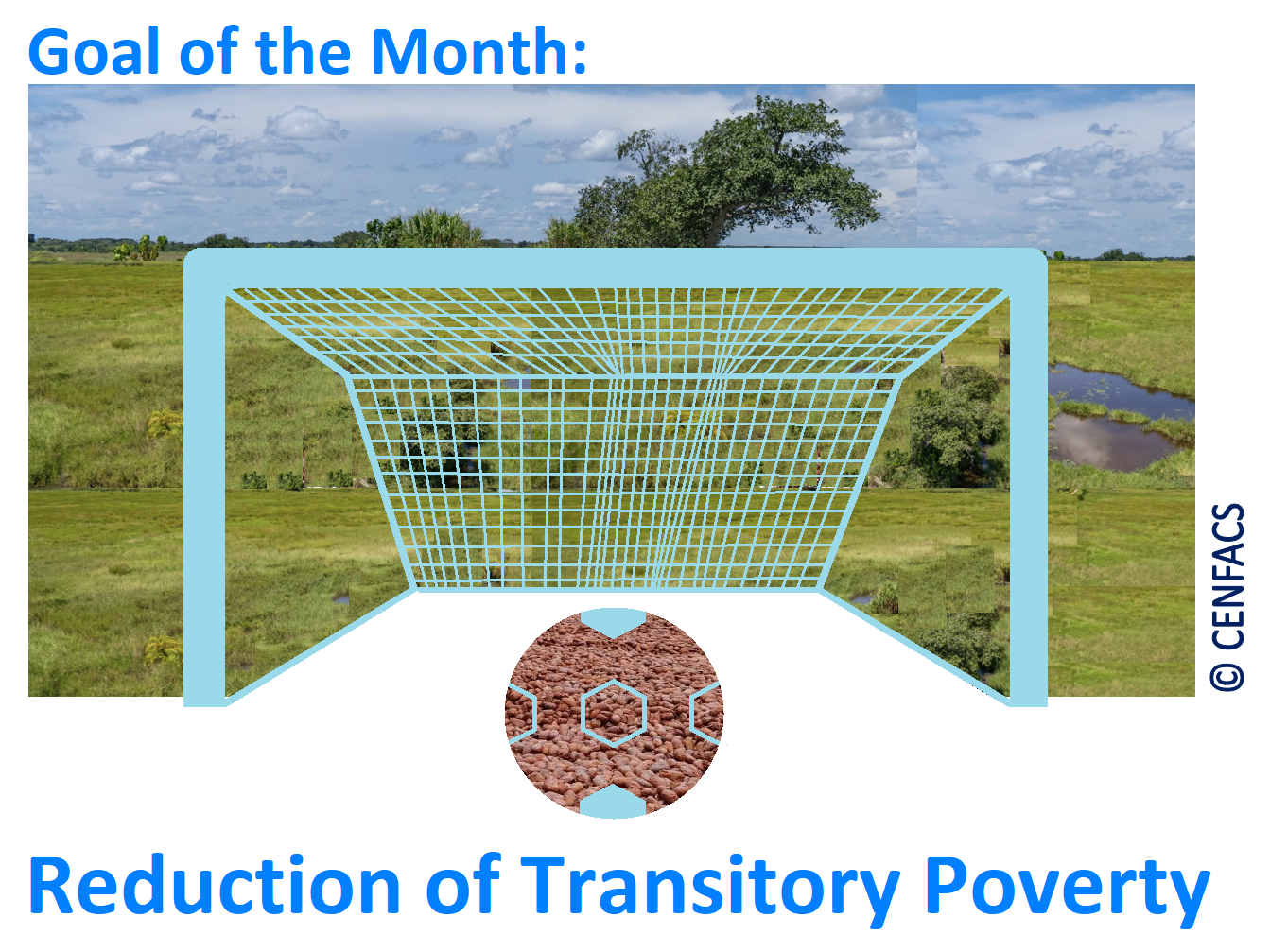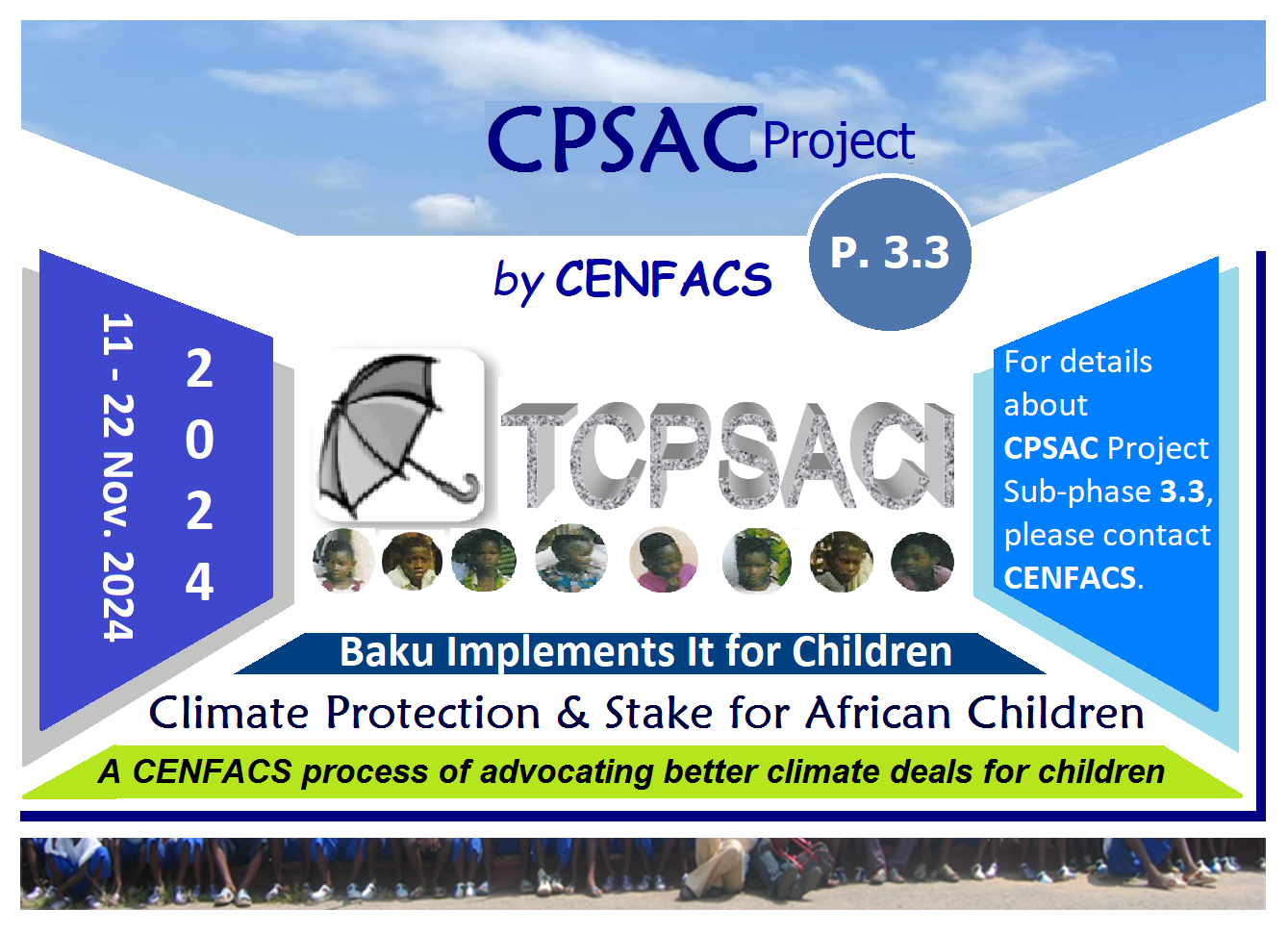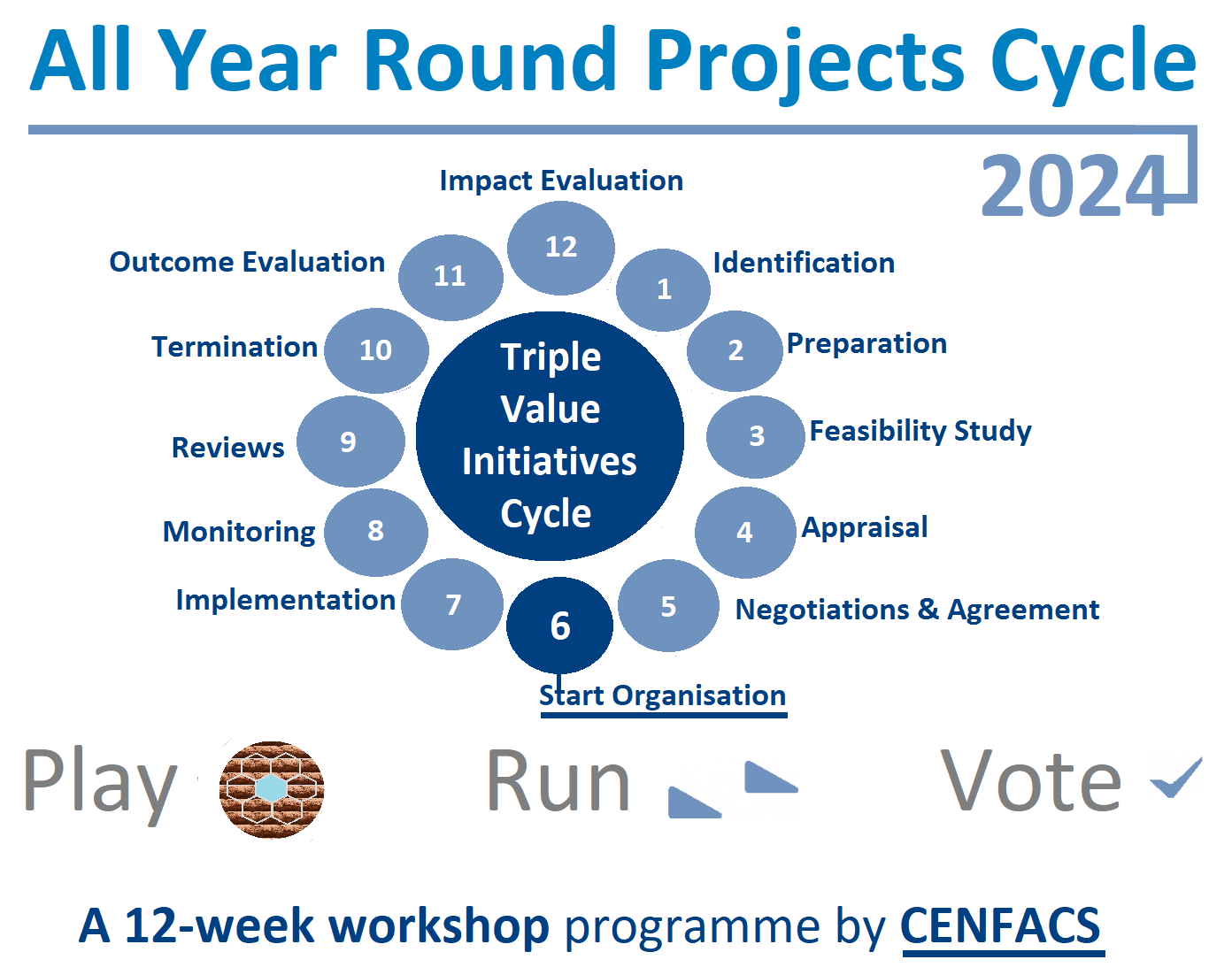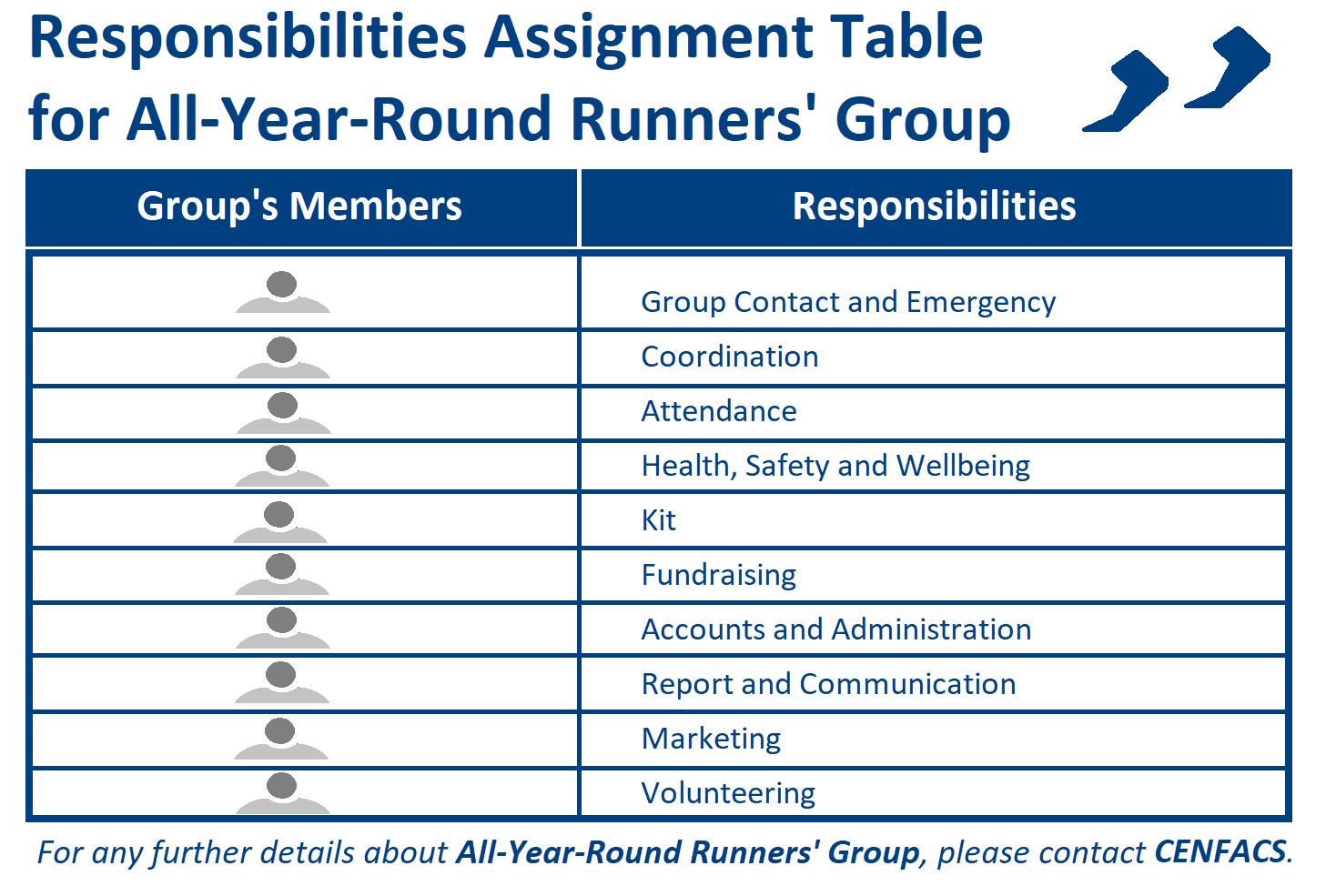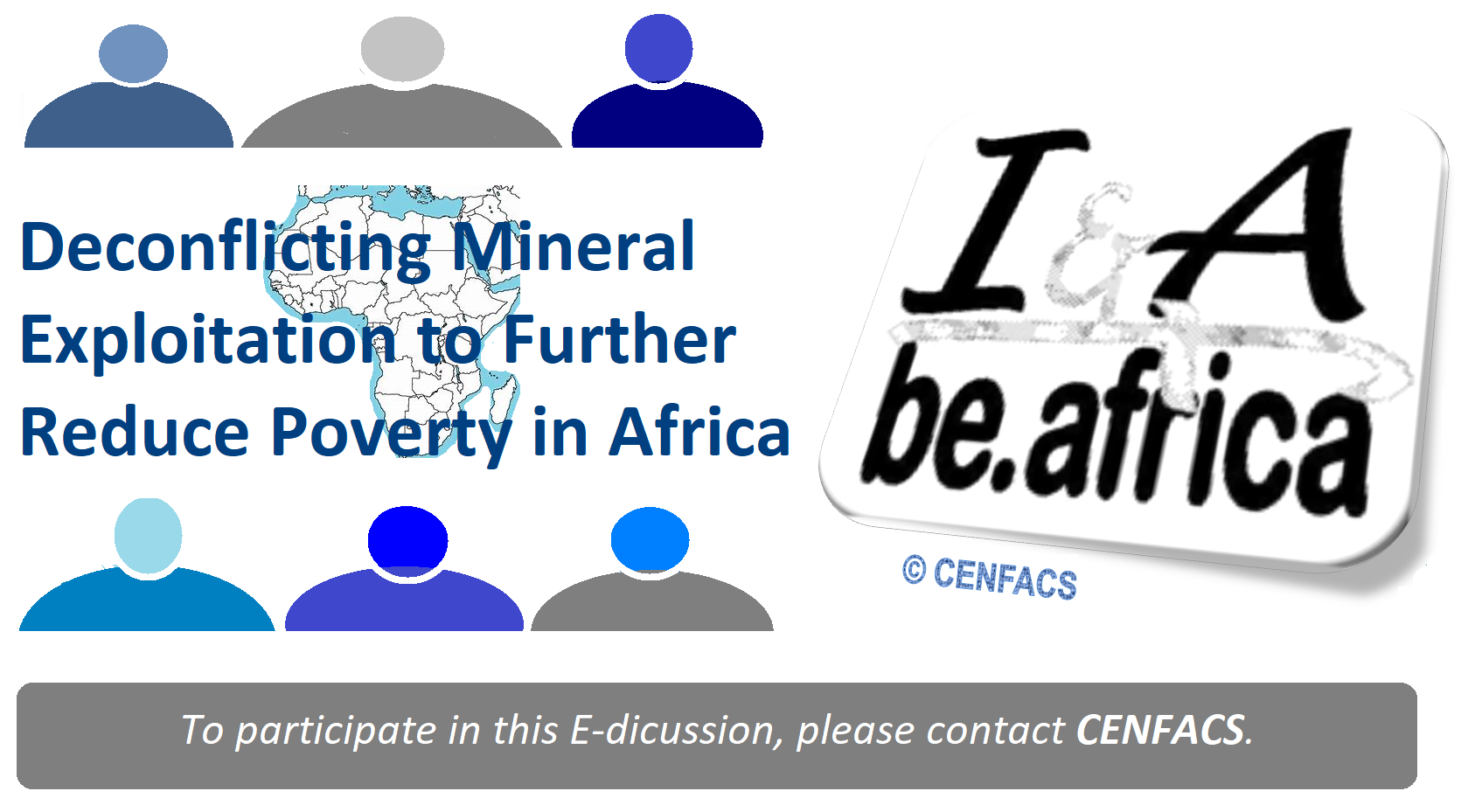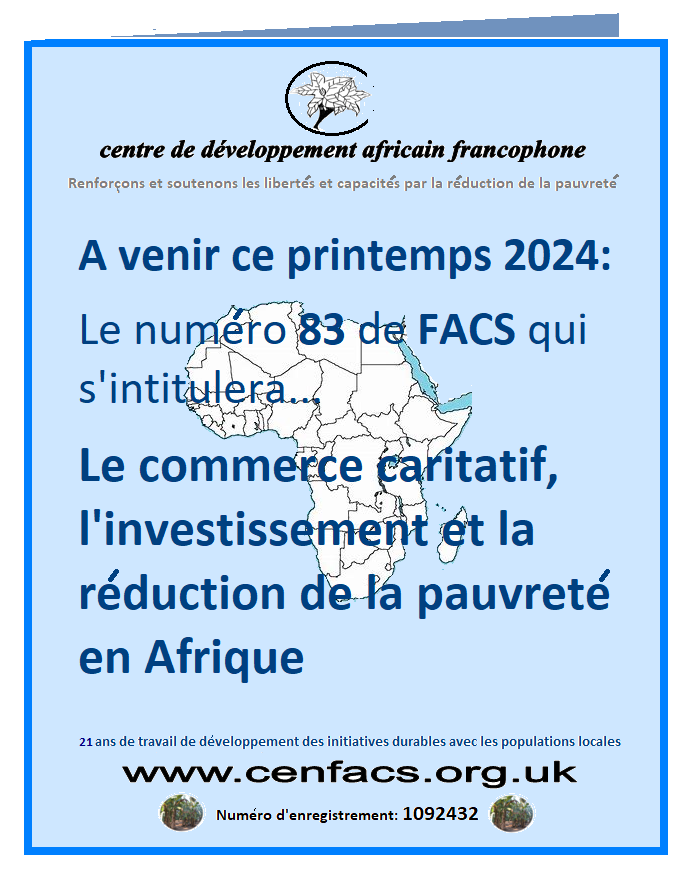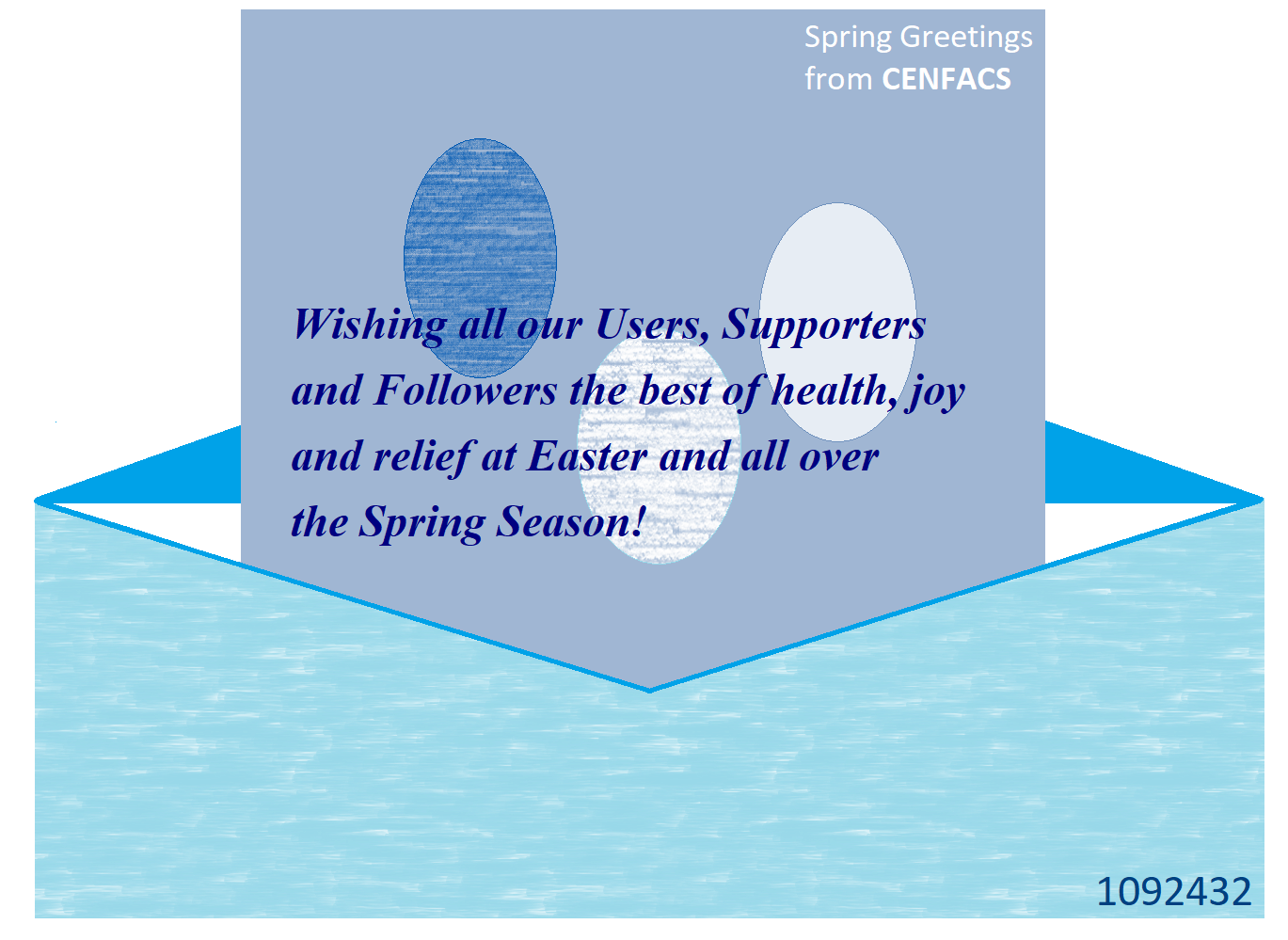Welcome to CENFACS’ Online Diary!
29 May 2024
Post No. 354
The Week’s Contents
• Matching Organisation-Investor via Charity Shop
• Shop at CENFACS’ Zero Waste e-Store during This Spring Giving Season
• Systemic Resilience Rebuilding Projects and Activities
… And much more!
Key Messages
• Matching Organisation-Investor via Charity Shop
We have a new project for our Matching Organisation-Investor Programme, which is part of CENFACS’ Guidance Programme to not-for-profit impact investors. The new project is an extension of some of the points we made this Spring 2024 about charity trading in the Issue No. 83 of FACS. This Issue is titled as Charity Trade, Investment and Poverty Reduction in Africa.
The new project is about matching an African charitable organisation’s project to set up a charity shop and a prospective investor who may be interested in impact investing in charity shops. The charitable organisation is planning to sell goods by opening up a charity shop as ancillary or non-primary trading outlet to raise money for its good cause while a potential investor is looking to invest in the charity shop.
The matching process will be run for four weeks, between 29 May and 26 June 2024. To better understand this project, let us re-explain it and its aim.
• • What Is Matching Organisation-Investor via Charity Shop?
It is a set of four activities designed to arrange the match/fit test between an Africa-based Sister Charitable Organisation planning to set up a charity shop and a prospective not-for-profit impact investor. This project of CENFACS’ Matching Programme will enable the former to find a suitable investor, and the latter to gain an investee in which they can impact invest in.
• • The Aim of Matching Organisation-Investor via Charity Shop
The main aim of this project is to reduce poverty through the setting up of a charity shop.
The shop will help raise much-needed funds to help keep the Charitable Organisation’s services and support the local community via the reduction of local poverty. In this respect, the charity shop will be an opportunity to increase support to fight poverty and hardships amongst the Charitable Organisation’s users and beneficiaries. All money raised via this shop will help people in crisis and poverty in their community.
Through this project, it is hoped that the Charitable Organisation will meet its dream not-for-profit (n-f-p) impact investor. It is as well expected that the n-f-p impact investor will find the right organisation to invest in for impact. Where the two parties experience difficulties in matching their project proposals, CENFACS will organise the match test for them.
More details about this Matching Organisation-Investor via Charity Shop can be found under the Main Development section of this post.
• Shop at CENFACS’ Zero Waste e-Store during This Spring Giving Season
CENFACS e-Store is opened for your Spring goods donations and goods purchases.
At this time, many household expenditures have been squeezed by the cost of living pressures mostly driven by the hikes in prices of basic life-sustaining needs (e.g., food, transport, housing, council tax, phone, etc.). This is despite the rumours that inflation is now low (almost around 2.3%) compared to last Spring’s figure (around 8.7%), and the reduction of energy price in the UK.
The impacted of the cost of living pressures need help and support as prices and bills do not match the real disposable incomes of those living in poverty.
Every season or every month is an opportunity to do something against poverty and hardships. This May too is a good and great month of the year to do it.
You can donate or recycle your unwanted and unneeded goods to CENFACS’ Charity e-Store, the zero waste shop built to help relieve poverty and hardships.
You can as well buy second hand goods and bargain priced new items and much more.
CENFACS’ Charity e-Store needs your support for SHOPPING and GOODS DONATIONS.
You can do something different this Season of Goods Donations by SHOPPING or DONATING GOODS at CENFACS Charity e-Store.
You can DONATE or SHOP or do both:
√ DONATE unwanted Preloved GOODS, GIFTS and PRODUCTS to CENFACS Zero Waste e-Store this May and this Spring.
√ SHOP at CENFACS Zero Waste e-Store to support noble and beautiful causes of poverty relief this May and this Spring.
Your SHOPPING and or GOODS DONATIONS will help the Upkeep of the Nature and to reduce poverty and hardships brought by the cost of living pressures.
This is what the Season of Giving is all about.
Please do not hesitate to donate goods or purchase what is available at CENFACS Zero Waste e-Store.
Many lives have been threatened and destroyed by the cost of living pressures.
We need help to help them come out poverty and hardships caused by these pressures.
To donate or purchase goods, please go to: http://cenfacs.org.uk/shop/
• Systemic Resilience Rebuilding Projects and Activities
Our systemic resilience rebuilding agenda continues with Systemic Resilience Rebuilding Projects and Activities (SRRPs & SRRAs). It continues with a new initiative for SRRPs, which is Systemic Resilience Capacity Rebuilding Project for Households (SRCRP4Hs). It also carries on with some activities, that is Systemic Resilience Rebuilding Activities (SRRAs). Both SRRPs and SRRAs are a follow-up after the Financial Resilience Programme for Households (FRP4Hs) we organised last month. FRP4Hs is just an iceberg of the resilience issues that many households face.
Let us look at SRRPs and SRRAs.
• • Systemic Resilience Capacity Rebuilding Project for Households (SRCRP4Hs)
SRCRP4Hs, which is designed to improve the welfare and wellbeing of our community members, helps to provide early warning systems and identify cost-effective solutions for strengthening the resilience of our members, particularly households, and their system to systemic risks.
Its aim is to provide practical solutions to manage shocks with the potentials for major and prolonged economic disruption, severe human or economic impacts, and contagion.
SRCRP4Hs uses the concept of family resilience.
• • • What is family resilience?
This concept is used by Froma Walsh (1) who refers to it as
“The capacity of the family, as a functional system, to withstand and rebound from adversity”.
Walsh argues that
“A basic premise in family systems theory is that serious crises and persistent life challenges have an impact on the whole family, and in turn, key family processes mediate adaptation (or maladaptation) for individual members, their relationships, and the family unit”.
Walsh uses ecosystemic and developmental perspectives to explain family resilience.
Referring to Walsh’s definition of family resilience and resilience oriented family approach (op. cit.), SRCRP4Hs will look at positive adaptation to adversity, instead of negative one.
• • • What does SRCRP4Hs consist of?
SRCRP4Hs consists of four activities to support households. These activities stem from ResilientAfrica Network (2) tool to analyse community resilience in Africa. The resilience framework of ResilientAfrica Network (RAN) is made of the following four elements: context analysis, identifying resilience dimensions and adaptive strategies, designing resilience interventions, and assessing outcomes.
From the above-mentioned elements, we organise ourselves to work with households on resilience matter as follows:
From Week Beginning Monday 03/06/2024: Context Analysis of Household Resilience
From Week Beginning Monday 10/06/2024: Identification of Household Resilience Dimensions and Adaptive Strategies
From Week Beginning Monday 17/06/2024: Design of Resilience Interventions for Households
From Week Beginning Monday 24/06/2024: Household Resilience: Outcome and Evaluation.
Context Analysis of Household Resilience
• • From Week Beginning Monday 03/06/2024: Context Analysis of Household Resilience
To kick off the resilience work with households, we will be analysing the context of households’ resilience.
• • • The purpose of analysing the context of households’ resilience
Using the resilience framework of ResilientAfrica Network (op. cit.), the context of analysis will enable to assess the causes and effects of shocks and stresses, vulnerability factors, and coping strategies. Our unit to focus on is households making the CENFACS Community.
• • • Working with households to analyse the context of their resilience
To work with them, we are going to proceed with following:
√ Conduct with them a resilience needs assessment
√ Identify contextual issues
√ Determine stresses and stressors
√ Prioritise resilience tasks.
The above is the first way of working with households on resilience matter.
For those households that need support regarding their resilience matters and in particular to understand the Context Analysis of their Resilience, they should not hesitate to contact CENFACS.
• • Systemic Resilience Rebuilding Activities
Systemic Resilience Rebuilding Activities (SRRAs) are the tasks to be undertaking to help people to be able to recover from setbacks and adapt to challenging circumstances. These activities could be any of the following four ones:
∝ Activities to end the bad past (or bad systems and structures) that led to the current crises (activities to manage endings)
∝ Activities to manage just and sustainable transition (to turn endings to new beginnings)
∝ Activities to manage new beginnings
∝ Activities to manage the future.
For this week, we have selected the activities highlighted below. This selection came about what ‘positivepsychology.com’ (3) explains as resilience activities or exercises. The website ‘positiveppsychology.com’ argues that
“Resilience, which is required to thrive and flourish, is a foundational psychological tool that empowers us to feel effective and capable of handling uncertainty”.
To support community members in their efforts to empower themselves and to feel effective and capable of handling uncertainty, we suggest them to try the following activities:
σ Storytelling Activity as a Systemic Resilience Rebuilding Activity
Storytelling Activity can be a resilience tool to start our journey of rebuilding resilience within our system for poverty reduction. Therapeutic writing can help enhance our wellbeing, happiness and resilience.
σ All Year Round Projects as Ways of Rebuilding People’s Systemic Resilience
CENFACS’ All Year Round Projects or Triple Value Initiatives can help those in need of resilience to develop their own strengths or resilience through them. This is despite the fact that these projects/initiatives are designed to help reduce poverty in Africa.
σ Volunteering for Good Causes
Giving your time for free to deserving causes, like CENFACS’ noble and beautiful ones, can provide to volunteers and/or those benefiting from volunteers’ actions to find way to recover from life setbacks and adapt themselves to challenging situations.
σ Performing Acts of Compassion or Positive Influence
Being compassionate to others’ misery and/or giving your positive influence to those in need of help to come out of poverty can boost happiness and resilience to others.
The above-selected activities can help rebuild resilience in ourselves and or in other people. They can either help end the bad past (or bad systems and structures) or manage just and sustainable transition (by turning endings to new beginnings) or run new beginnings or even oversee the future.
For those who need support regarding their resilience rebuilding activities, they should not hesitate to contact CENFACS.
Extra Messages
• End-of-May 2024 Stories: Impact Story
• ReLive Issue No. 16, Spring 2024: Will You Help The Conflict-related Acute Food Insecure in Africa to Rebuild and Renew Their Lives?
• Strategies to Deal with Holiday Budget Restrictions
• End-of-May 2024 Stories: Impact Story
On the last day of the Month of Stories, people and ourselves will ask this: what is the impact your story leaves to us? In other words, what is the force or effect or even impression your story will leave after telling and sharing it?
• • What is the Impact of My Storytelling?
One can answer the above question by referring to the impact story model of Laura Meagher and David Edwards (4) who used building blocks to tell their impact story. According to them, there are five types of impact that could be the legacy of your story; types which are:
1) instrumental 2) conceptual 3) capacity building 4) enduring connectivity 5) culture/attitudes towards knowledge exchange, and research impact itself.
Depending on the type of impact your story will generate, your story could be on the Top Three Stories of the May 2024 Stories Challenge organised by CENFACS. It is also a way to evaluate your story.
• • Evaluating Your Impact Story
On the site ‘linkedin.com’ (5), it is stated that
“Storytelling is a powerful tool for engaging your audience, conveying your message, and inspiring action”.
During this month of May, we have tried as much as we could to engage with our audiences, users and supporters through this tool. Now, it is the time to evaluate the impact of our and your stories.
To measure or evaluate your storytelling impact, the same ‘linkedin.com’ suggests the following steps:
σ define your communication goals
σ collect feedback about your communication
σ analyse results or indicators that show how well you have achieved your communication goals.
Evaluating Your Impact Story ends our notes on May 2024 Stories.
Those who have not yet donated their stories, we would like to remind them 30 and 31 May 2024 are the last days. They can submit their stories by the 31st of May 2024.
For those who have donated their stories, CENFACS thanks them for their storying gift.
For those who would like to know more about or to catch up with any of the series of our All in Development Storytelling Programme of this year or month, they are welcome to contact CENFACS.
• ReLive Issue No. 16, Spring 2024: Will You Help The Conflict-related Acute Food Insecure in Africa to Rebuild and Renew Their Lives?
This Spring, we are running 14 Gifts in a world of 20 Reliefs or Helpful Differences. What does this mean?
It means donors or funders have 14 Gifts of Renewing Lives to choose from and 20 Reliefs to select from to make helpful differences to the food insecure.
In total, our Spring Relief campaign is providing to potential supporters 14 GIFTS of rebuilding lives in the three African Countries (i.e., Central African Republic, Chad and the Democratic Republic of Congo) in 20 RELIEFS to make this happen.
For this renewal to happen, support is needed towards Life Rebuilding Projects.
To support, go to http://cenfacs.org.uk/supporting-us/
• Strategies to Deal with Holiday Budget Restrictions
As the summer holiday approaches, some of our community members who have or will have restrictive budgets are or will be asking questions about what they can do. They should be informed that there are ways or strategies that can be used to manage holiday budget restrictions and bans, particularly when these restrictions come from holiday funders or donors. These ways or strategies of handling holiday budget restrictions include the following:
√ Amending your holiday budget and getting it approved by your holiday sponsor
√ Making your holiday project expenditures not to exceed the budget agreed
√ Offering a choice of designation for a restricted holiday fund to be used to your holiday funder or donor
√ Asking a donor to reconsider their restrictions if and where possible
√ Seeking flexibility to your holiday donor about the allocation funds to your holiday, whether for temporary or permanent restrictions
√ Suggesting alternative use of unused or unspent holidays funds or grants
√ Rejecting holiday donation with restrictions you cannot comply with
√ Bringing your own restrictions direct to holiday donor
Etc.
The above-mentioned strategies or techniques show that it is possible to manage restrictions, whether temporary or permanent ones, in the context of holiday restricted budget. It all depends on they types of restrictions, whether they are tough or soft, the value of the holiday donations, the level of flexibility of donor or funder as well as the flexibility your have in your own holiday budget.
For more details on how to manage vacation budget restrictions, please contact CENFACS.
Message in French (Message en français)
• Façons de gérer les restrictions du budget vacances
Comme les grandes vacances estivales s’approchent, certains membres de notre communauté qui ont ou auront des budgets restrictifs se posent ou poseront des questions sur ce qu’ils peuvent ou pourront faire. It convient de les informer qu’il existe un certain nombre de moyens ou de stratégies qui peuvent être utilisés pour gérer les restrictions et les interdictions du budget des vacances, en particulier lorsque ces restrictions proviennent de bailleurs de fonds ou de donateurs des vacances. Ces façons ou stratégies de gestion des restrictions budgétaires pour les vacances sont les suivantes:
√ Modifier votre budget des vacances et le faire approuver par votre parrain (ou marraine) des vacances
√ Faire en sorte que les dépenses de votre projet de vacances ne dépassent pas le budget convenu
√ Offrir un choix de désignation pour un fonds des vacances restreint à utiliser à votre bailleur de fonds ou donateur/rice des vacances
√ Demander à un(e) donateur/rice de reconsidérer ses restrictions si possible
√ Demander à votre donateur/rice de vacances de faire preuve de souplesse quant à l’allocation des fonds pour vos vacances, que ce soit pour des restrictions temporaires ou permanentes
√ Suggérer une autre utilisation des fonds et des subventions de vacances inutilisés ou non dépensés
√ Refuser un don de vacances avec des restrictions que vous ne pouvez pas respecter
√ Apporter vos propres restrictions directement au donateur ou à la donatrice des vacances
Etc.
Les stratégies ou techniques mentionnées ci-dessus montrent qu’il est possible de gérer des restrictions, qu’elles soient temporaires ou permanentes, dans le cadre d’un budget restreint pour les vacances. Tout dépend de types de restrictions, qu’elles soient strictes ou douces, de la valeur des dons des vacances, du niveau de flexibilité du(de la) donateur/rice ou du(de la) bailleur/eresse de fonds ainsi que de la flexibilité dont vous disposez dans votre propre budget des vacances.
Pour plus de détails sur les façons de gérer les restrictions du budget de vacances, veuillez contacter le CENFACS.
Main Development
• Matching Organisation-Investor via Charity Shop
The following items explain this activity:
σ What Is Matching Organisation-Investor via Charity Shop?
σ The Aim of This Project
σ What Is a Not-for-profit Charity Shop Investor?
σ How Can Africa-based Sister Organisations and Not-for-profit Investors be Matched through This Project?
σ Matching Guidelines
σ Benefits of Matching Organisation and Investors via Charity Shop
σ Outcomes of Matching Organisation-Investor via Charity Shop
σ Plan for 4-week Matching Activities
σ 29/05/2024 to 04/06/2024: Matching Organisation-Investor Activity 1
Let us highlight each of the above-mentioned items.
• • What Is Matching Organisation-Investor via Charity Shop?
Matching Organisation-Investor via Charity Shop is part of CENFACS’ Matching Organisation-Investor Programme. The latter is the process by which organisations (here Africa-based Sister Organisations) are matched against not-for-profit (n-f-p) investors (here charity shop investors). The programme uses n-f-p investors’ description of their requirements to fit organisations’ needs via a fit test.
Matching Organisation-Investor via Charity Shop is yet another exercise to keep active and engaged Africa-based Sister Charitable Organisations (ASCOs) and n-f-p charity shop investors for the last weeks of Spring Season until early Summer Season 2024. The exercise is meant to keep their respective dreams alive and to awake their potentials to grab any existing opportunities within the n-f-p market.
For those ASCOs and n-f-p charity shop investors willing to realise their Summer dream of winning an investment for the former and a share for the latter, there should not miss this matching opportunity.
• • The Aim of This Project
The aim of this Spring/Summer 2024 Project is to reduce poverty through the setting up of a charity shop in Africa by ASCOs.
The shop will help raise much-needed funds to help keep the Charitable Organisation’s services and support the local community via the reduction of local poverty. The shop will be an opportunity to increase support to fight poverty and hardships amongst the Charitable Organisation’s users and beneficiaries. All money raised via this shop will help people in crisis and poverty in their community.
Reducing poverty through the setting up of a charity shop could mean having the best match or fit between ASCOs’ needs and not-for-profit charity shop investors’ interests.
Where the needs of the ASCOs best meet or match the vested interests of not-for-profit charity shop investors, there could be high probability to reduce poverty amongst the beneficiaries of ASCOs. The match probability could be high or average or low depending on how much ASCOs’ needs meet investors’ interests. Although investors’ interest may not be profit for themselves, they want to see the profitability of the business idea of the charity shop and decide whether or not to invest in.
• • What Is a Not-for-profit Charity Shop Investor?
A Not-for-profit Charity Shop Investor is a person investing in a shop/retail outlet that sells goods and services to raise money for good causes. The n-f-p property investor, who is driven by selfless motivations, would invest to reduce poverty. Although he/she is driven by selfless motivations, he/she would like to see the charity shop is a profitable business so that it can achieve its goal of reducing poverty by raising money for it through trading.
As Muhammad Yunus and Karl Weber (6) put it
“In a social business an investor aims to help others without making any financial gain himself” (p. xvii).
Our n-f-p charity shop investor would like to help ASCOs without making any financial gain him/herself. But, he/she would like to know if the charity shop will be a profitable enterprise which will raise enough money to meet its goal of reducing poverty.
Like any investor, our n-f-p charity shop investor will consider the following three points:
~ understanding the n-f-p investment market
~ ability to find n-f-p investment deals
~ finding resources to make n-f-p investments.
He/she will consider them by matching his/her poverty reduction goals with the goals of the organisation that will accept their investment.
• • How Can Africa-based Sister Organisations and Not-for-profit Investors be Matched through This Project?
The matching happens through the two main components of this project, which are Impact Advice to ASCOs and Guidance to Not-for-profit Charity Shop Investors for Impact.
• • • What Is Impact Advice to ASCOs?
It is an approach to or methodology of working with ASCOs that uses a theory of change to measure impact following advice given on project planning.
Impact Advice to ASCOs is about
√ Working with ASCOs to overcome their project planning problems
√ Helping them to improve their project planning processes, knowledge, skills and capabilities
√ Making sure that project planning benefits the users and communities they serve, particularly those living in poverty
√ Ensuring that project planning tackles the root causes of poverty and hardships
Etc.
Impact Advice uses impact measuring tools and frontline metrics to track results and outcomes.
• • • Guidance to Not-for-profit Charity Shop Investors for Impact
This is a service we offer to those n-f-p investors who would like to not-for-profit invest for impact in Africa’s not-for-profit organisations and charitable causes. To understand this service, one needs to know “What is a Not-for-profit Investment?” (7)
A Not-for-profit Investment is a sum of money puts into a not-for-profit organisation in order to help this organisation achieve its not-for-profit mission. Not-for-profit means that the organisation is not engaged in the activity of realising a greater difference between its sales revenue and total costs. Instead, the organisation aims at providing services without making profit, services that benefit its members or the community as specified in its governing document.
However, if it happens that the not-for-profit organisation achieves a profit, this profit will be reinvested in the organisation without distributing it to shareholders as it may happen in for-profit organisations. The reinvested profit will help the organisation to continue its not-for-profit mission.
This not-for-profit investment can be in the physical or financial form. Therefore, there are two types of investment that not-for-profit investors can choose in order to engage in, which are: physical or real investment and financial investment.
This guidance is based on not-for-profit investment and impact investing. What is impact investing?
According to ‘evpa.ngo’ (8),
“Investing for impact is an impact strategy followed by investors that adopt the venture philanthropy approach to support social purpose organisations maximising their social impact. Investors for impact support innovative solutions to pressing societal issues, providing in-depth non-financial support and taking on risks that most of other actors in the market cannot – or are not willing to take”.
Briefly, Africa-based Sister Charitable Organisations and Not-for-profit Charity Shop Investors can be matched via Impact Advice on project planning for the former and Guidance on Impact Investing for the latter. They can as well be advised on project appraisal. To realise a successful match, some guidelines need to be followed.
• • Matching Guidelines
To carry out matching, one needs to know the profile of the organisation that is looking for not-for-profit investment, the specification or description of the charity shop investor, and identification of possible ways of matching organisation’s profile and investor’s specification.
• • Benefits of Matching Organisation and Charity Shop Investors throughout This Project
There are benefits when organisations’ needs match not-for-profit investors’ interest. These benefits include:
√ Cost-effectiveness as the project reduces the costs for both parties: ASCOs (for instance, the costs of looking for investment) and charity shop investors (e.g., the costs of finding the right organisation in which to invest)
√ Reduction of opportunity costs between the two parties (i.e., investee and investor) engaged in the project
√ Creation and sustenance of relationships between organisations and investors
√ Problems-solving mechanisms or solutions for organisations’ problems and needs, and solutions to investors’ requests
√ Opportunity for a fit test (i.e., testing organisation-charity shop investor fit on mutual interests and contribution to the right decision)
√ Qualitative feedback about Organisation-charity shop Investor and background knowledge
√ Better decision-making processes for the two parties (e.g., organisations and investors)
√ Saving time and money for both parties
Etc.
• • Outcomes of Matching Organisation-Investor via Charity Shop
It is better to differentiate outcomes for not-for-profit investors from those relating to Africa-based Sister Charitable Organisations and Causes.
• • • Outcomes for Not-for-profit Investors
The project will provide peace of mind for n-f-p charity shop investors and a good return in terms of the rate or size of poverty reduction they will expect from the organisations or causes in which they will invest or support.
• • • Outcomes for Africa-based Sister Charitable Organisations and Causes
The activity will enable them to access the type of investment they need and build the capacity they are lacking. In doing so, this helps them to achieve their project aim, objectives and key deliverables with peace of mind and security.
• • Plan for 4-week Matching Activities
As part of CENFACS‘ Matching Organisation-Investor via Charity Shop, we are running a 4-week matching activities to support both charitable organisations and not-for-profit charity shop investors. It is a 4-week work about Impact Advice Service for charitable organisations and Guidance Service on Impact Investing for not-for-profit charity shop investors.
To learn to set up a business or engage in a business start-up course, it can take many months even a year, which may include several steps or elements to consider (like business founding team, market research, competition, legal requirement, business structure, promotion, etc.) . Without undermining the validity of any of the steps that intervene from a business idea to turning this idea into a running business, we are going to limit ourselves to the following four points to match the above-mentioned two parties:
Point 1: The Business Idea Model of ASCO’s Charity Shop
Point 2: Capital Needed to Start a Charity Shop
Point 3: Charity Shop Financial Forecast
Point 4: Charity Shop Business Plan.
As argued above, there could be more than four points in any process of setting up a new business (here charity shop). Because we set up some boundaries by limiting ourselves to deliver this project in four weeks, we choose a four-point model of working with both ASCOs and not-for-profit charity shop investors.
The following is our action plan.
Notes to table no. 1:
(*) Match periods are portions of time intended to help discover whether or not investors’ interests match organisations’ needs
(**) Match points are the four selected areas of charity shop investing that CENFACS can provide advice to ASCOs and guidance to n-f-p investors in order to maximise their chances to reach an agreement.
If you want advice, help and support to find not-for-profit charity shop investors; CENFACS can work with you under this 4-week Matching Organisation-Investor via Charity Shop, starting from 29 May 2024.
If you need guidance to outsource charitable organisations and causes in Africa; CENFACS can work with you under the same 4-week Matching Organisation-Investor via Charity Shop, starting from 29 May 2024.
These matching activities are a great opportunity for a charitable organisation to realise their Summer dream of getting an investment they badly need. They are also a grand aspiration for a not-for-profit charity shop investor to find Summer peace of mind through a suitable organisation in which to invest in Africa.
Need to engage with Matching Organisation-Investor via Charity Shop, please contact CENFACS.
• • 29/05/2024 to 04/06/2024: Matching Organisation-Investor via Charity Shop –
Activity 1: Matching Organisation-Investor via the Business Idea Model
There are many scenarios in which a investor can invest in an organisation. In our scenario or model of matching organisation-investor programme, we are trying to bring a n-f-p charity shop investor in an Africa-based Sister Charitable Organisation and/or Cause through the business idea of setting up a charity shop. We are trying to match ASCOs’ business idea with what the investor’s response to this idea.
In order to match organisation’s business idea with investor’s enquiries and queries about this idea, one needs to understand the meaning of business idea.
• • • The meaning of business idea
According to ‘definitions.net’ (9),
“A business idea is a concept that can be used for financial gain that is usually centred on a product or service that can be offered for money. An idea is the base of the pyramid when it comes to the business as a whole”.
This definition can apply to any type of business. However, ASCOs need to specify their business idea model.
• • • ASCOs business idea model
The business idea model here is to set up a charity shop where a variety of items will be sold; items such as preloved clothes, books, furniture, wedding dresses, vintage products, ethically sourced gifts, etc. Most of these items will be donated to the charity shop where shoppers can find local labels as well as international ones. The charity shop will be an ancillary or non-primary trading outlet to raise money for ASCOs’ good causes.
All money to be raised will help people living in poverty where the charity is based and around the local area. The charity shop can sell these items in-person and or open an online store where people can go online browse the charity shop’s collection of products. The charity shop will be located where people could easily do sustainable shopping, find ethical recycled and bargain items. The shop will be run by local volunteers from the local community. If the business model of idea is successful, ASCOs can attempt to expand it to specific locations and specialised shops.
• • • N-f-p Investor’s enquiries and queries about ASCOs business idea
Our n-f-p charity shop investor is not looking to realise profit for him/herself. However, he/she wants to see the profitability of the business idea and decide whether or not to invest in ASCO’s charity shop project proposals.
Our n-f-p charity shop investor would like to understand ASCO’s business idea model to familiarise with it. He/she may want to know ASCO’s entrepreneurial goal and journey they will take, particularly if the charity shop will be implemented in poor area where local people do not possess many items to donate and recycle or do not have money to buy what the charity may offer as discounted products.
As part of enquiries and queries, he/she may question the marketing plan to carry this idea forward, the feasibility study of the project, the worthiness of this idea, potential turnover of a charity shop, its long-term growth and the sustainability or viability of this business model.
ASCOs’ business idea model may provide responses to some of the n-f-p charity shop investor’s enquiries and queries. However, if there is mismatch between the two (i.e., between the model and what investor is looking at), there could be a need to organise a match or fit test.
• • • The Match or Fit Test
As part of the match or fit test, n-f-p charity shop investor’s enquiries and queries must be match with ASCOs’ business proposals. In other words, ASCOs’ explanation of the business idea model must successfully respond to the enquiries and queries that n-f-p charity shop investor may raise about the business idea model.
The match can be perfect or close in order to reach an agreement. If there is a huge or glaring difference between the two (i.e., between the questions from the investor and the answers from ASCO), the probability or chance of having an agreement at this first round of negotiations could be null or uncertain.
However, CENFACS can impact advise ASCOs to improve its business idea model. CENFACS can as well guide n-f-p charity shop investors with impact to work out their expectations (or enquiries and queries) to a format that can be acceptable by potential ASCOs. CENFACS’ impact advice for ASCOs and guidance on impact investing for n-f-p charity shop investor, which are impartial, will help each of them (i.e., investee and investor) to make informed decisions and to reduce the likelihood of any significant losses or misunderstandings or mismatches.
The rule of the game is the more charity shop investors are attracted by ASCOs’ business idea model the better for ASCOs. Likewise, the more ASCOs can successfully respond to charitable shop investors’ level of enquiries and queries the better for investors. In this respect, the matching game needs to be a win-win one to benefit both players (i.e., organisation and investor).
The above is the first activity of the Matching Organisation-Investor via Charity Shop.
Those potential organisations seeking investment to set up a charity shop and n-f-p charity shop investors looking for organisations that are interested in it, they can contact CENFACS to arrange the match or fit test for them. They can have their fit test carried out by CENFACS’ Hub for Testing Hypotheses.
For any queries and/or enquiries about this first activity of Matching Organisation-Investor via Charity Shop and/or the programme itself, please do not hesitate to contact CENFACS.
_________
• References
(1) Walsh, F. (2021). Family resilience: A dynmic systemic framewok. In M. Ungar (Ed.), Multisystemic resilience: Adaptation and transformation in contexts of change (pp. 255-270). Oxford University Press. https://doi.org/10.1093/oso/9780190095888, 003.0015 (accessed in May 2024)
(2) https://www.ranlab.org/wp-content/uploads/2015/03/State-of-African-Resilience-Report.pdf (accessed in May 2024)
(3) https://positivepsychology.com/resilience-activities-exercises/ (accessed in May 2024)
(4) https://blogs.lse.ac.uk/impactofsocialscience/2020/09/18/how-to-to-tell-an-impact-story-the-building-blocks-you-need/ (accessed in May 2023)
(5) https://www.linkedin.com/advice/o/how-do-you-measure-impact-storytelling (accessed in May 2023)
(6) Yunus, M. & Weber, K. (2010), Building Social Business: The New Kind of Capitalism that Serves Humanity’s Most Pressing Needs, Public Affairs, New York
(7) cenfacs.org.uk/2023/02/08/africa-not-for-profit-investment-outlook-2023/ (accessed in February 2024)
(8) https://www.evpa.ngo/impact-glossary (accessed in February 2024)
(9) https://www.definitions.net/definition/business%20idea (accessed in May 2024)
_________
• Help CENFACS Keep the Poverty Relief Work Going This Year
We do our work on a very small budget and on a voluntary basis. Making a donation will show us you value our work and support CENFACS’ work, which is currently offered as a free service.
One could also consider a recurring donation to CENFACS in the future.
Additionally, we would like to inform you that planned gifting is always an option for giving at CENFACS. Likewise, CENFACS accepts matching gifts from companies running a gift-matching programme.
Donate to support CENFACS!
FOR ONLY £1, YOU CAN SUPPORT CENFACS AND CENFACS’ NOBLE AND BEAUTIFUL CAUSES OF POVERTY REDUCTION.
JUST GO TO: Support Causes – (cenfacs.org.uk)
Thank you for visiting CENFACS website and reading this post.
Thank you as well to those who made or make comments about our weekly posts.
We look forward to receiving your regular visits and continuing support throughout 2024 and beyond.
With many thanks.
